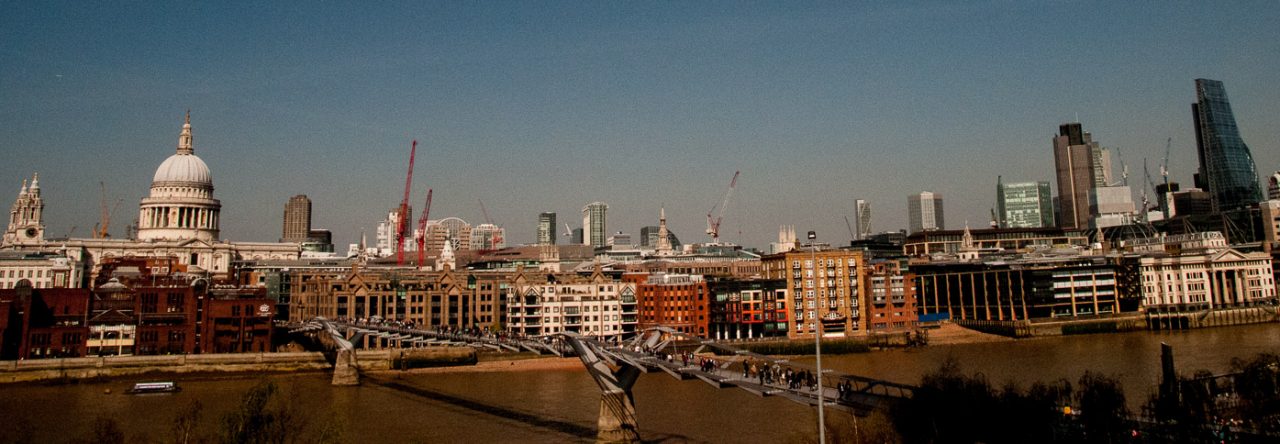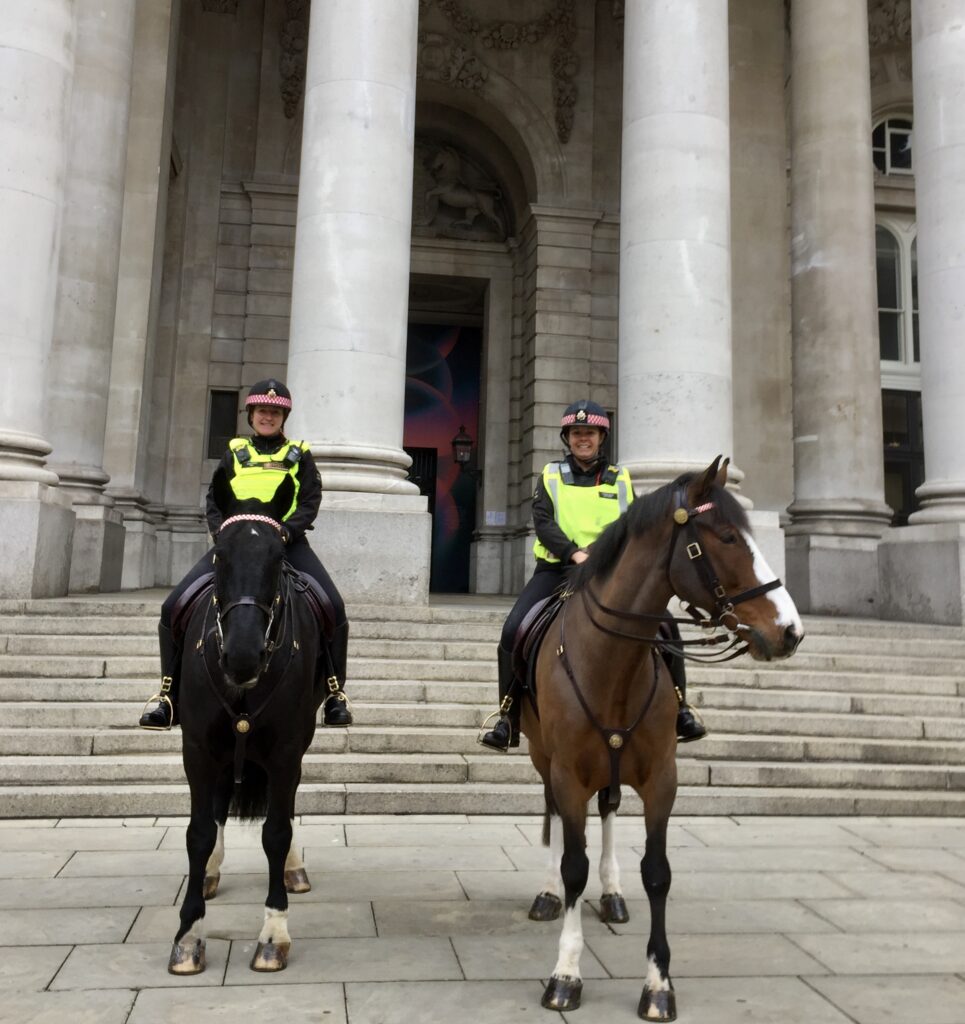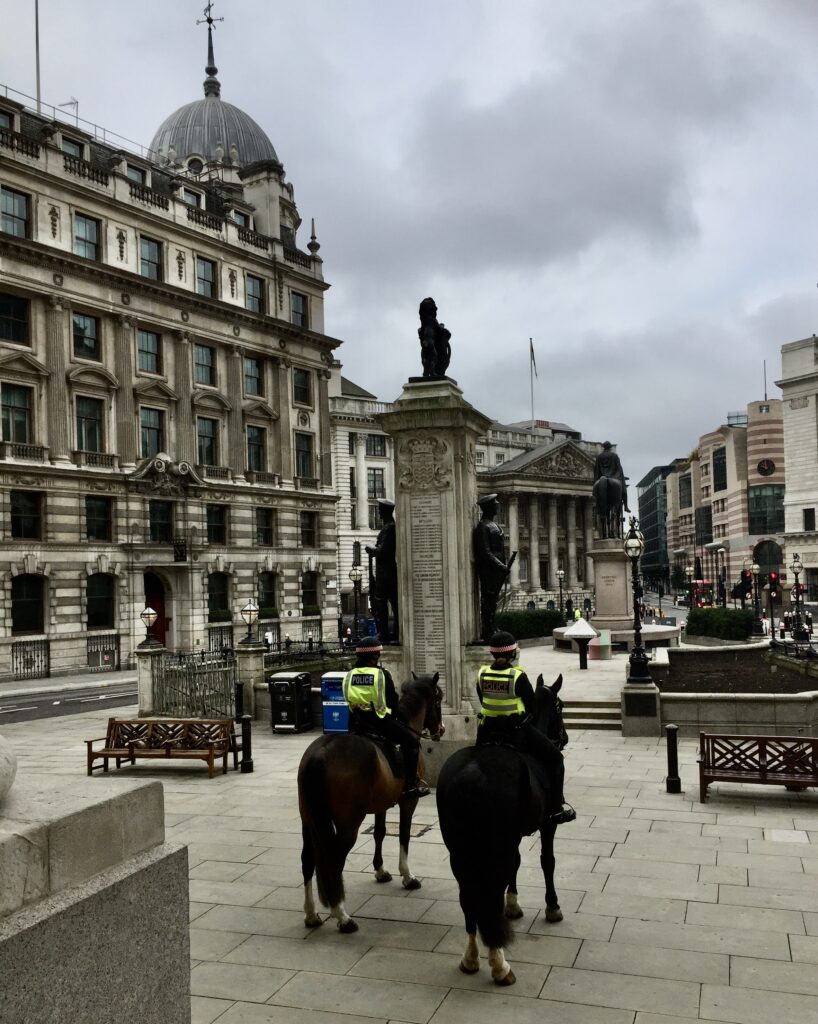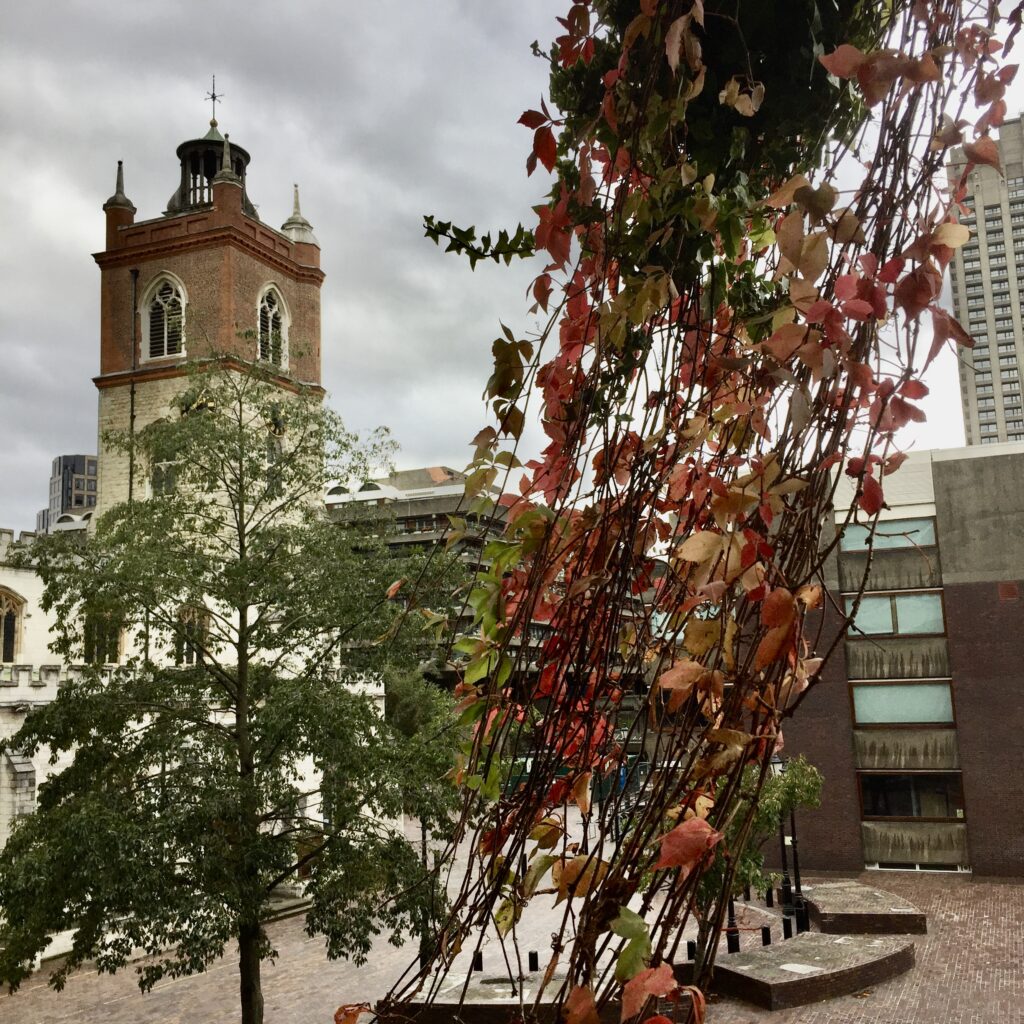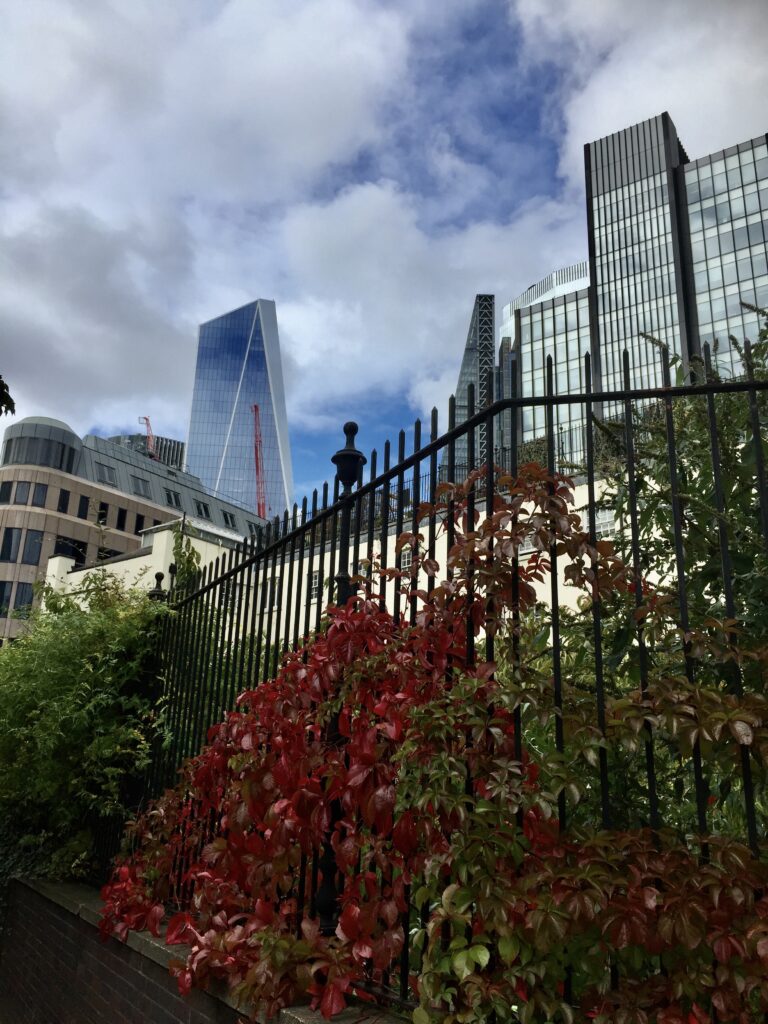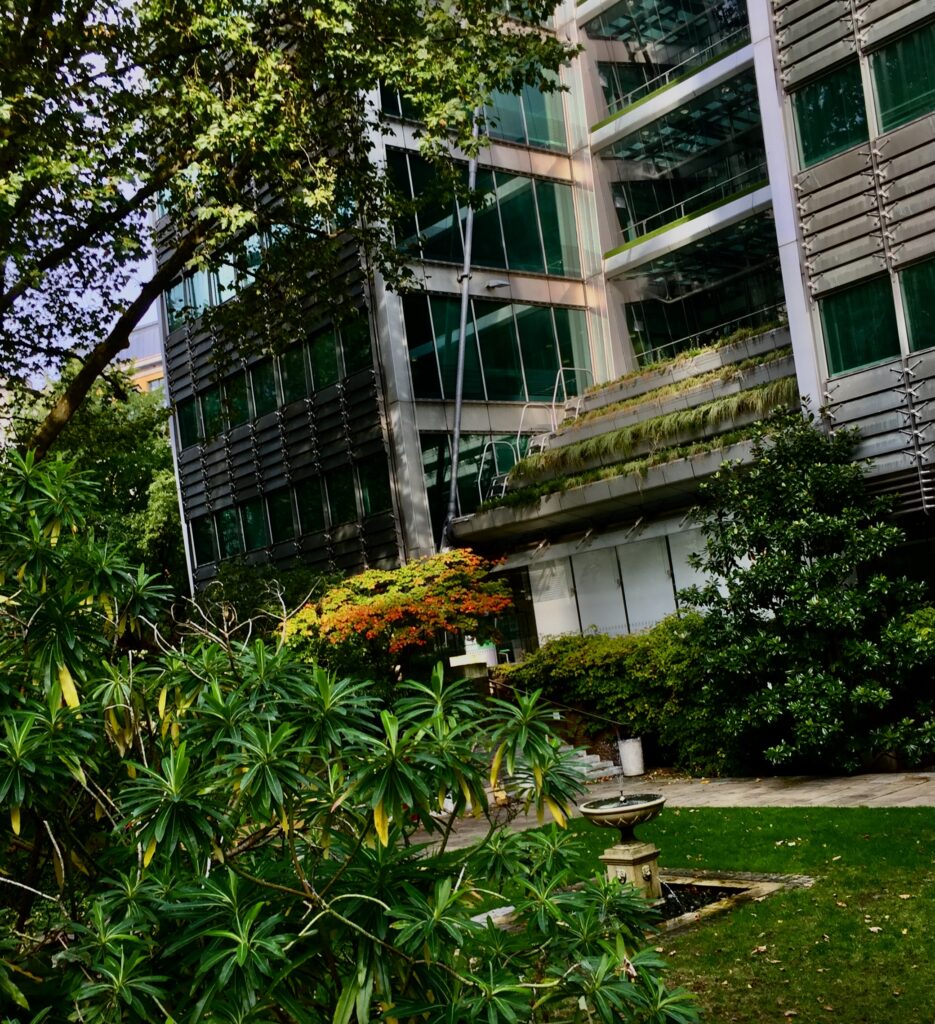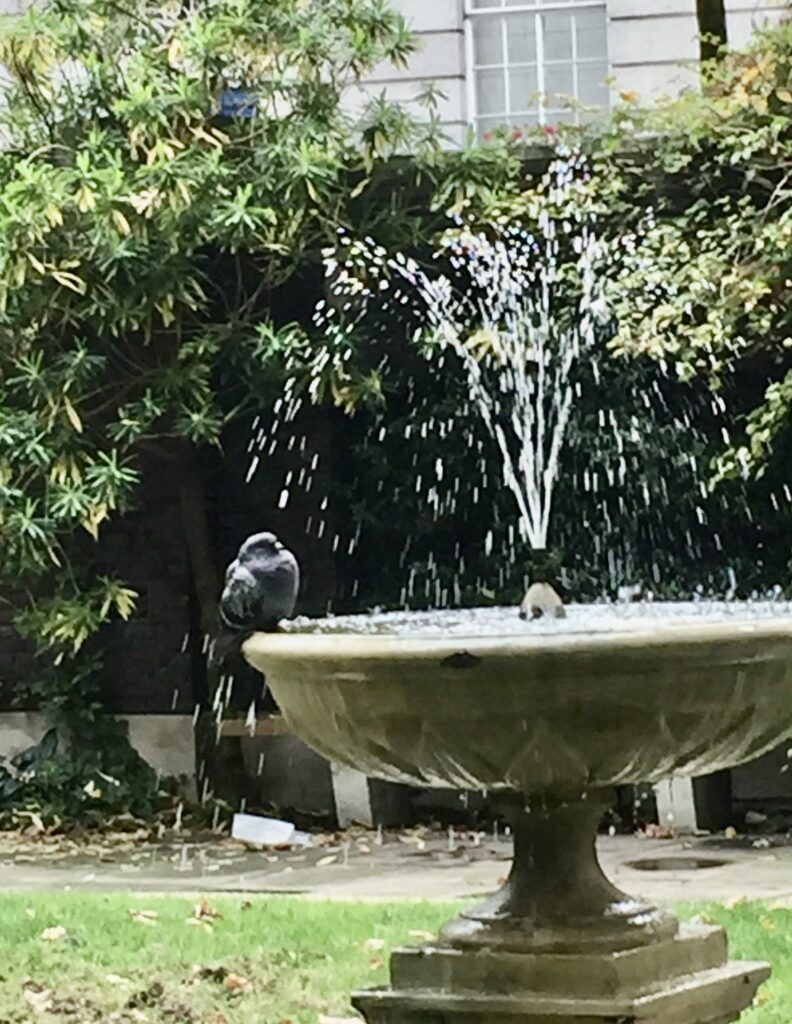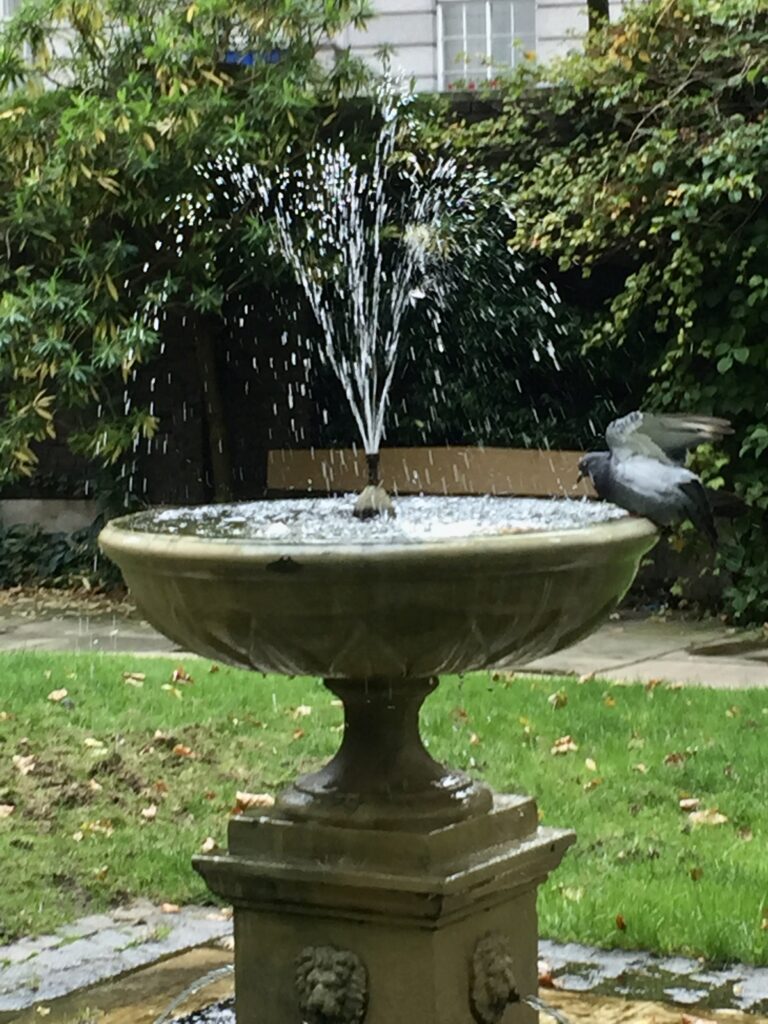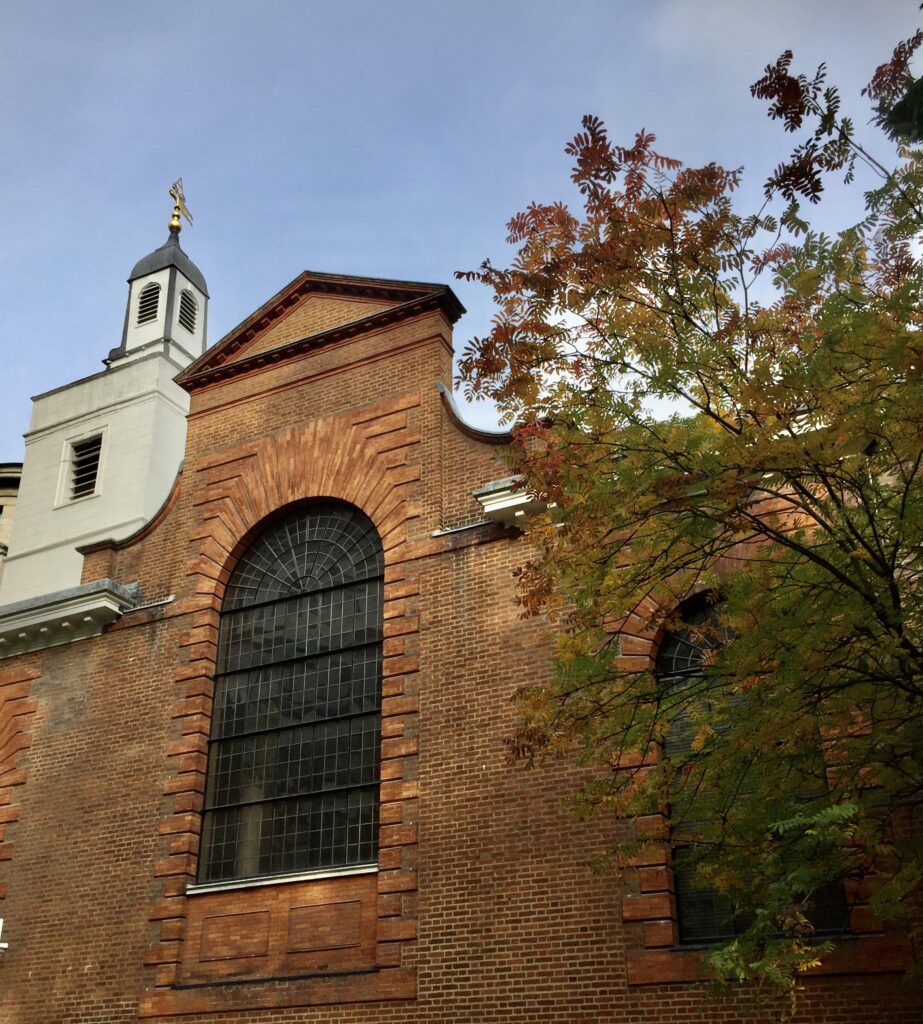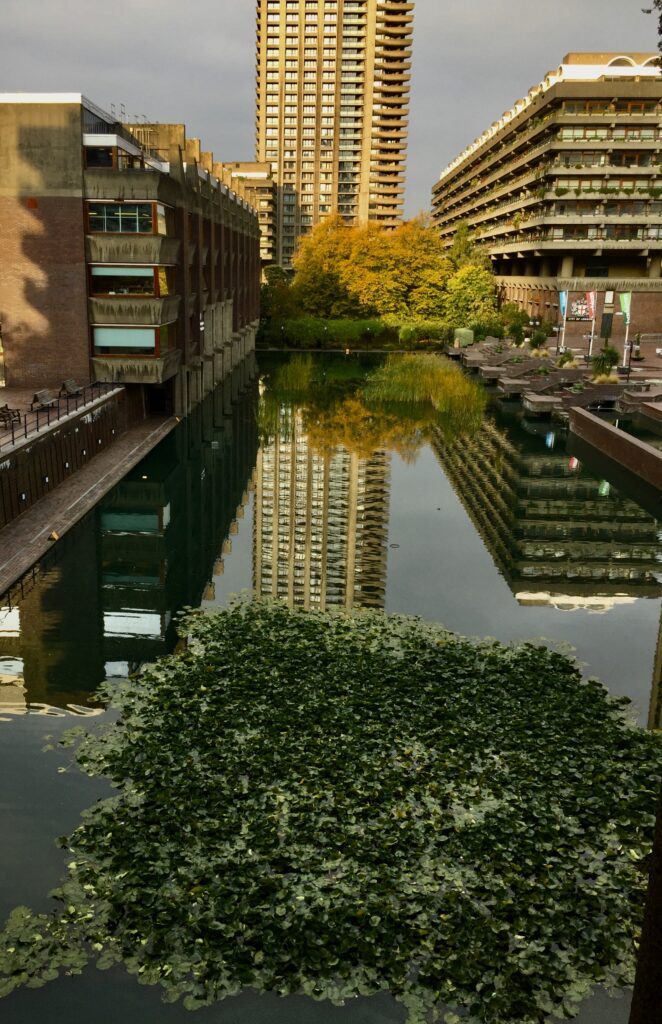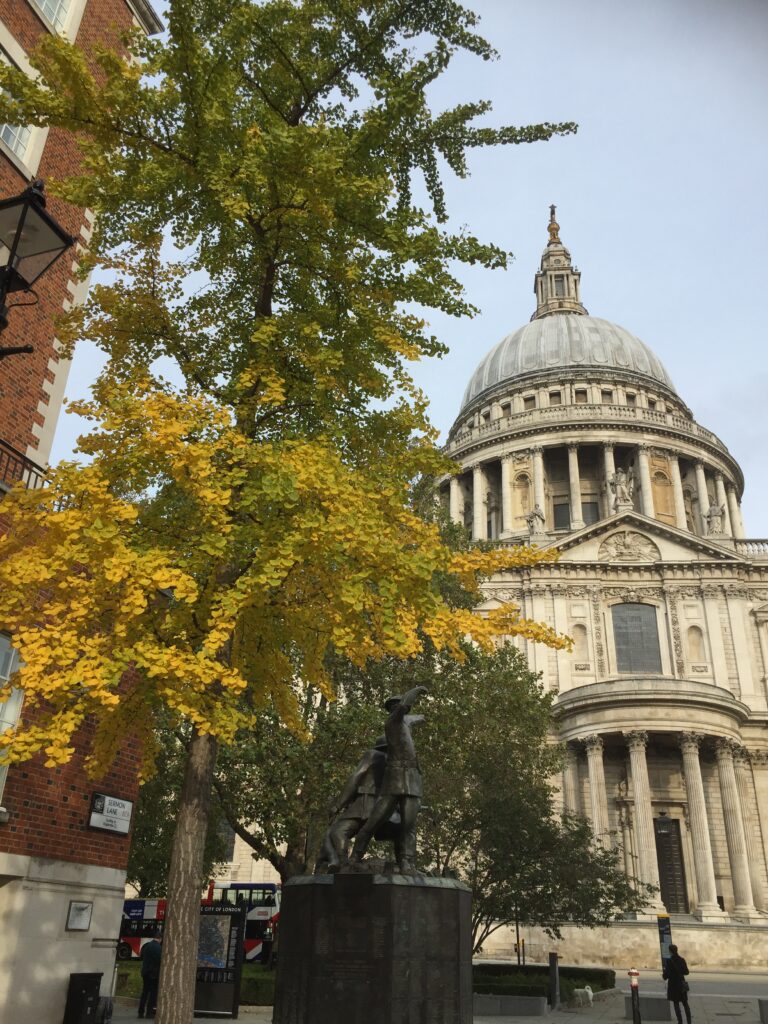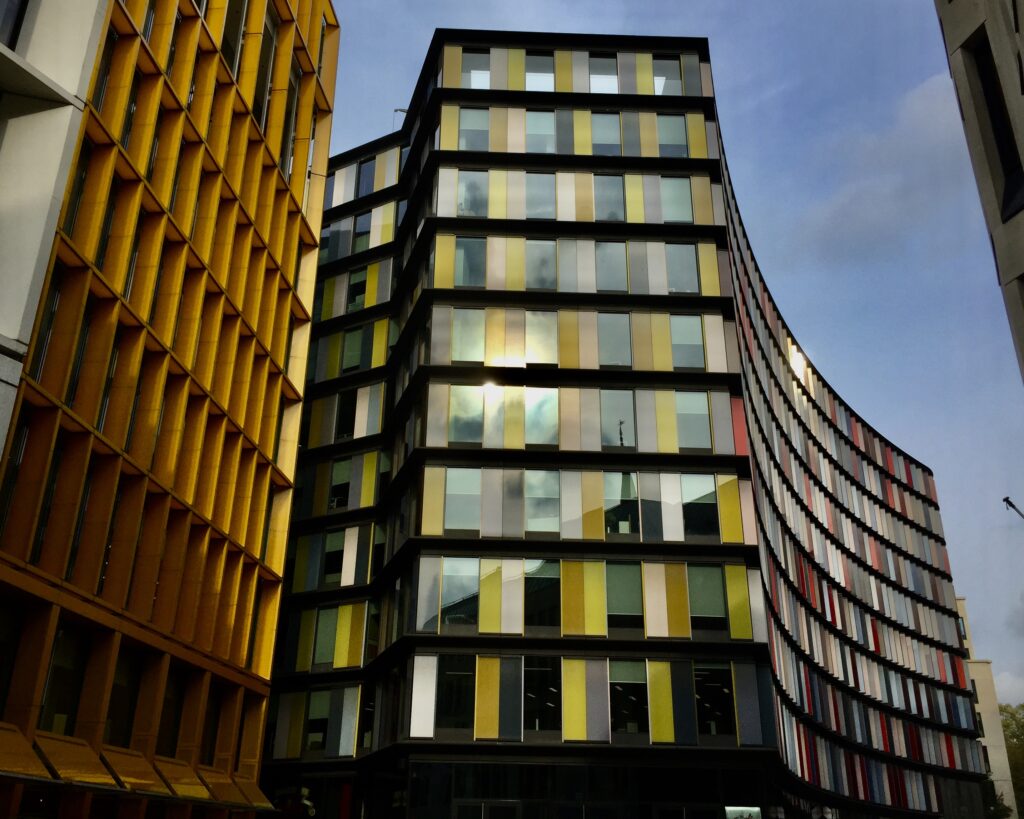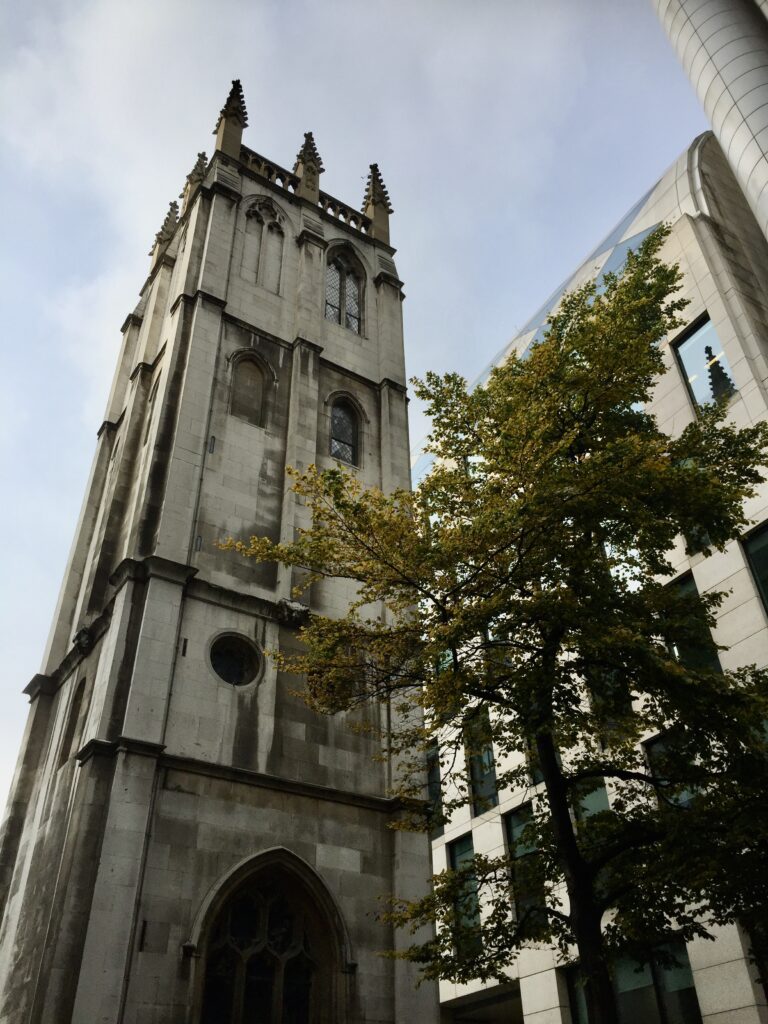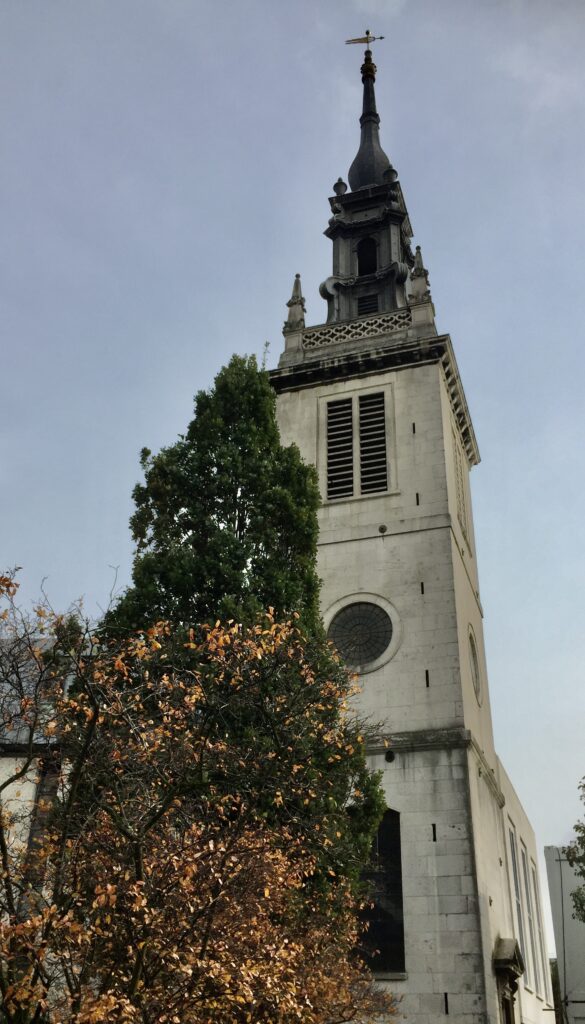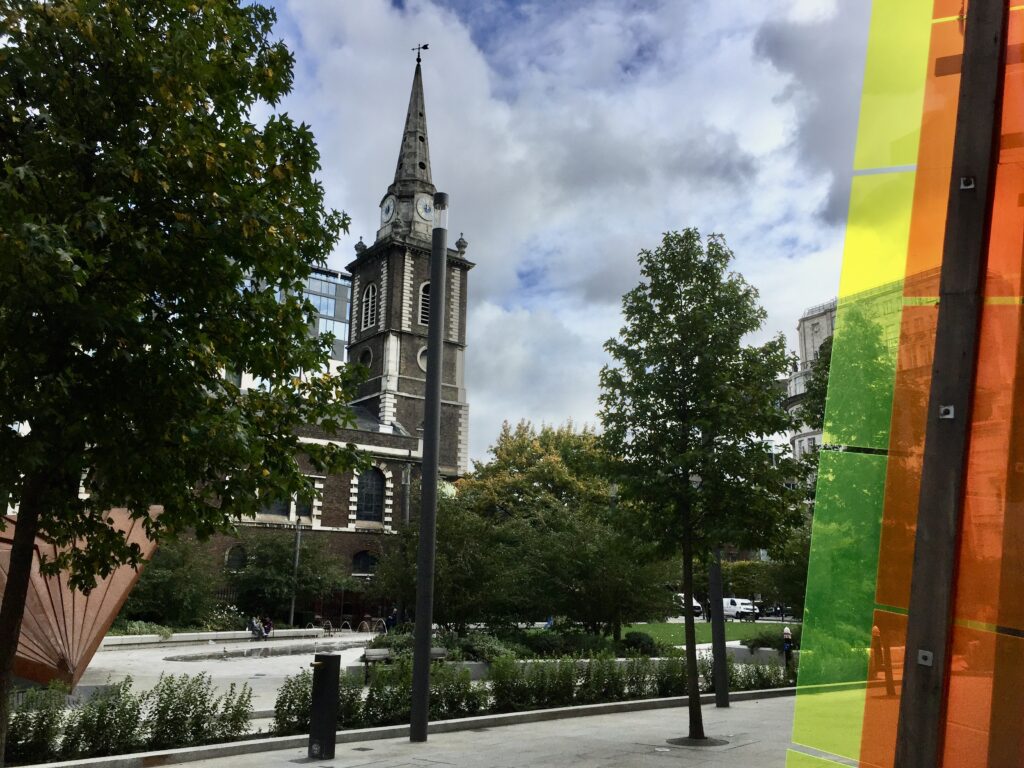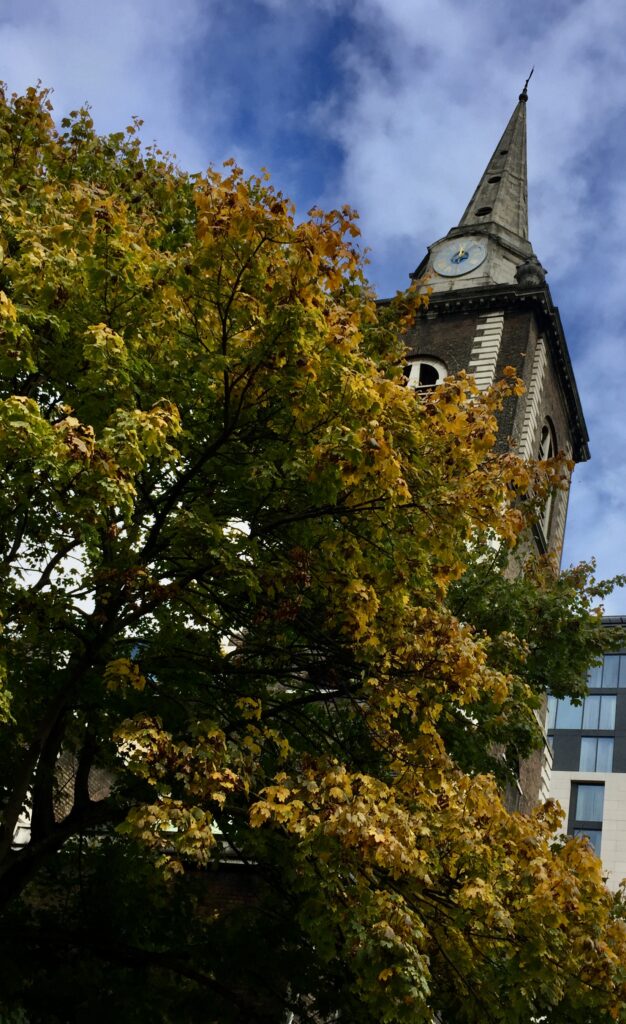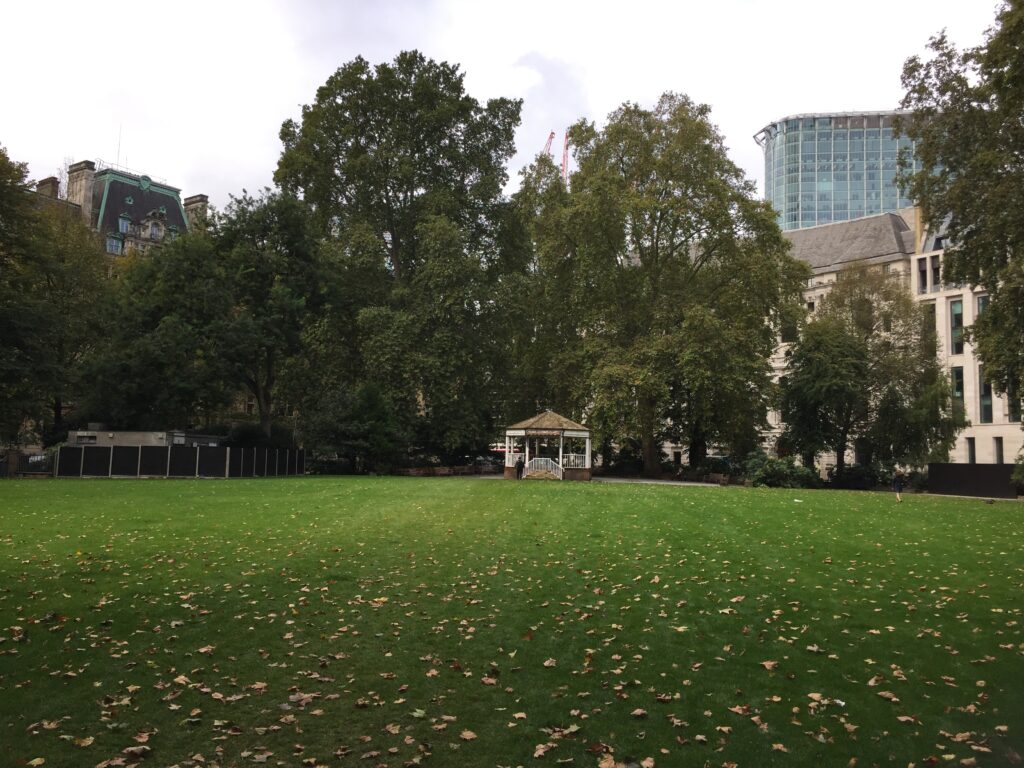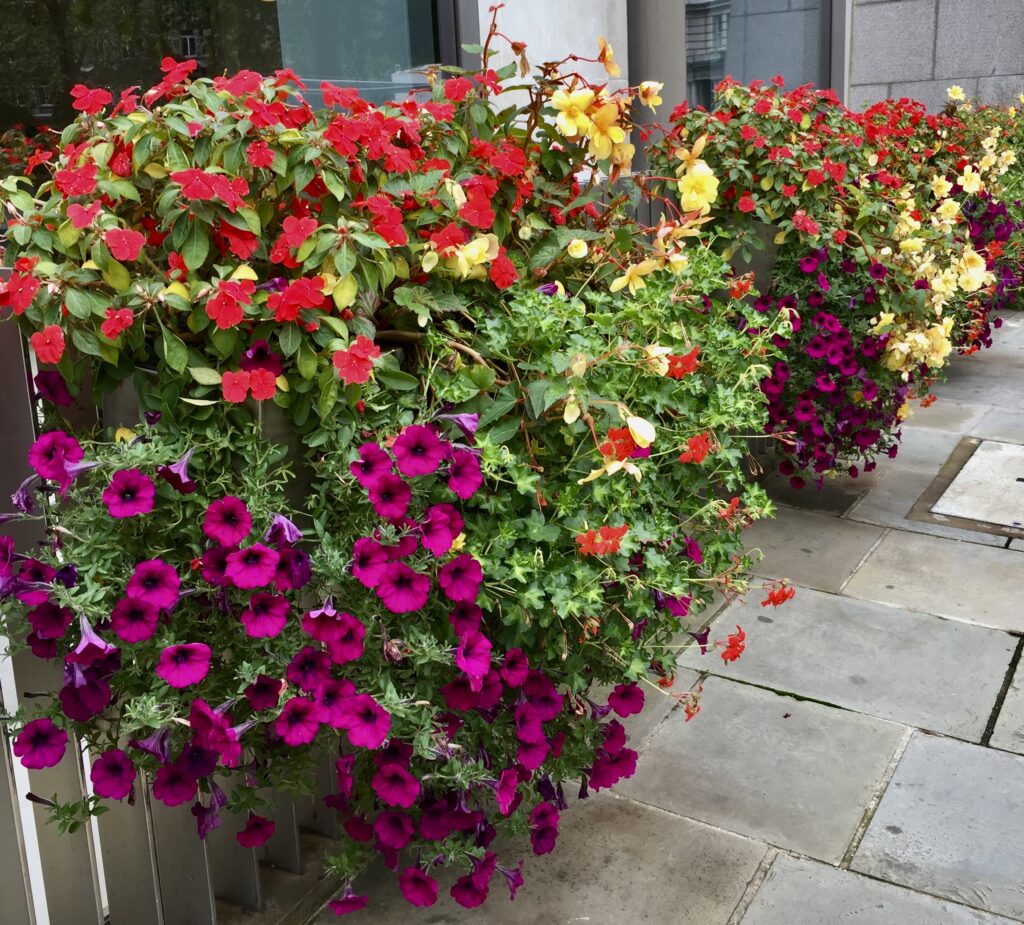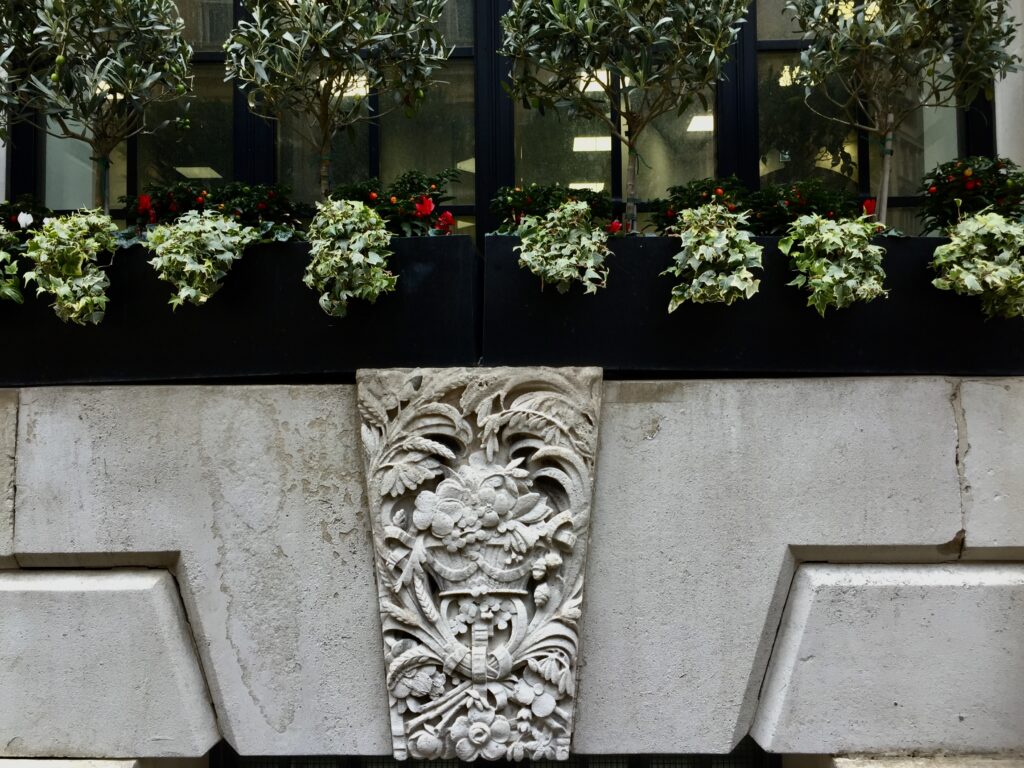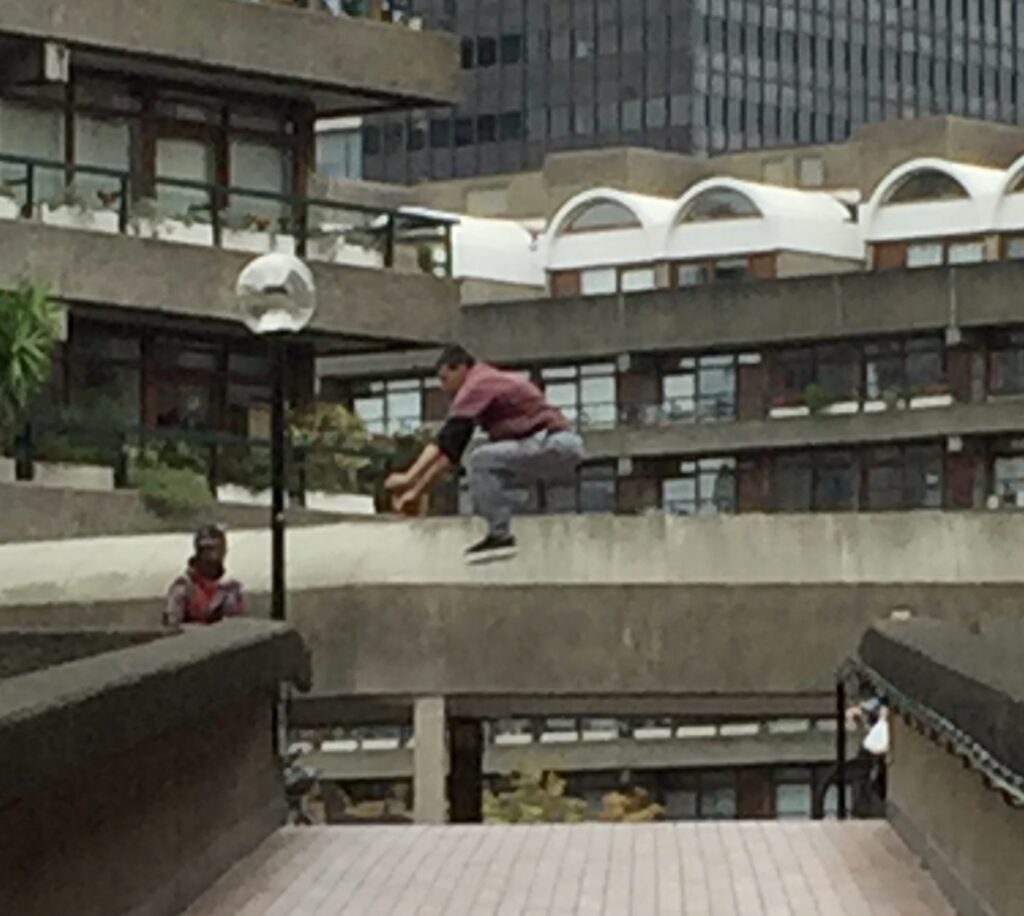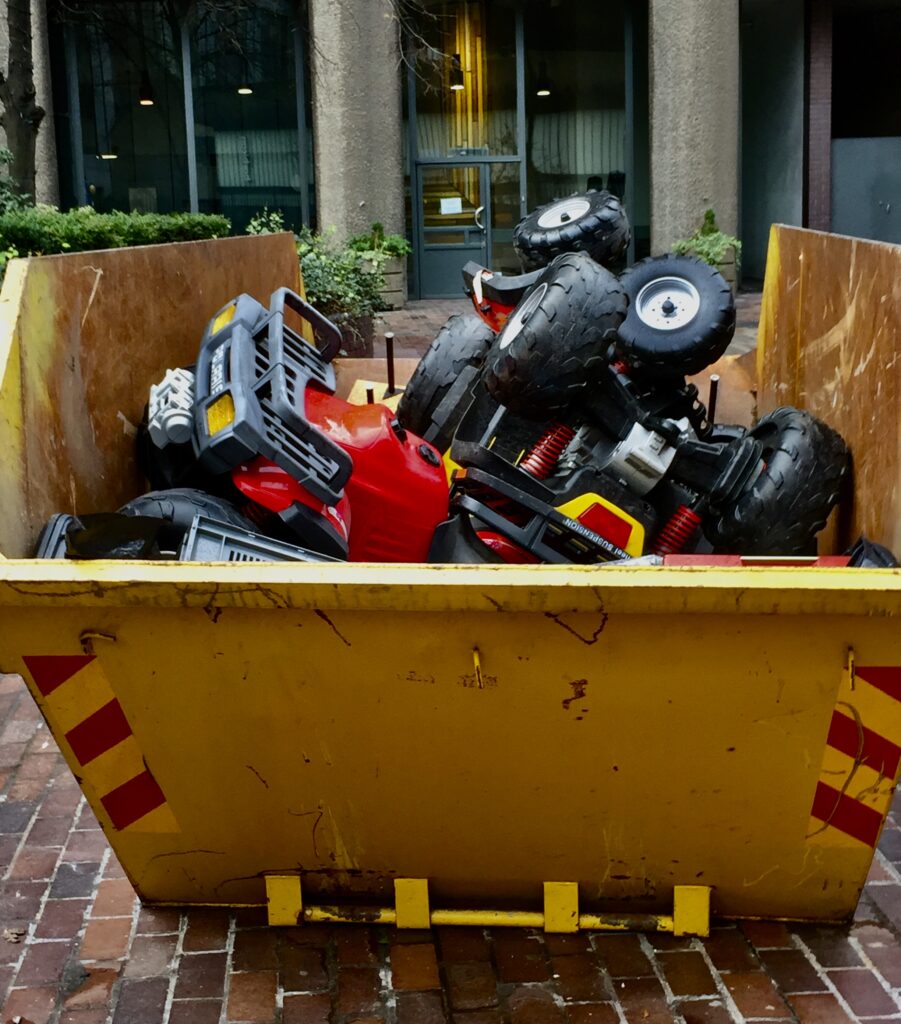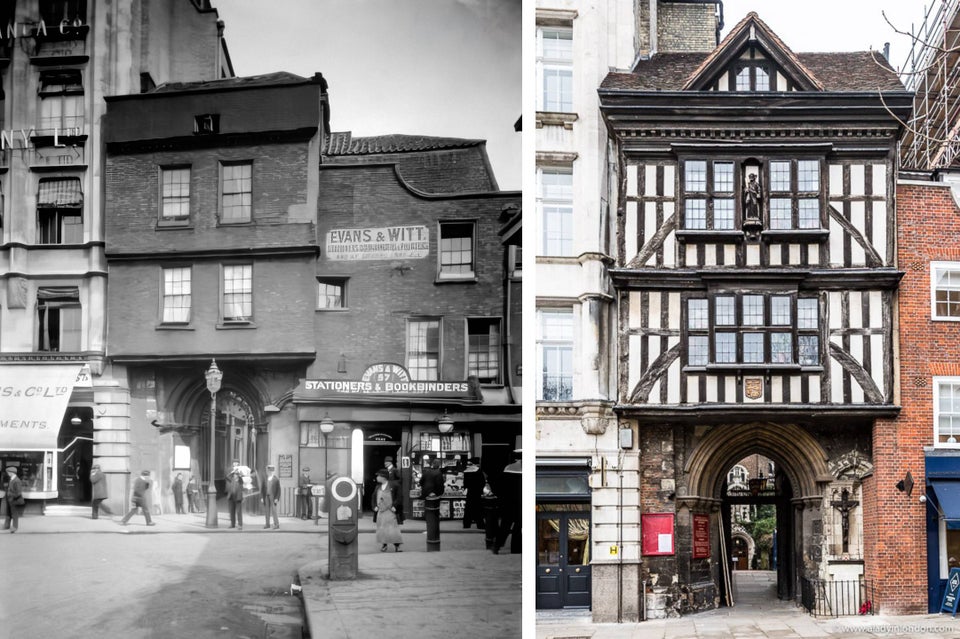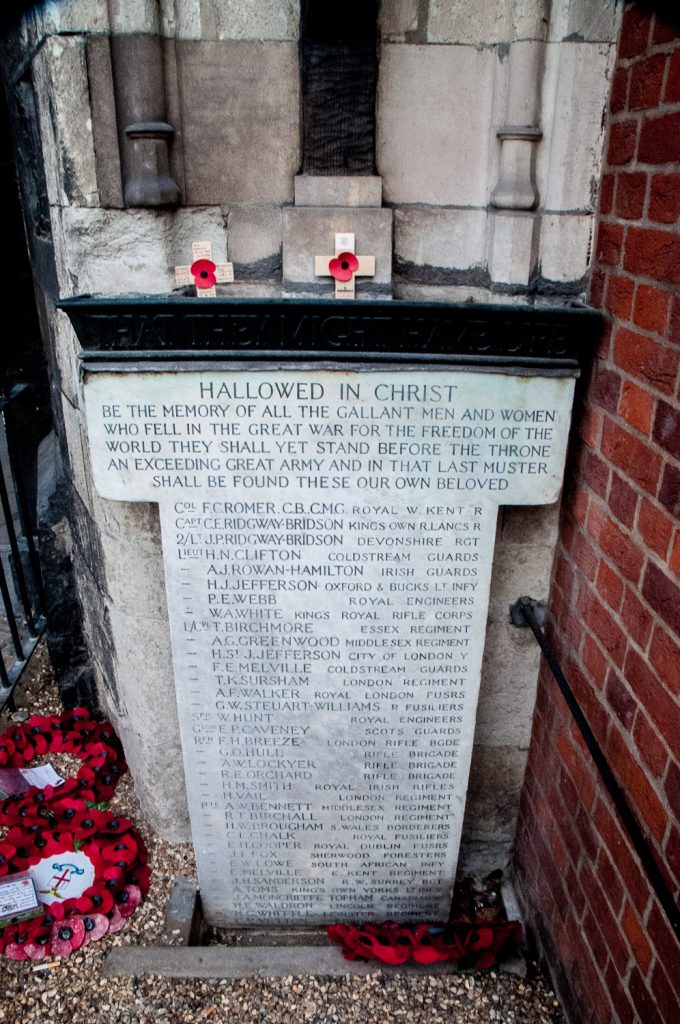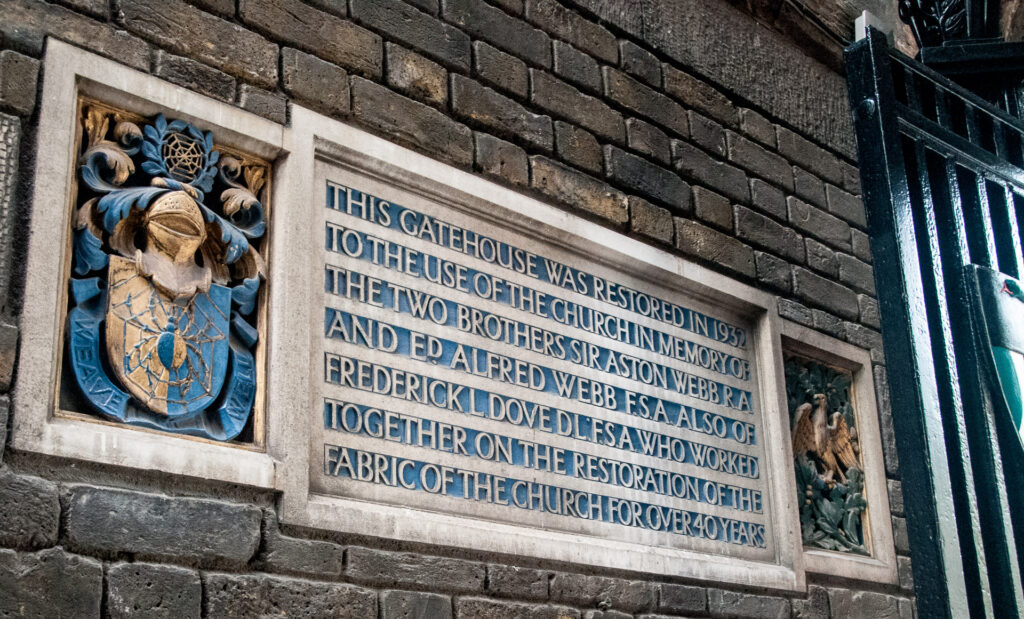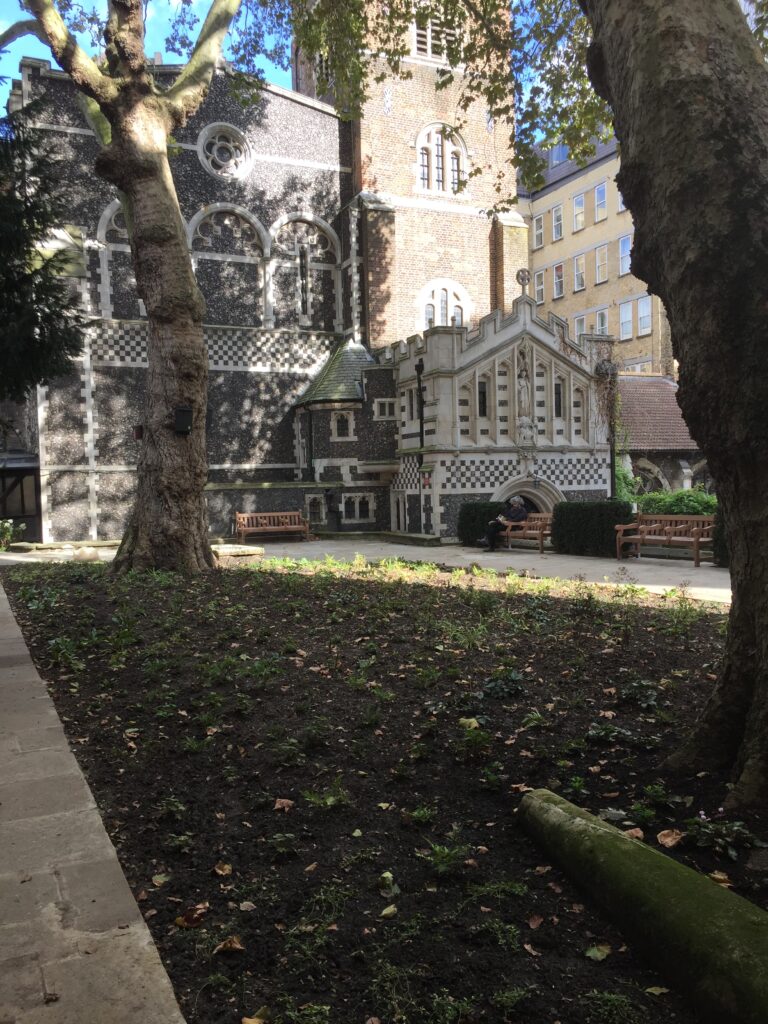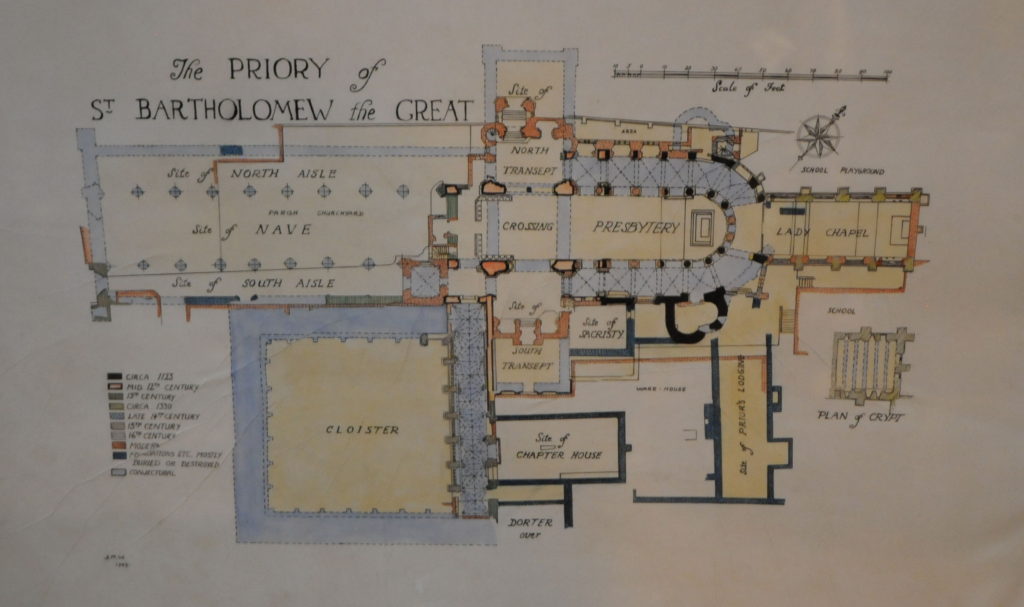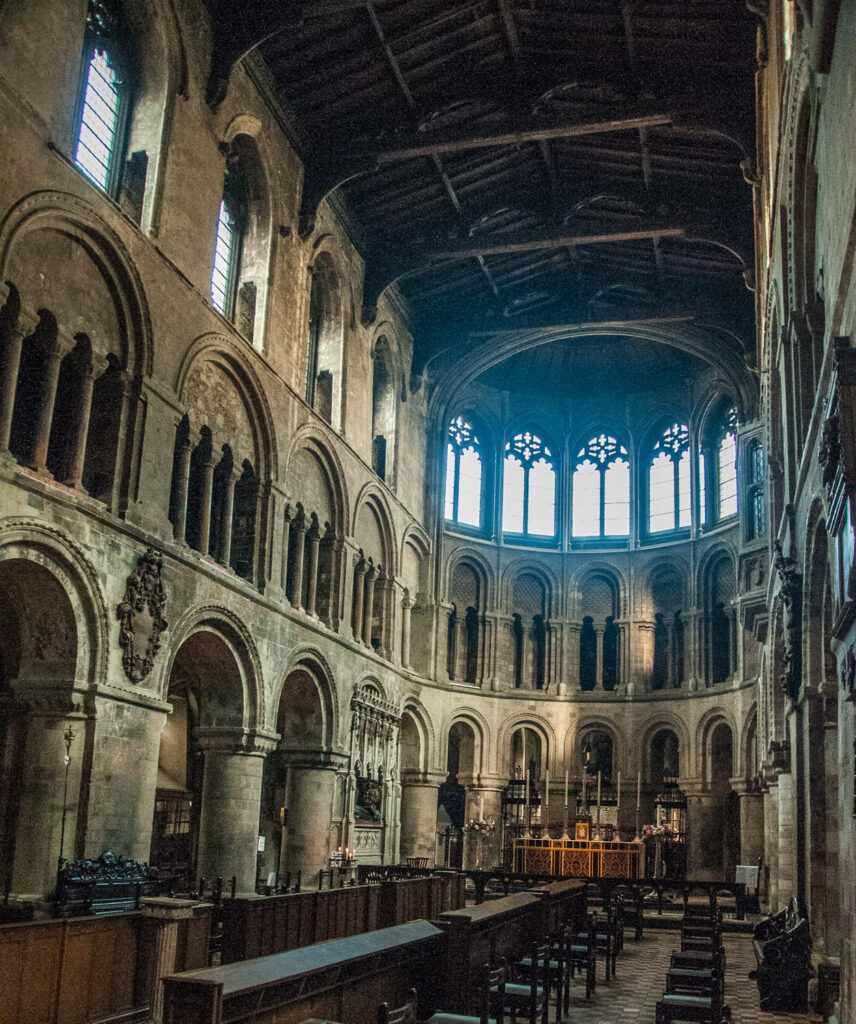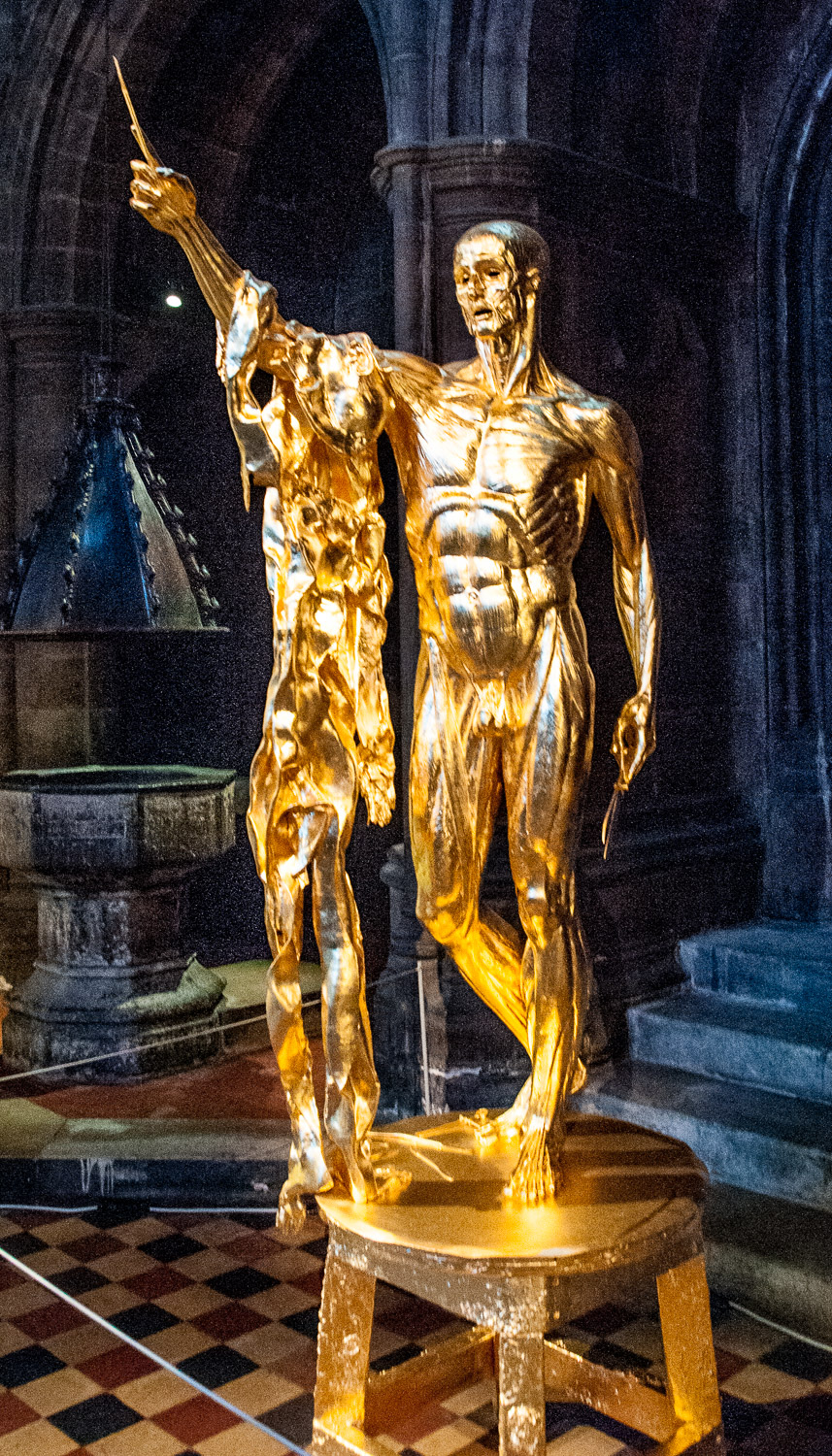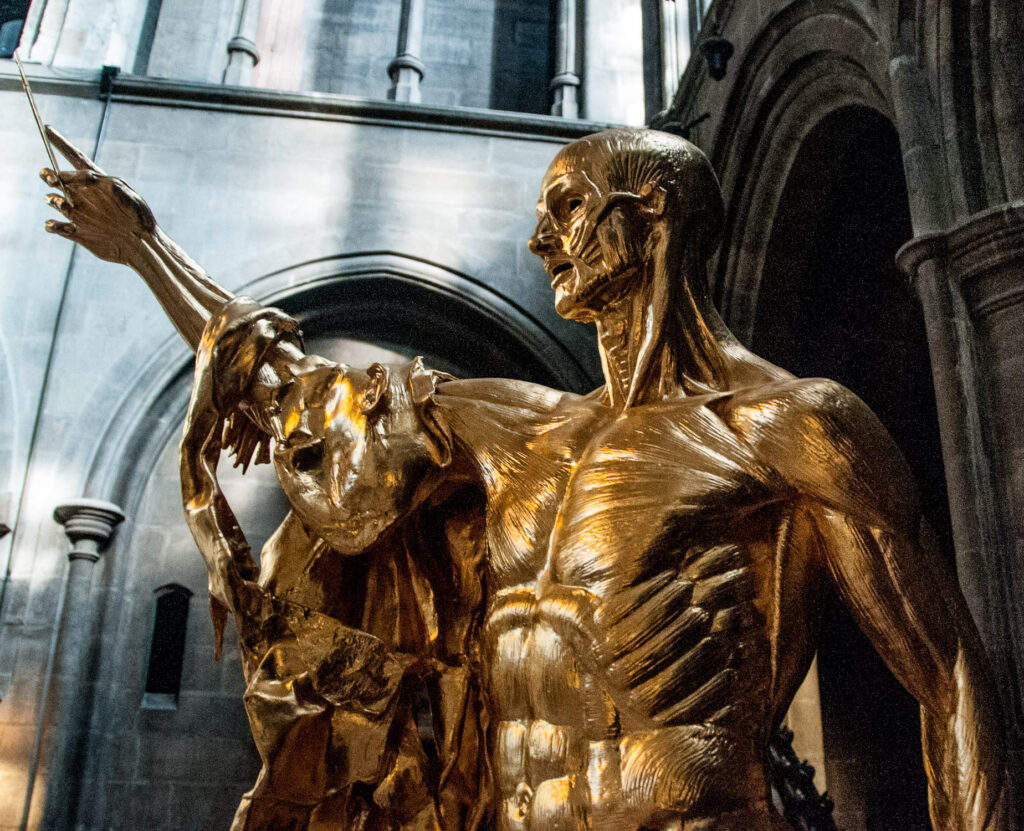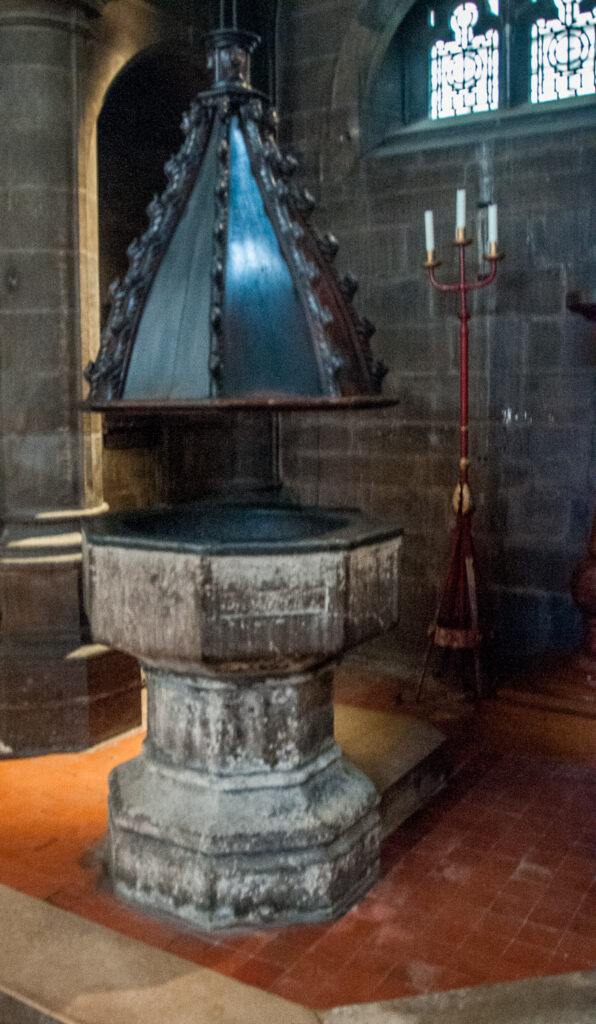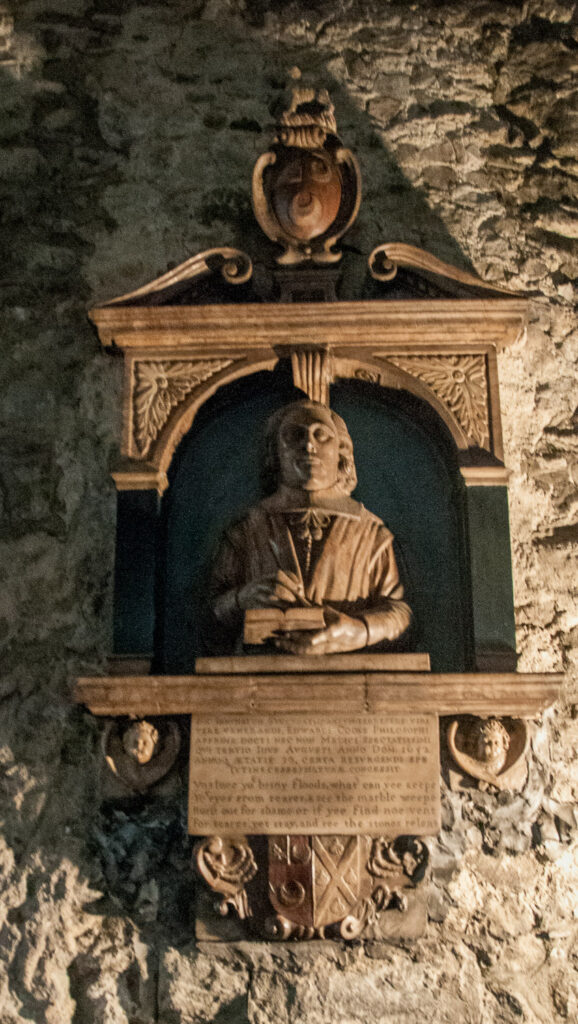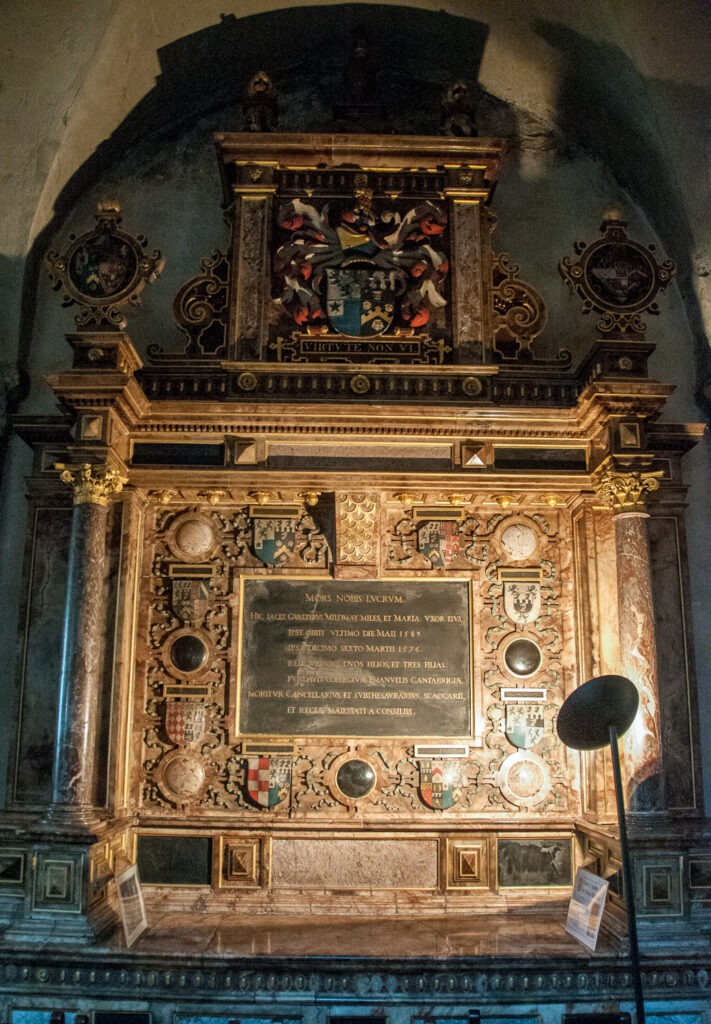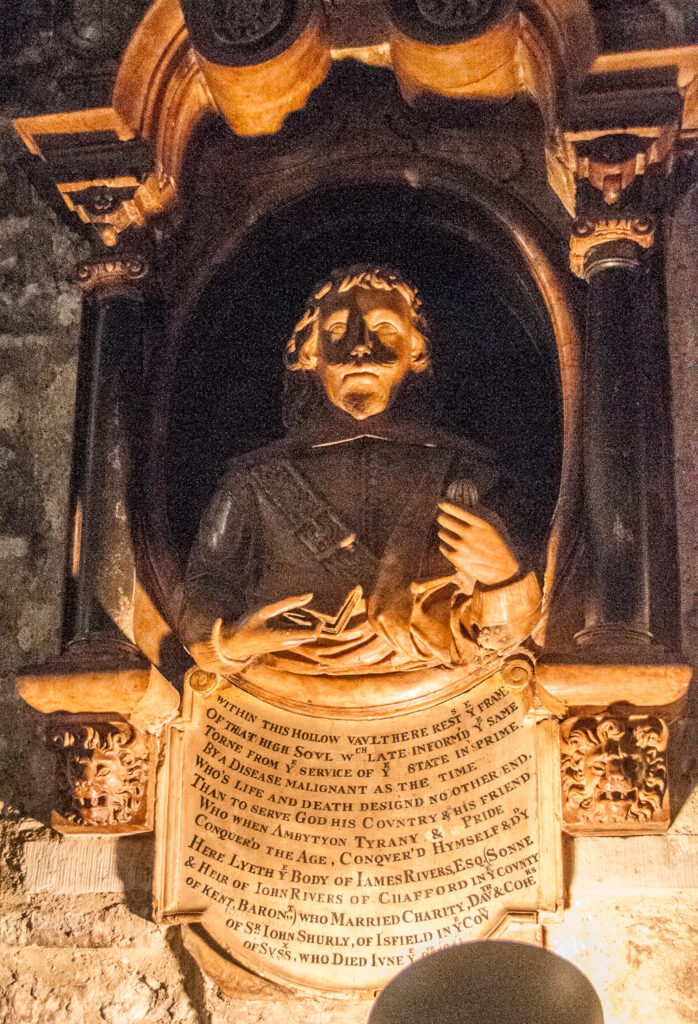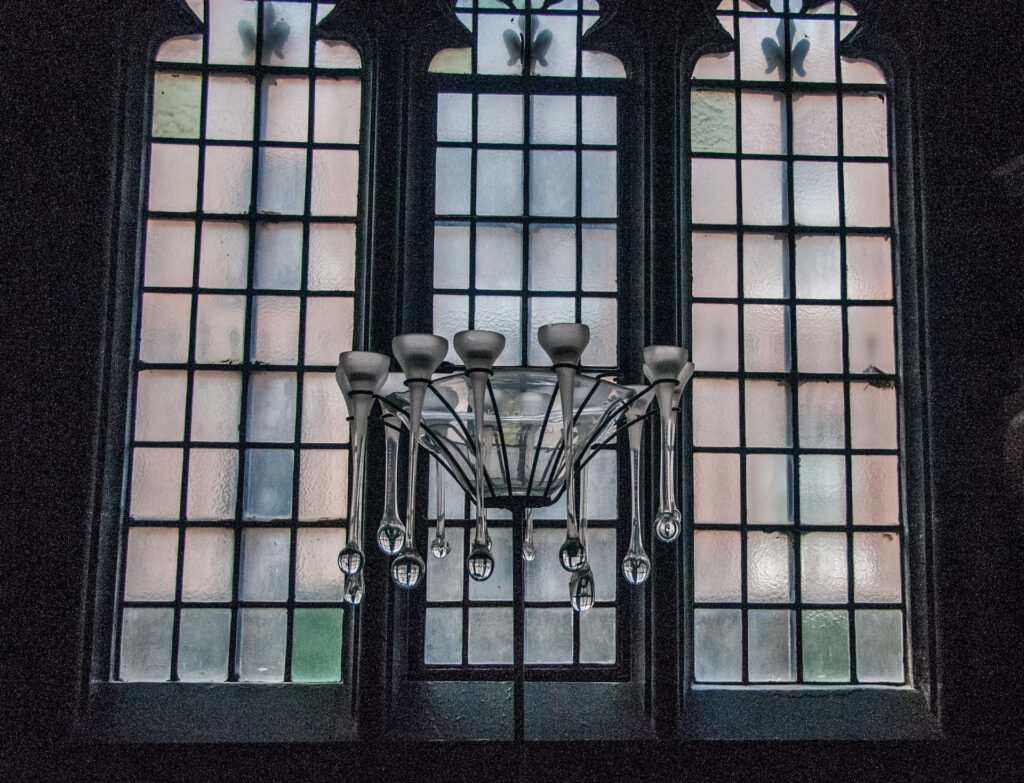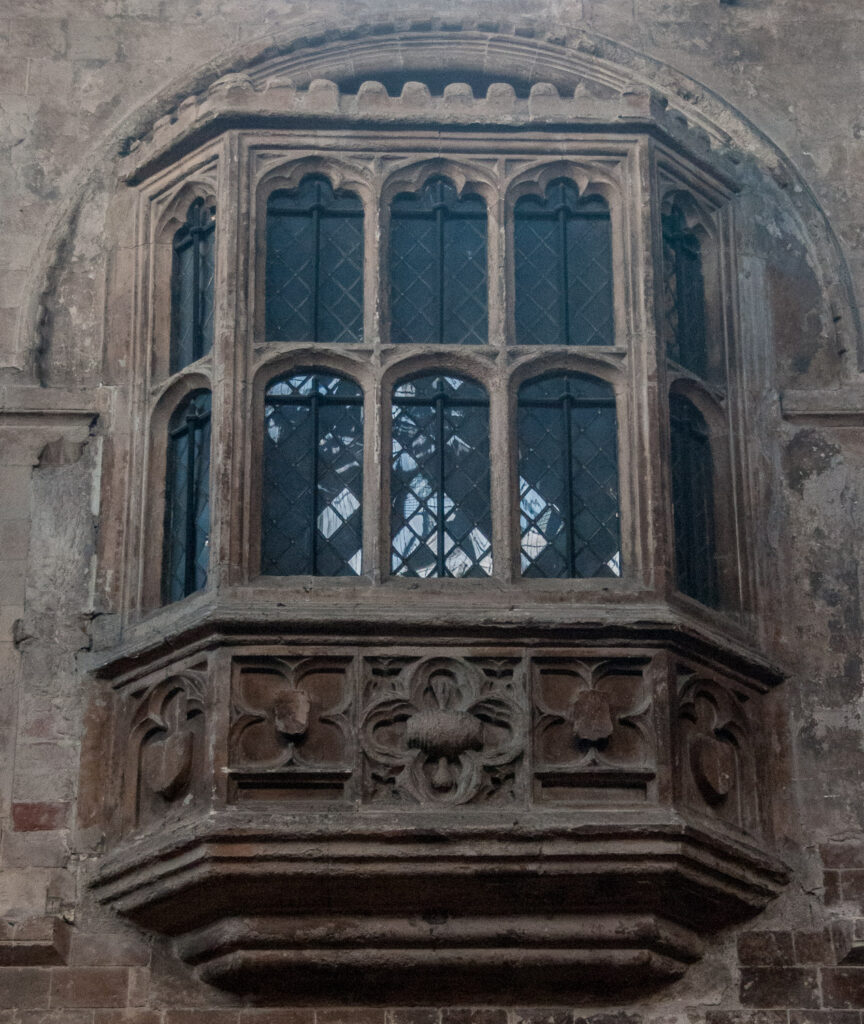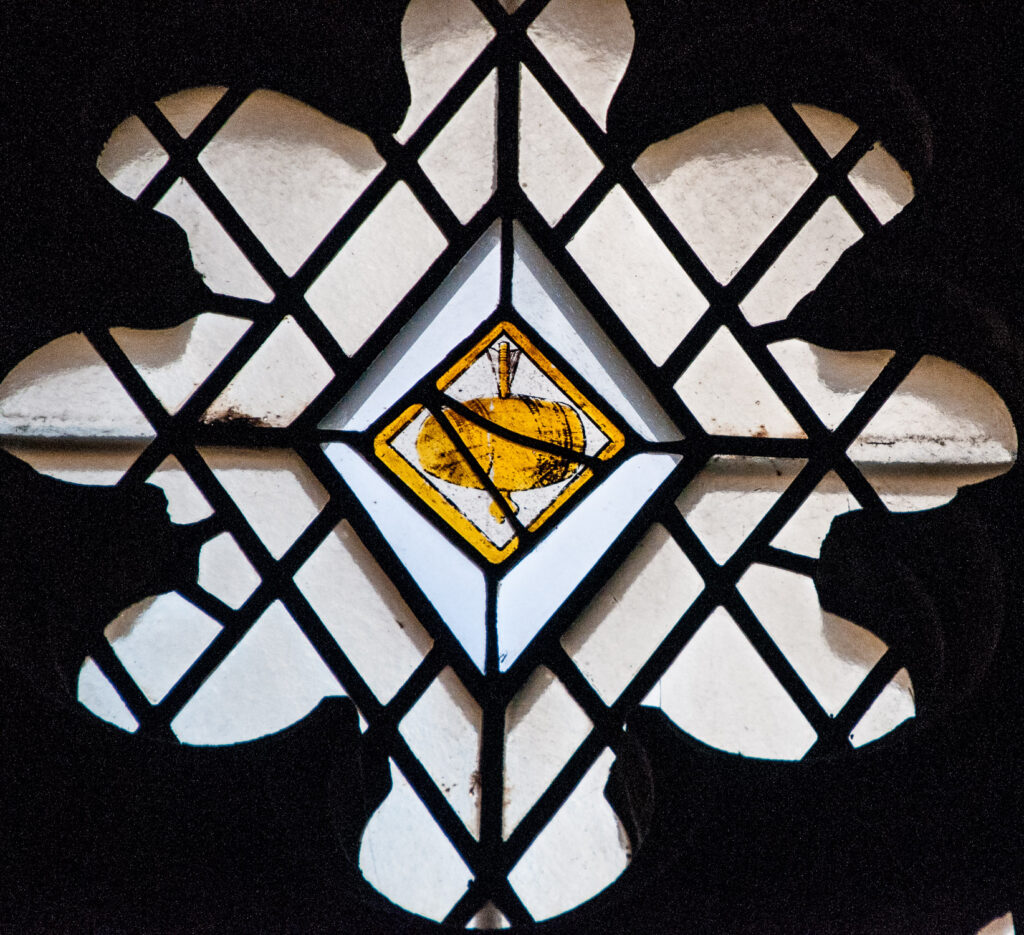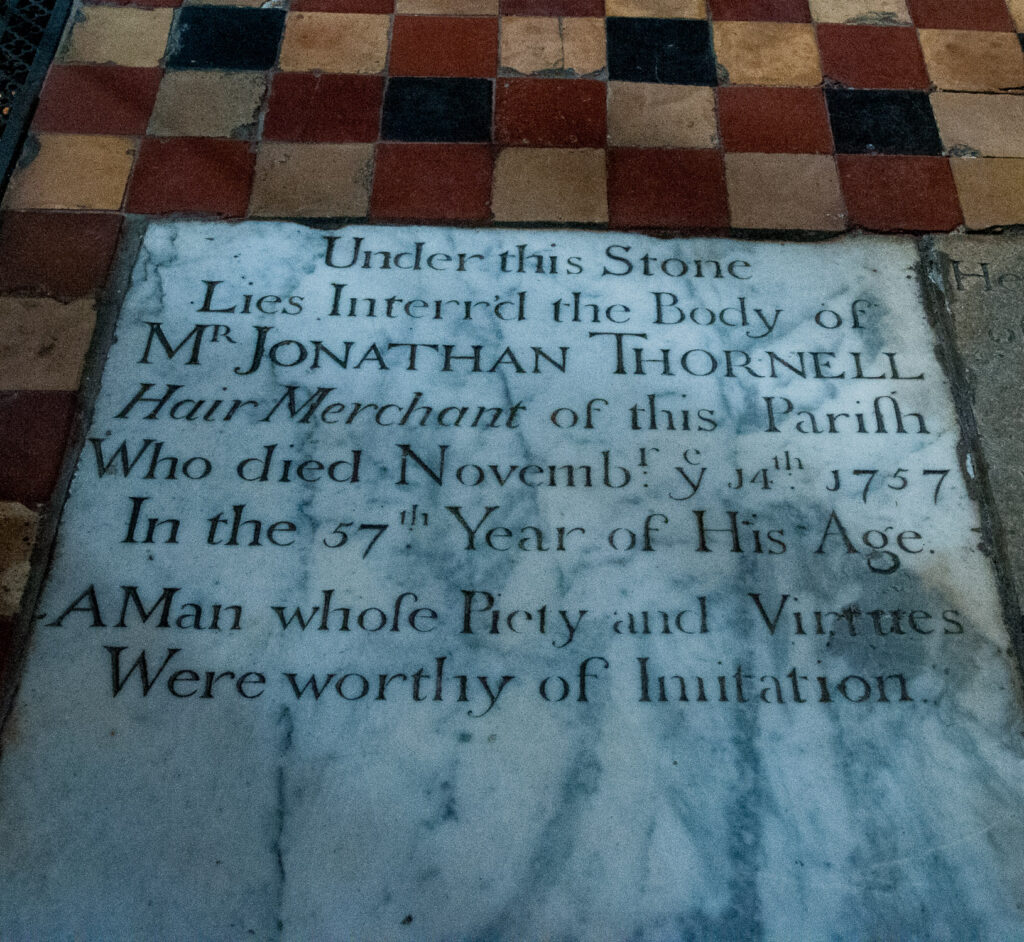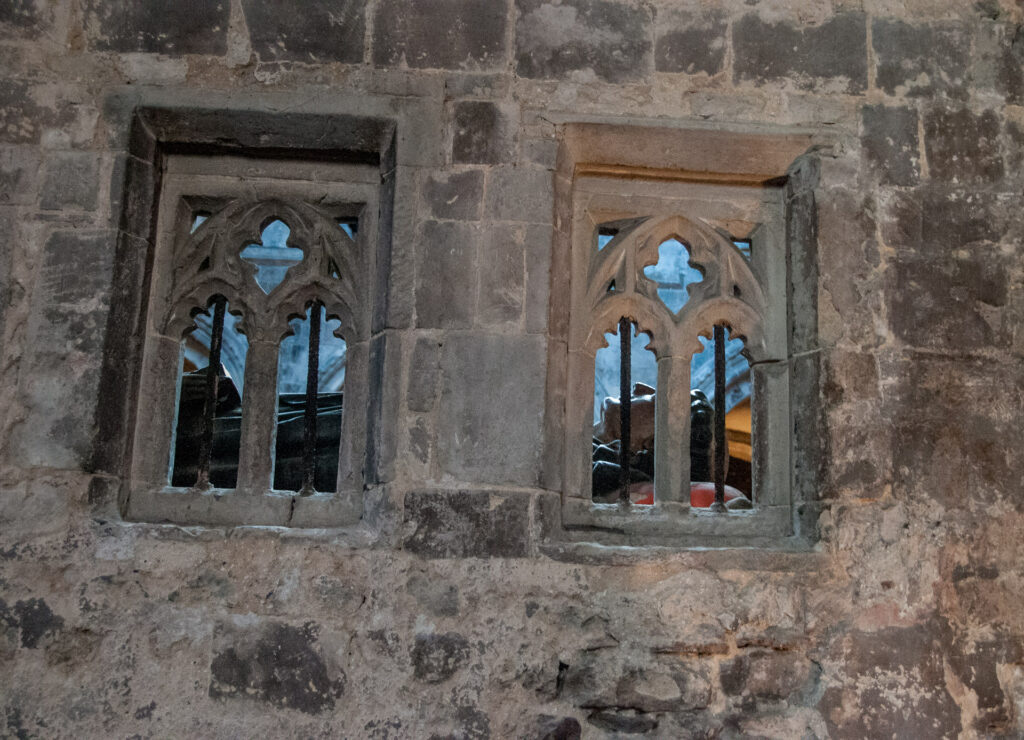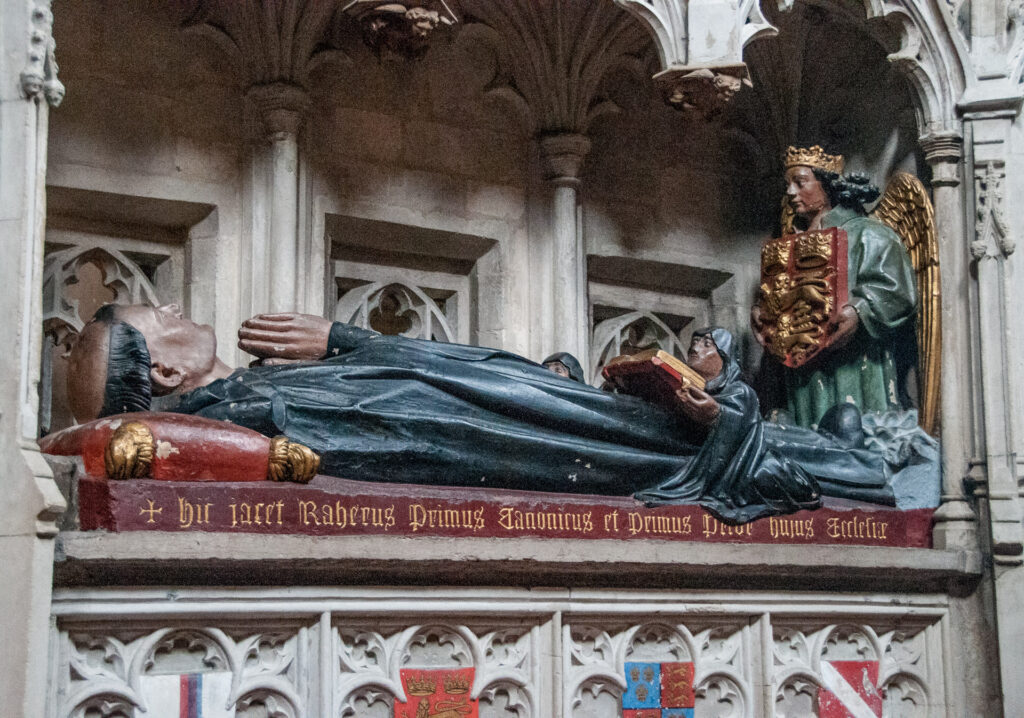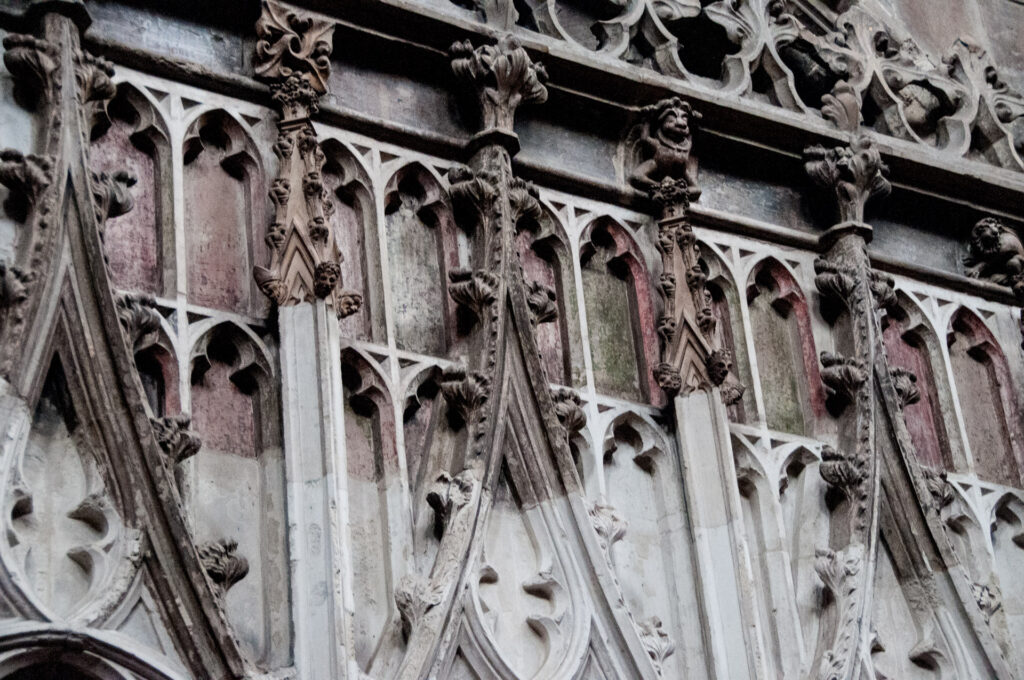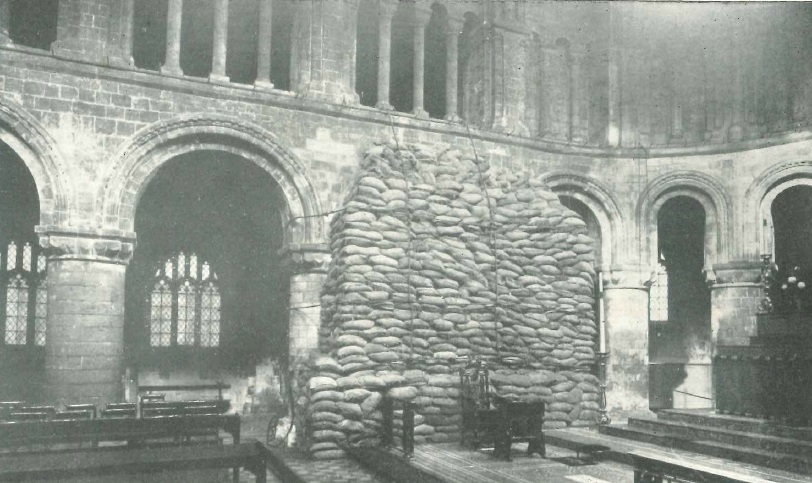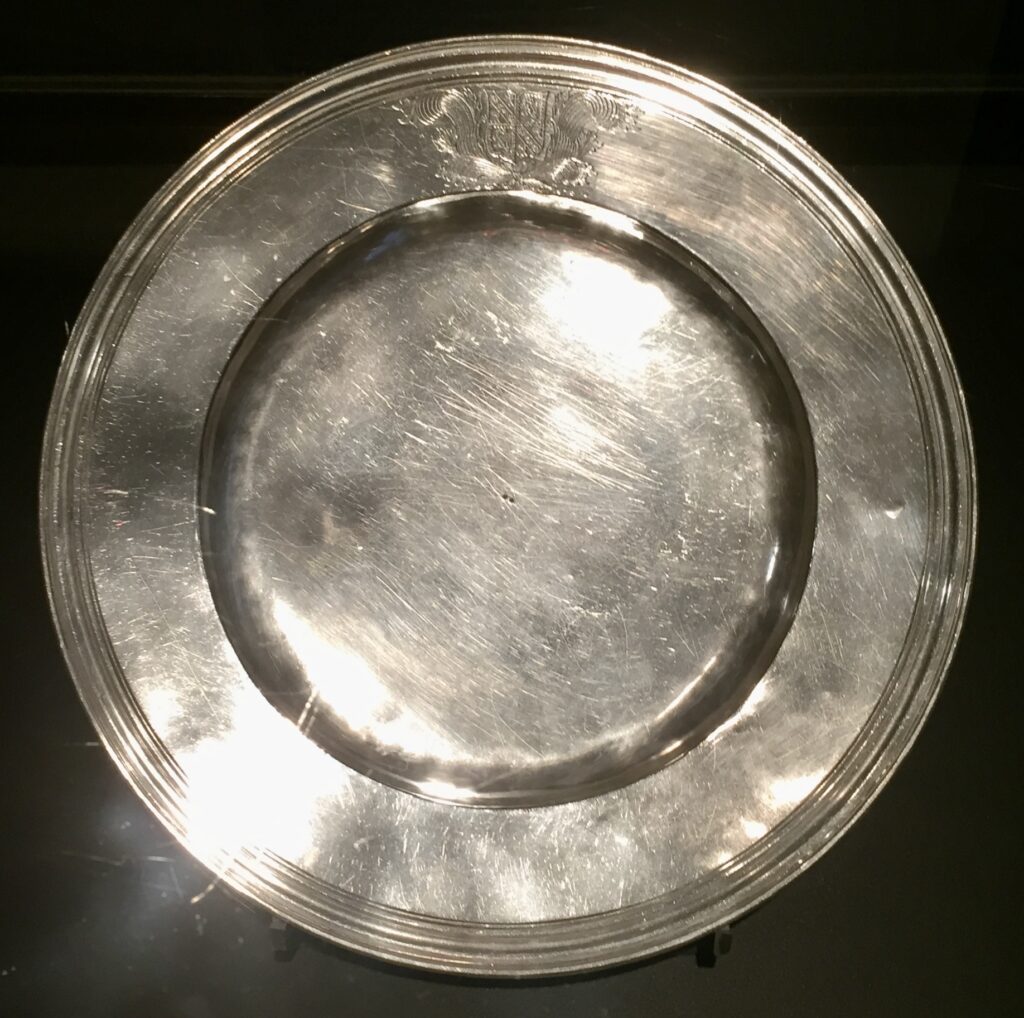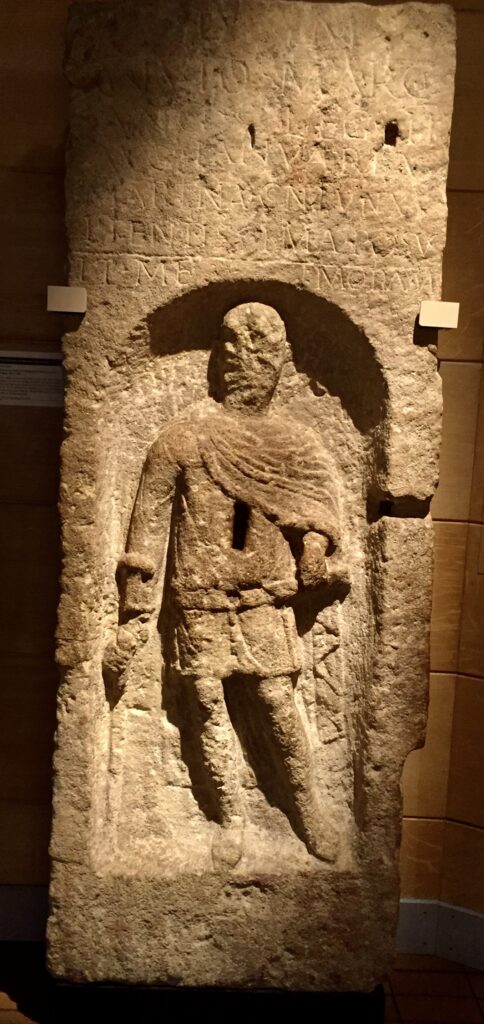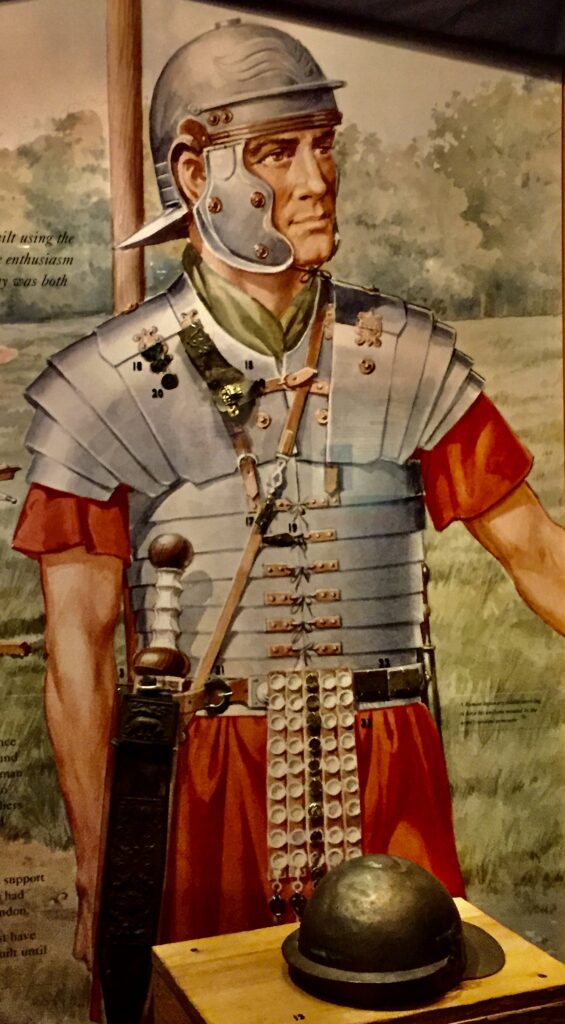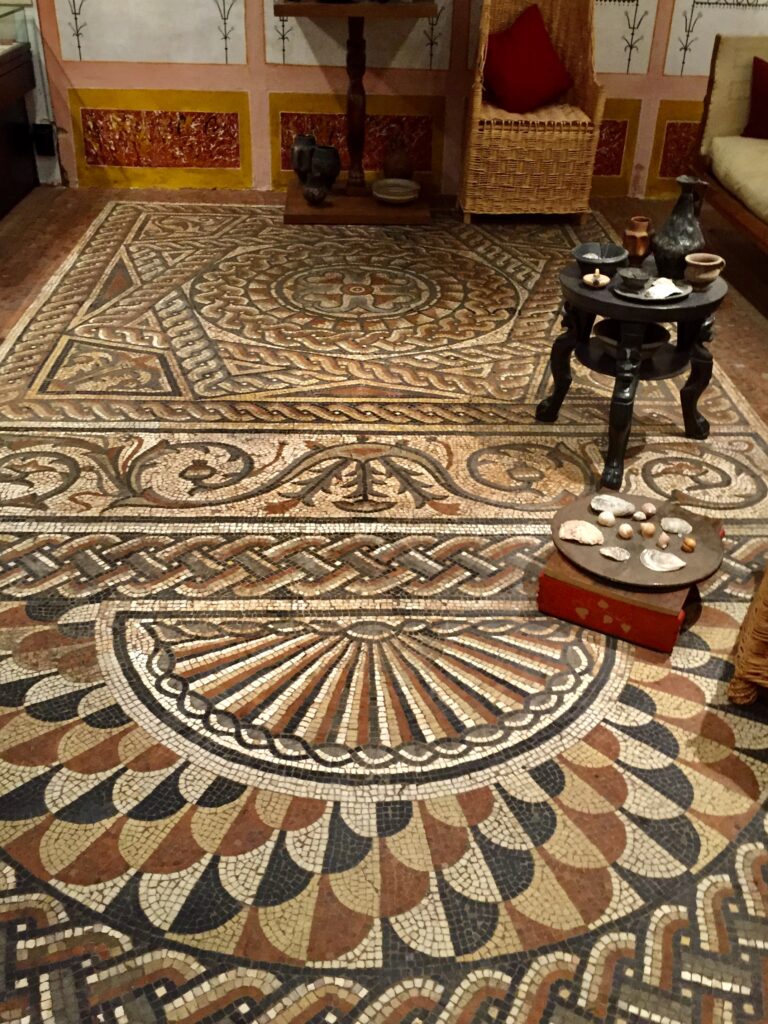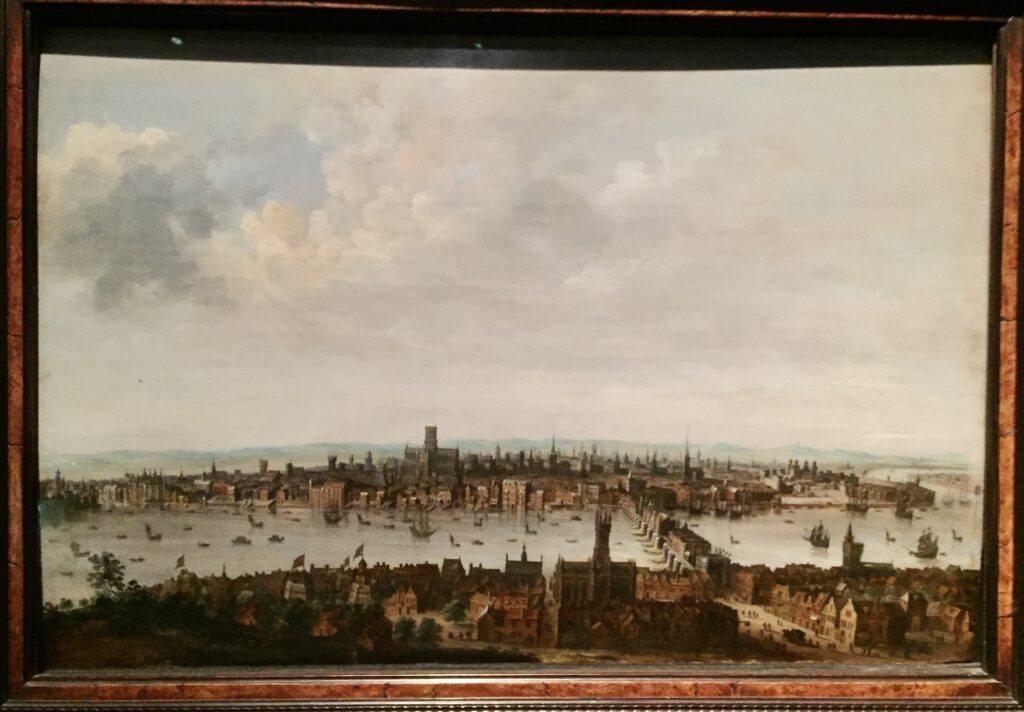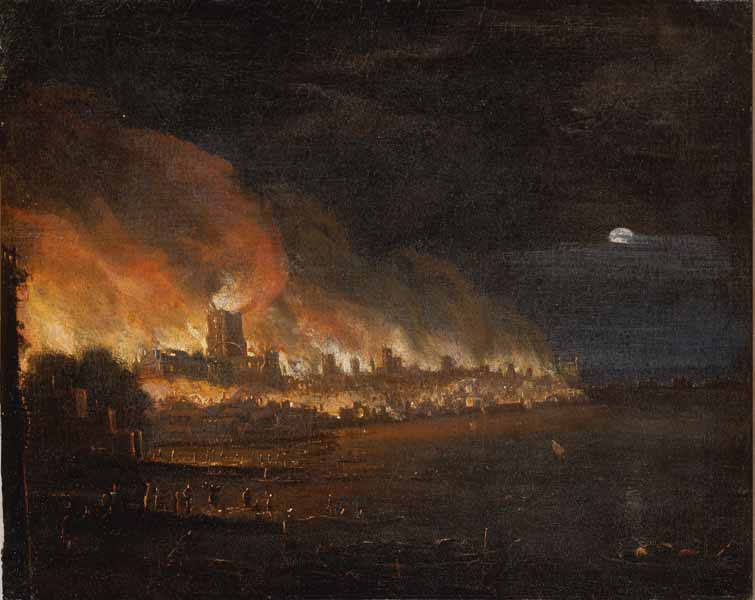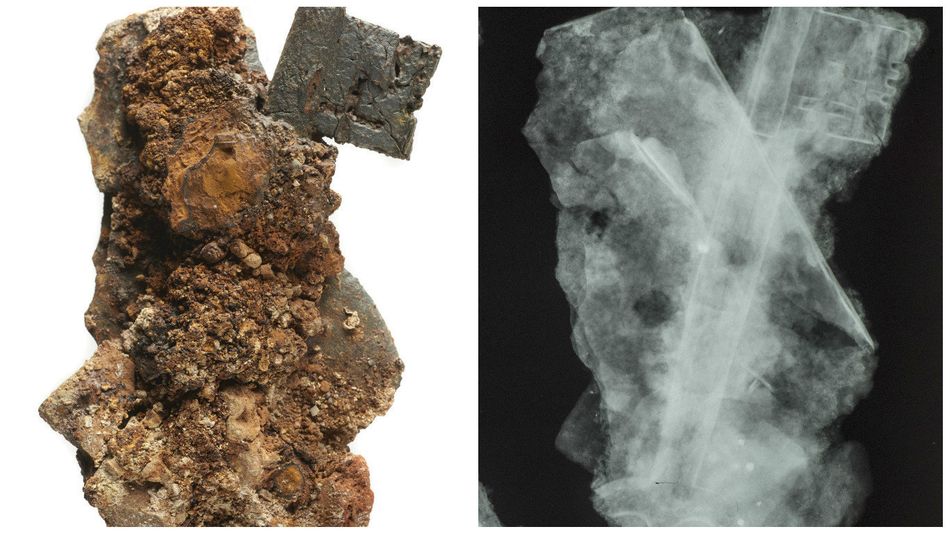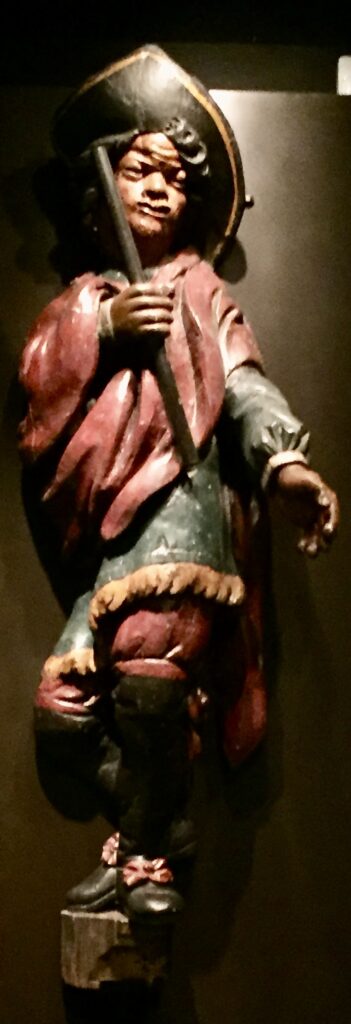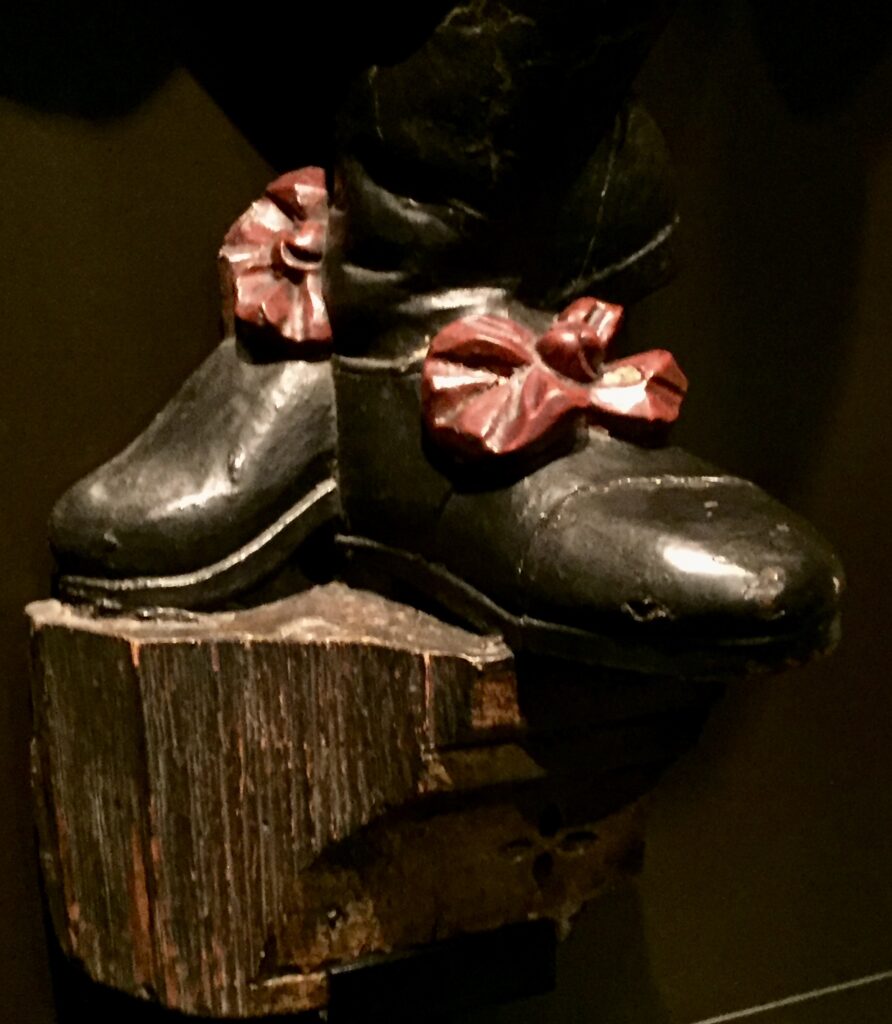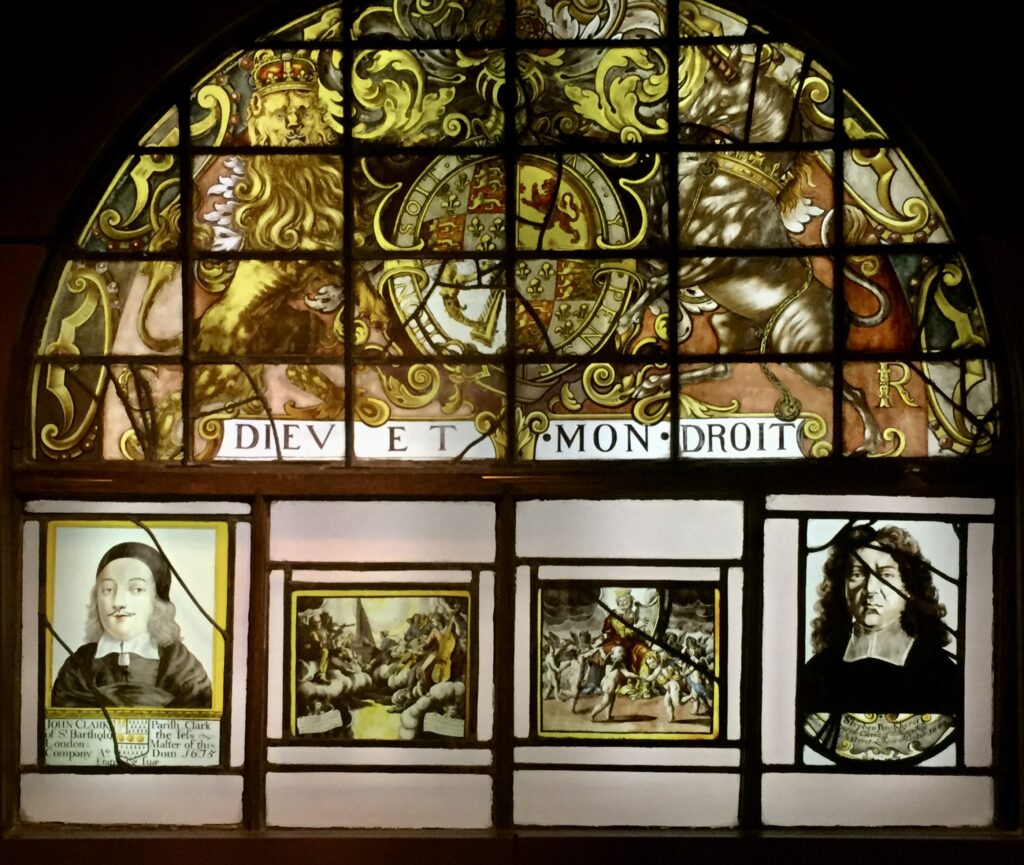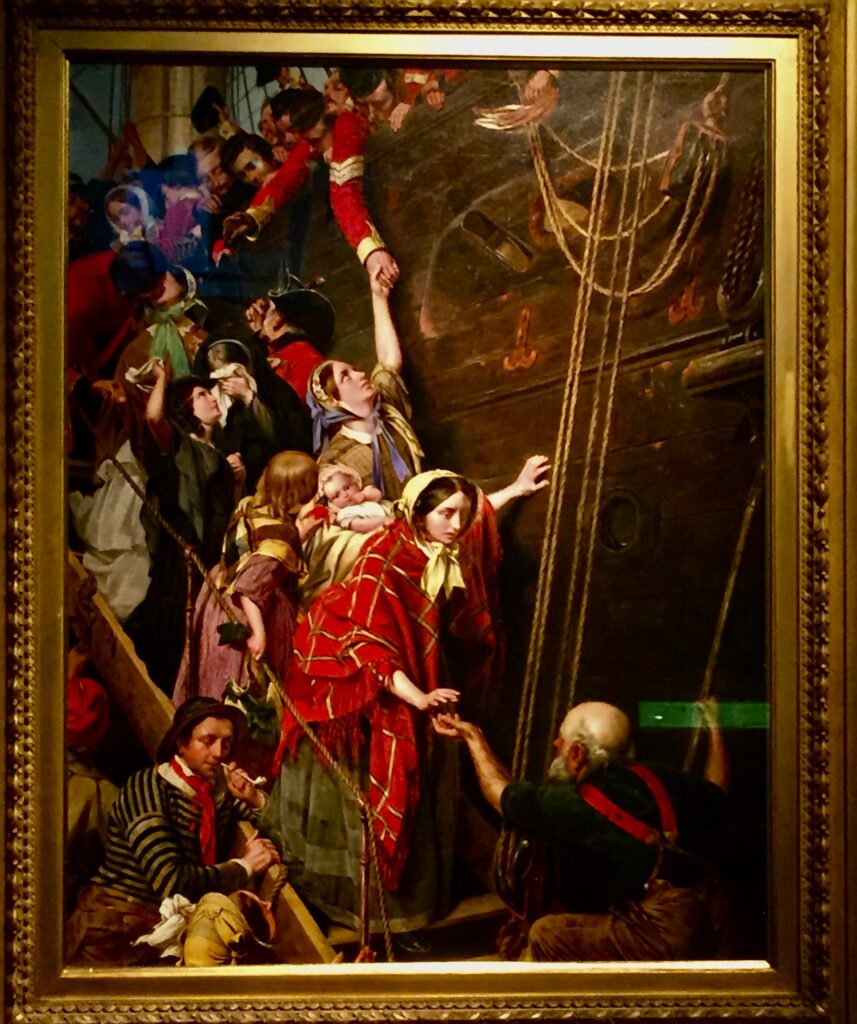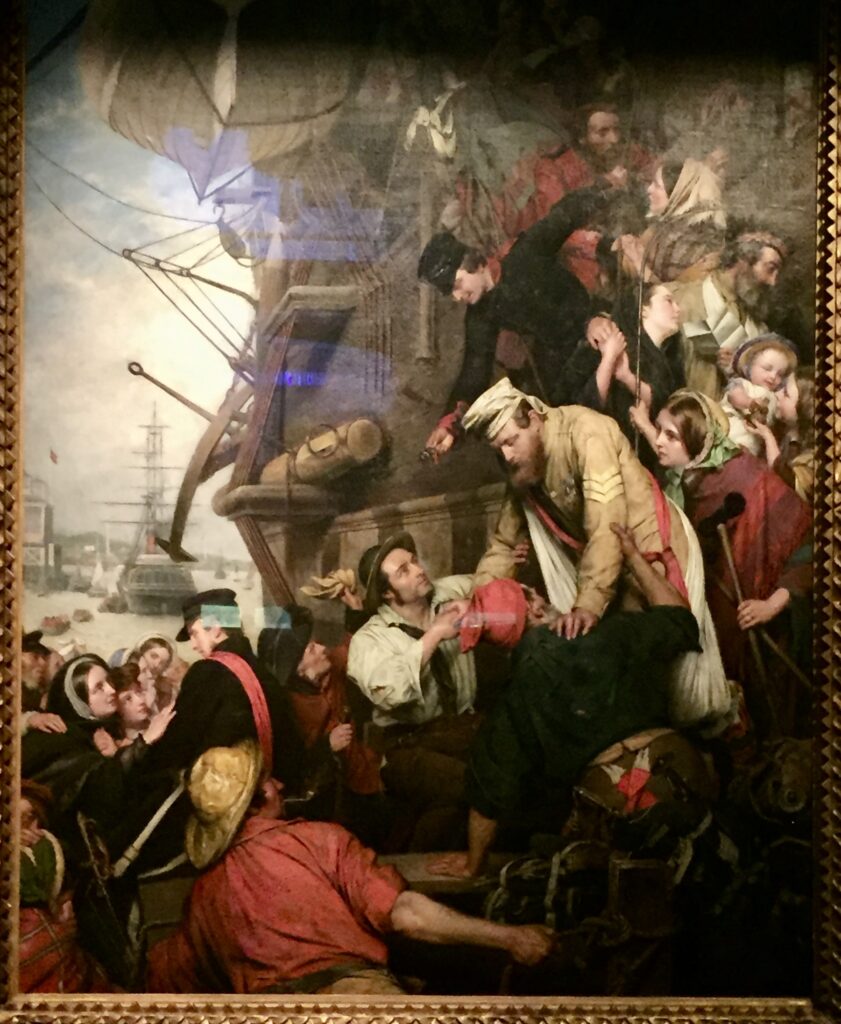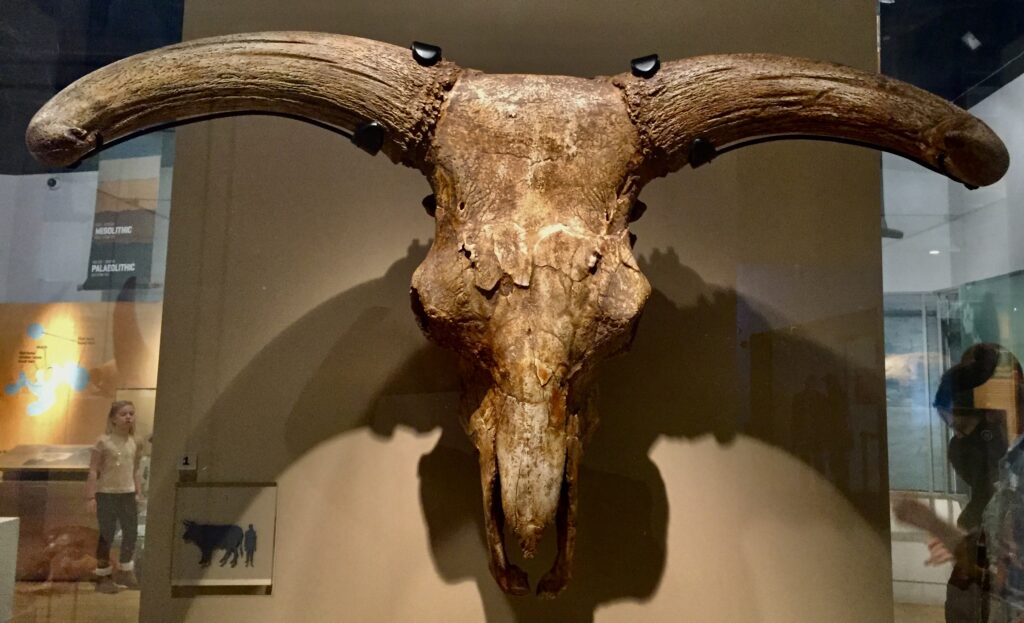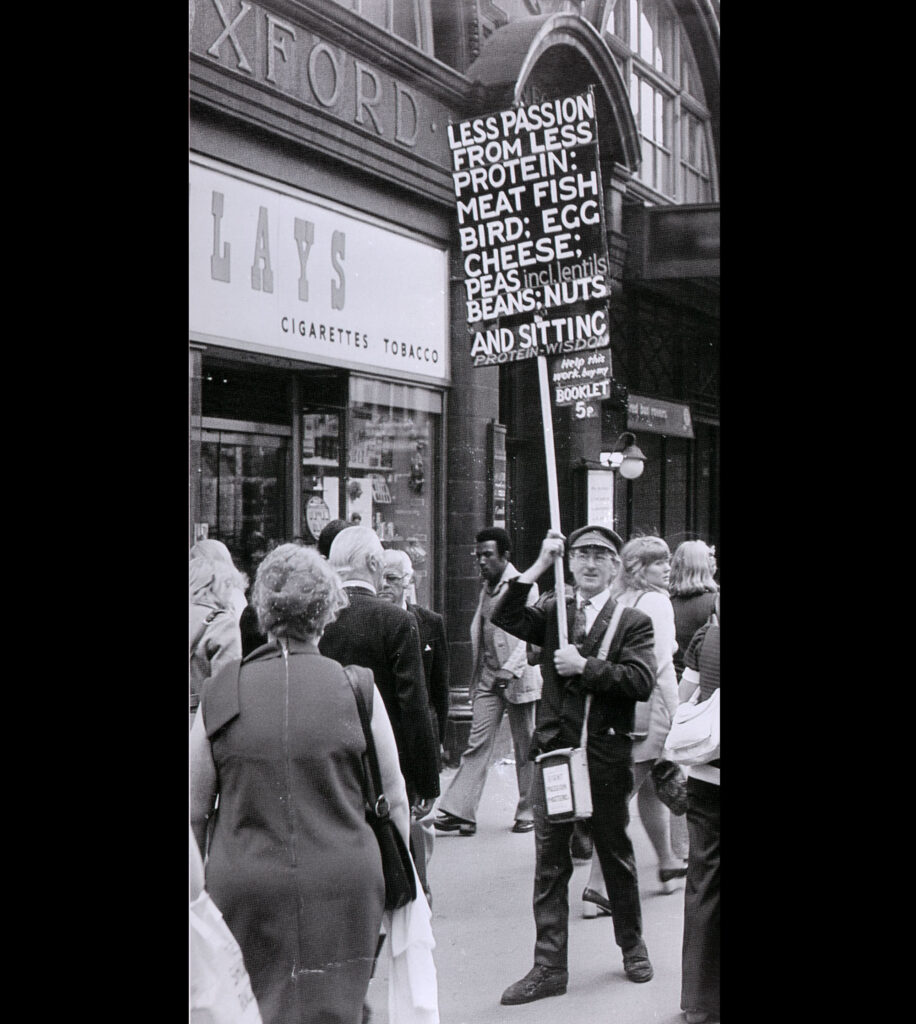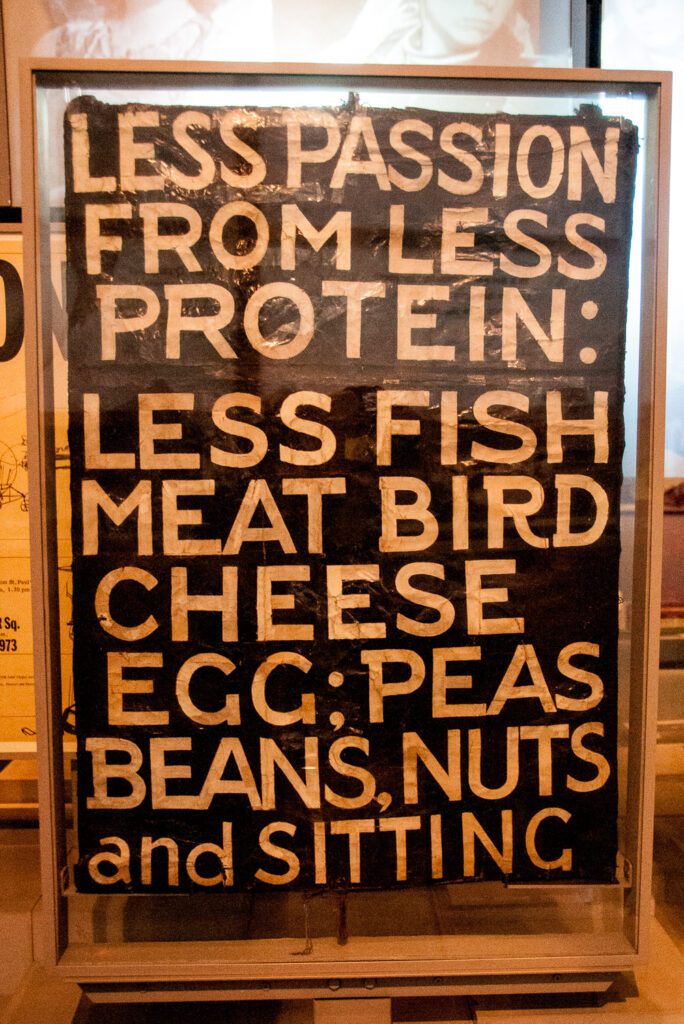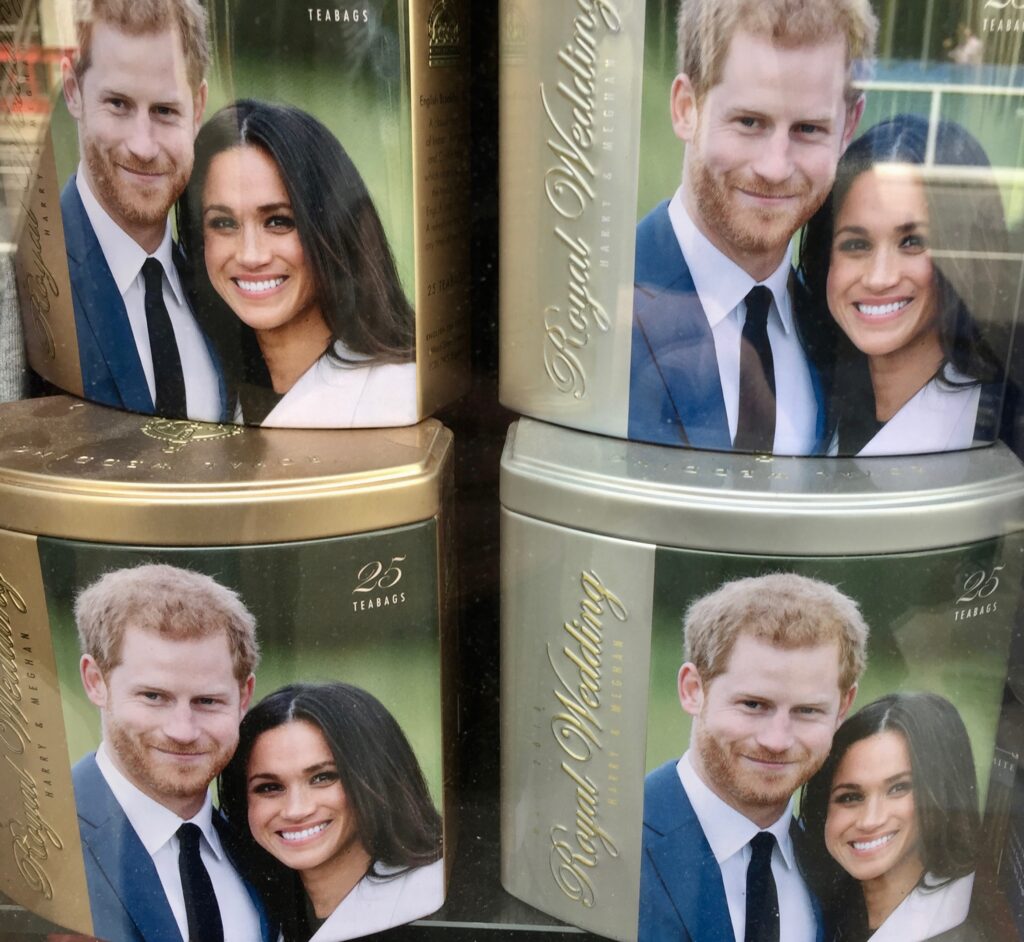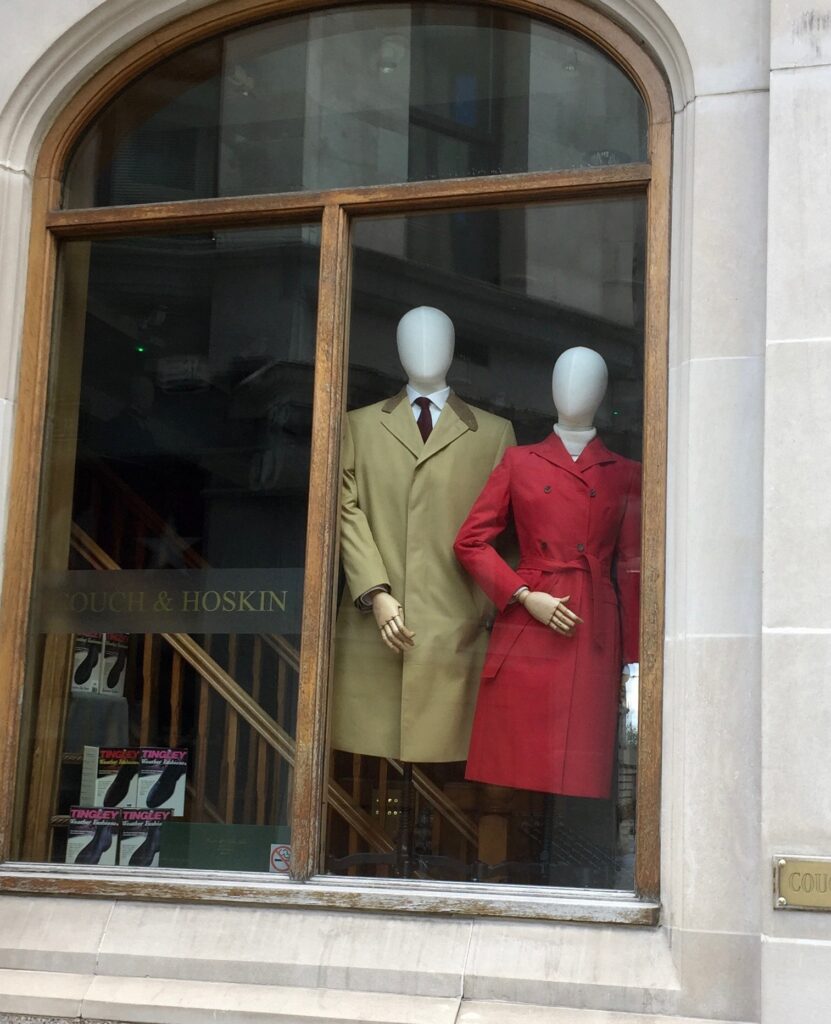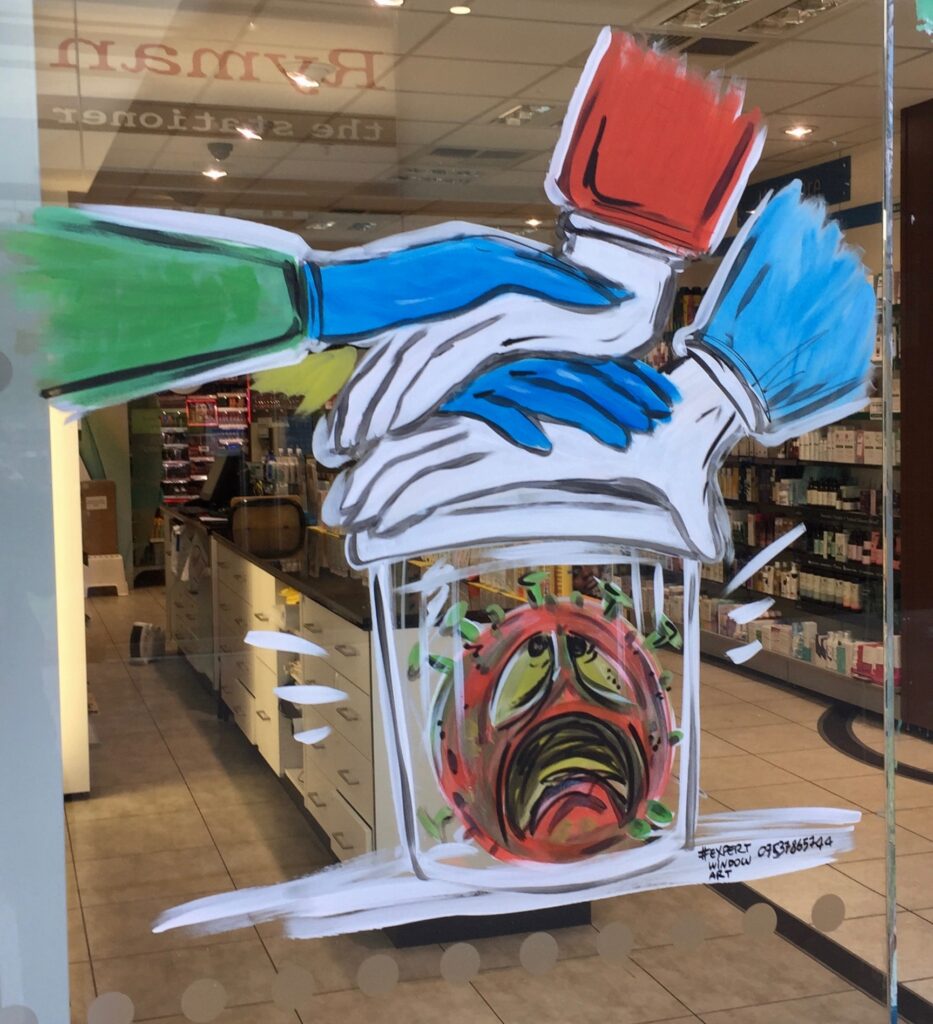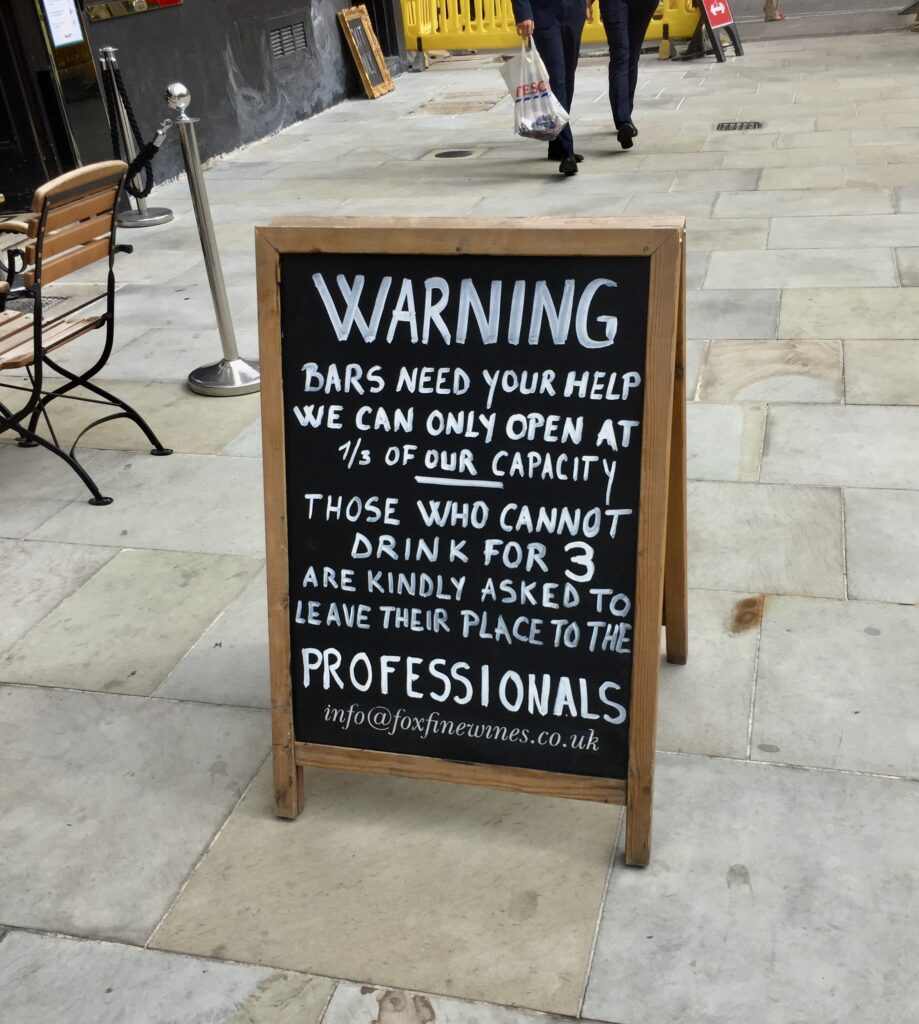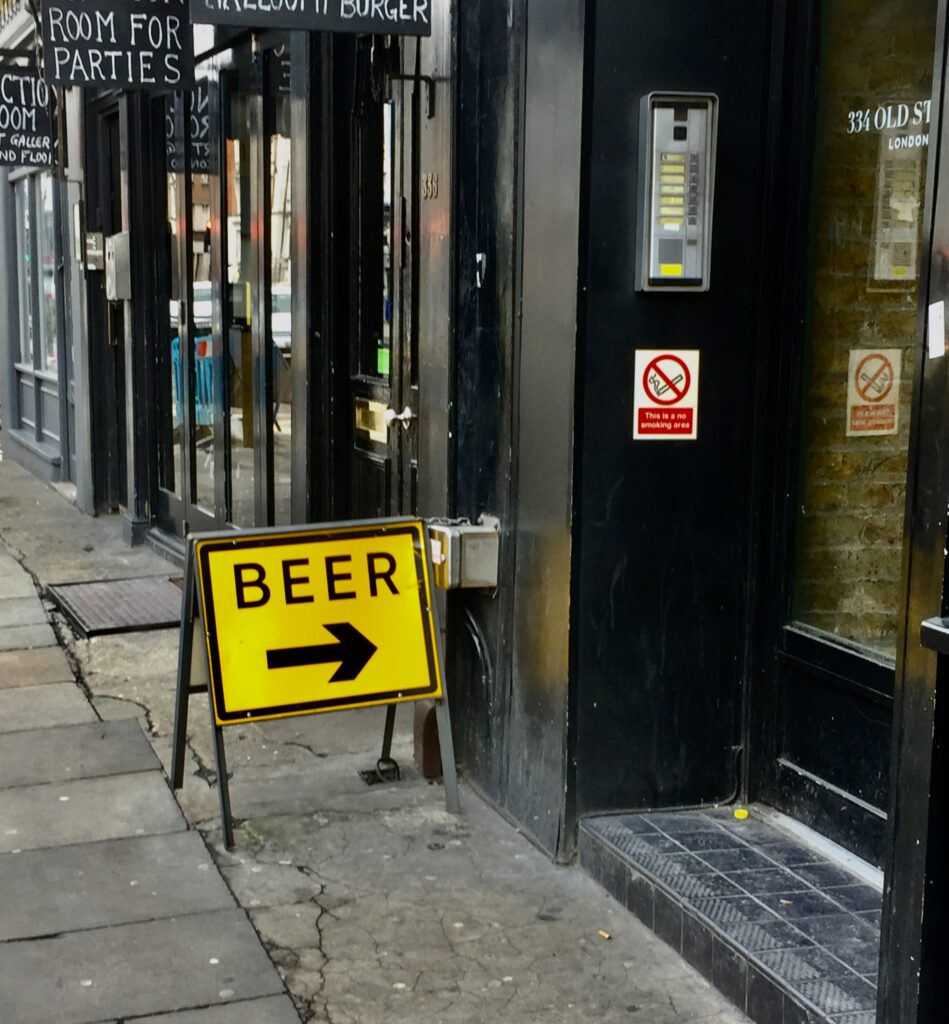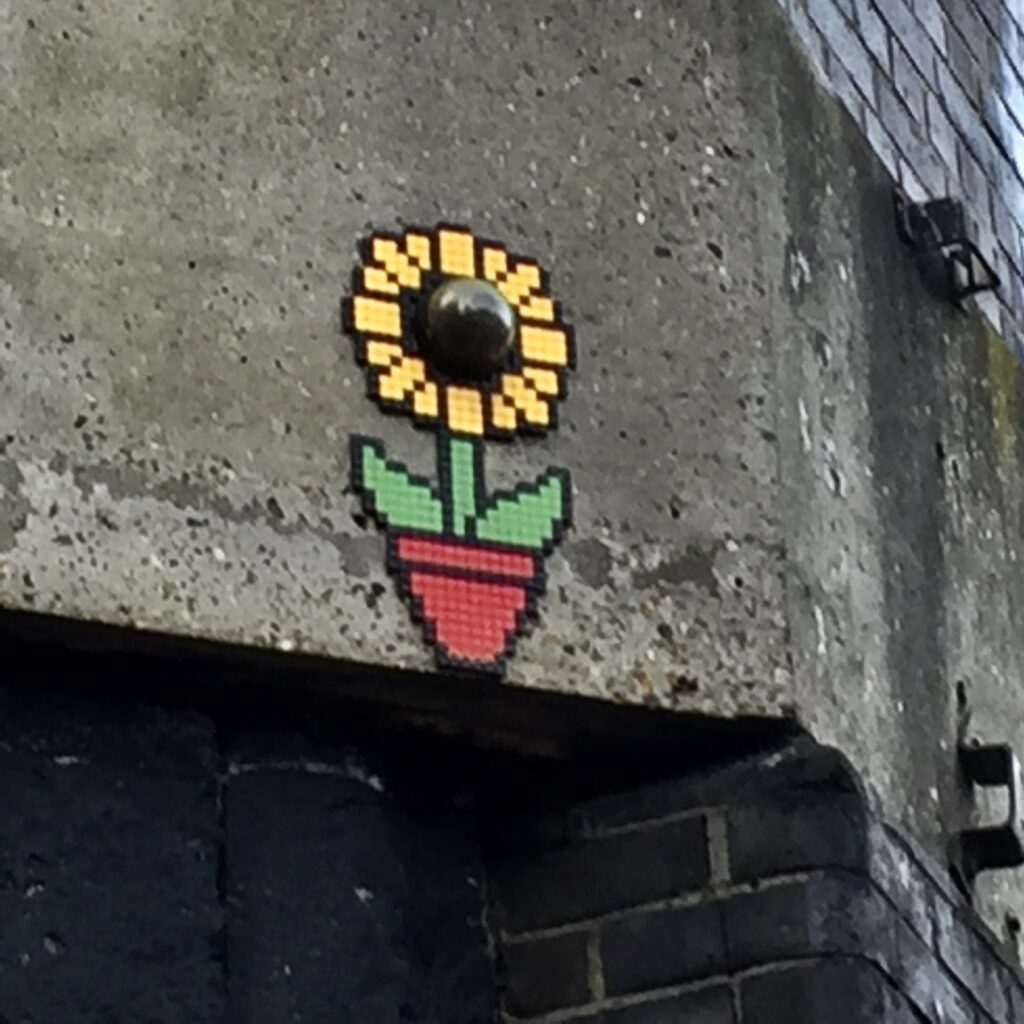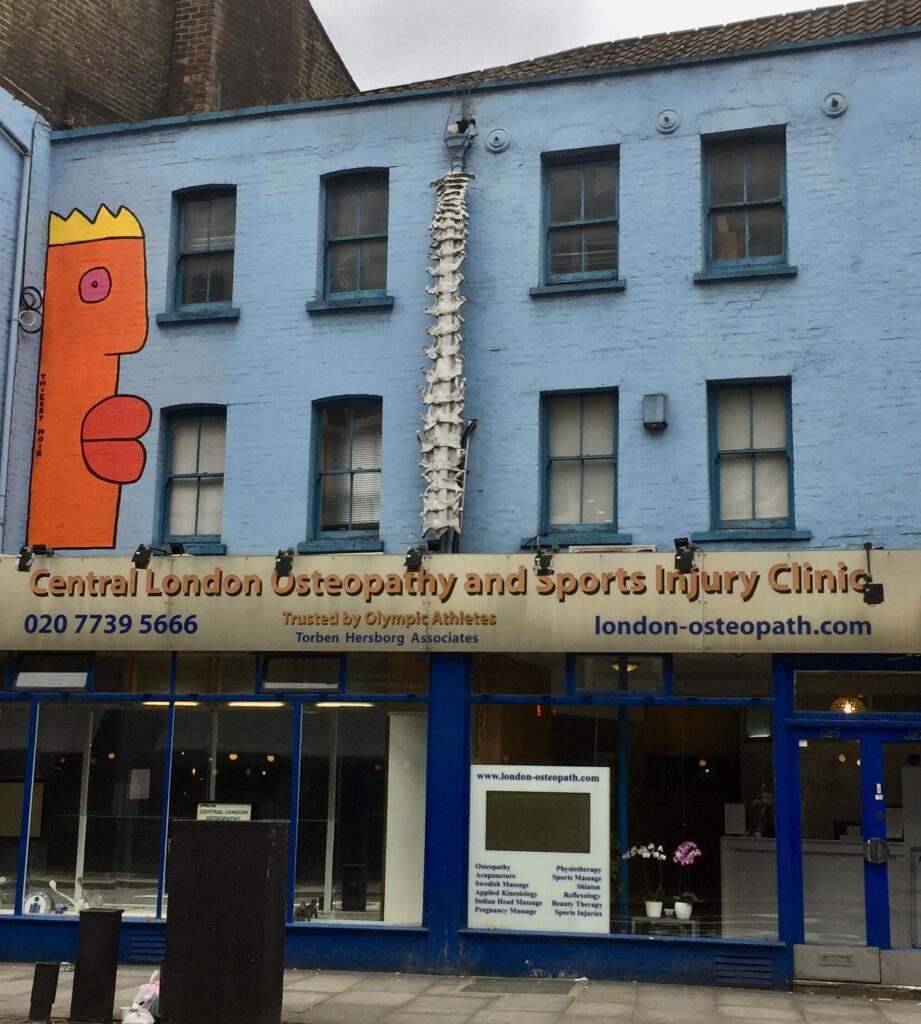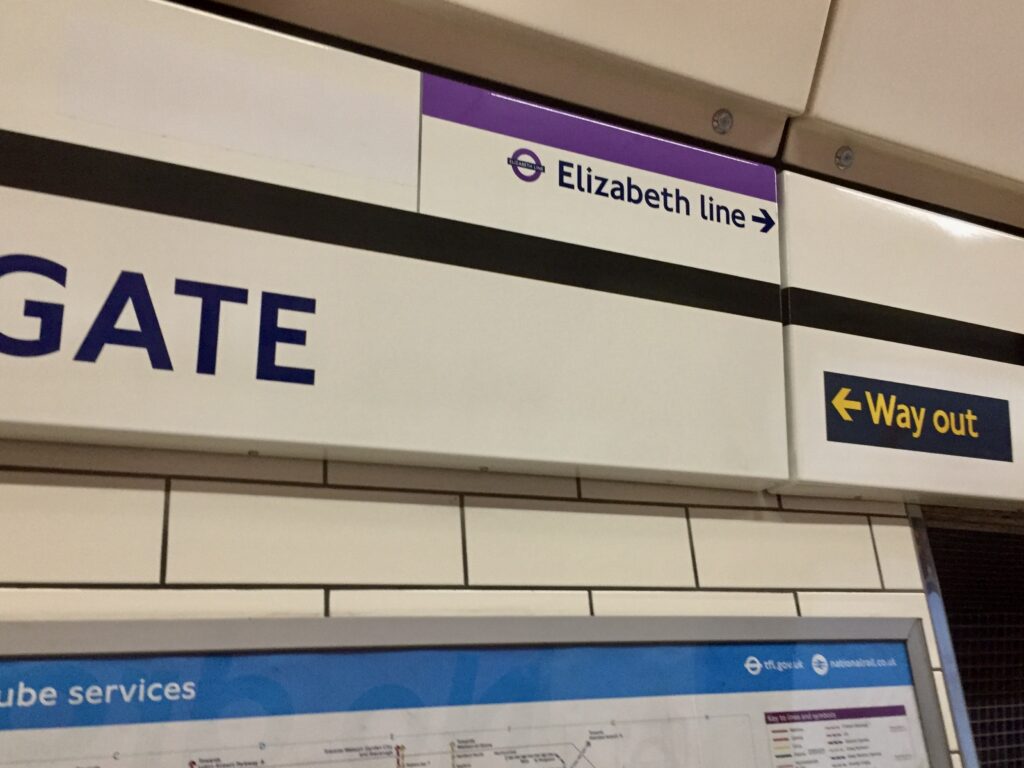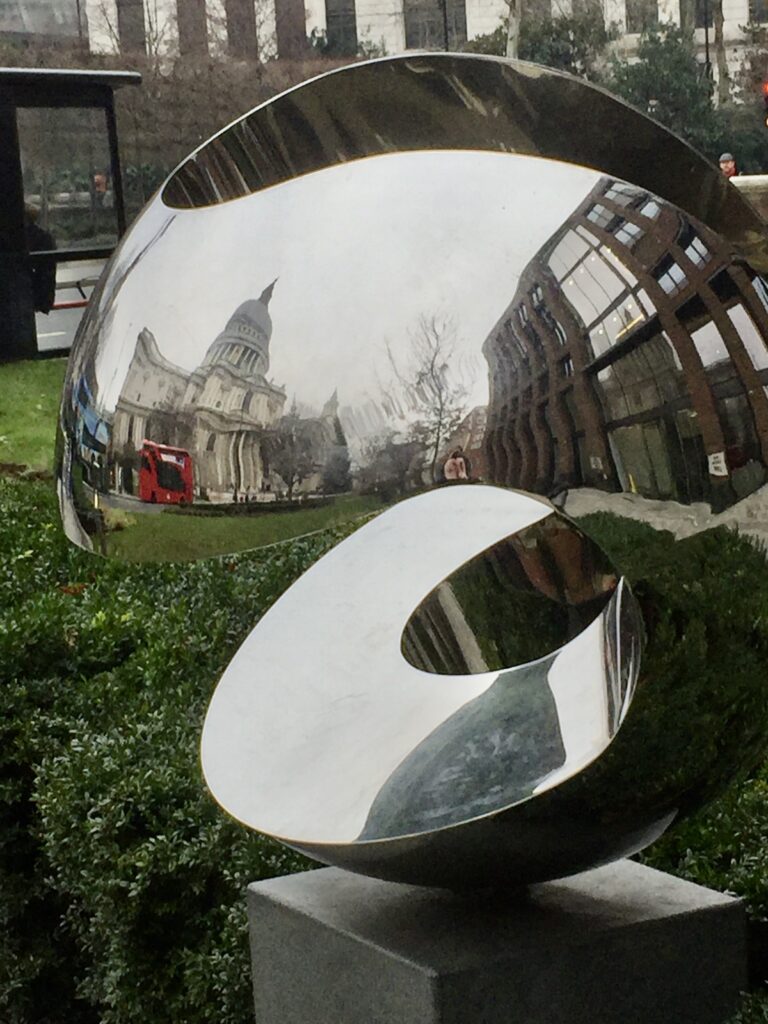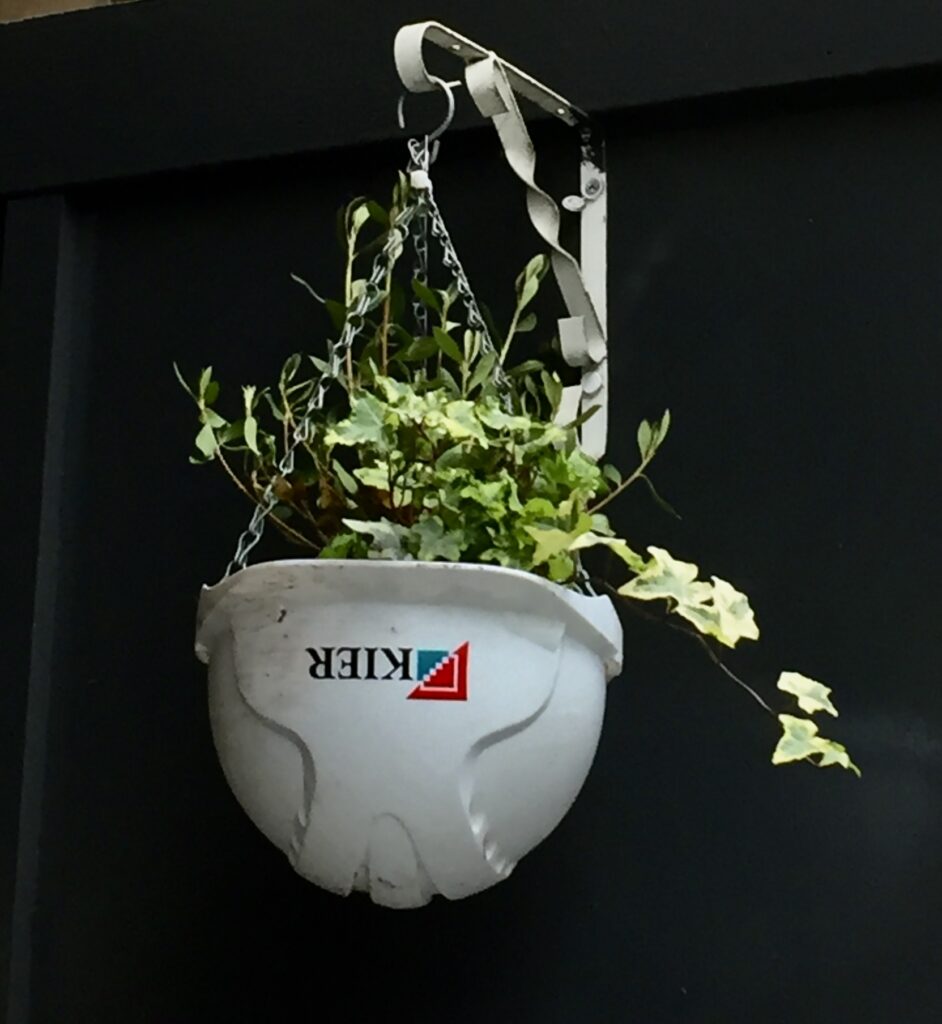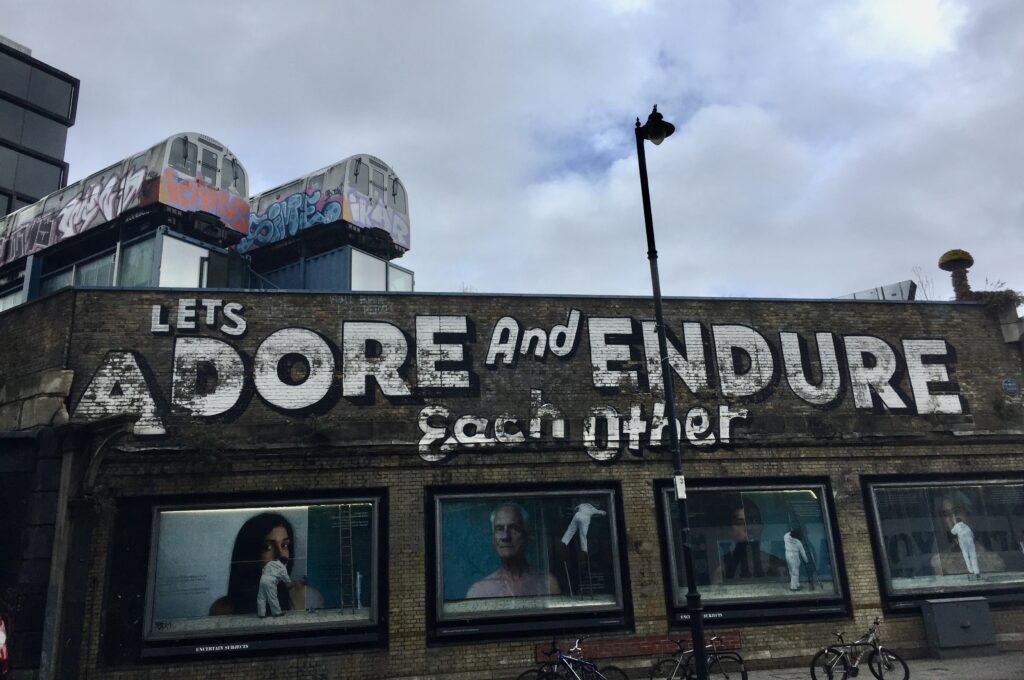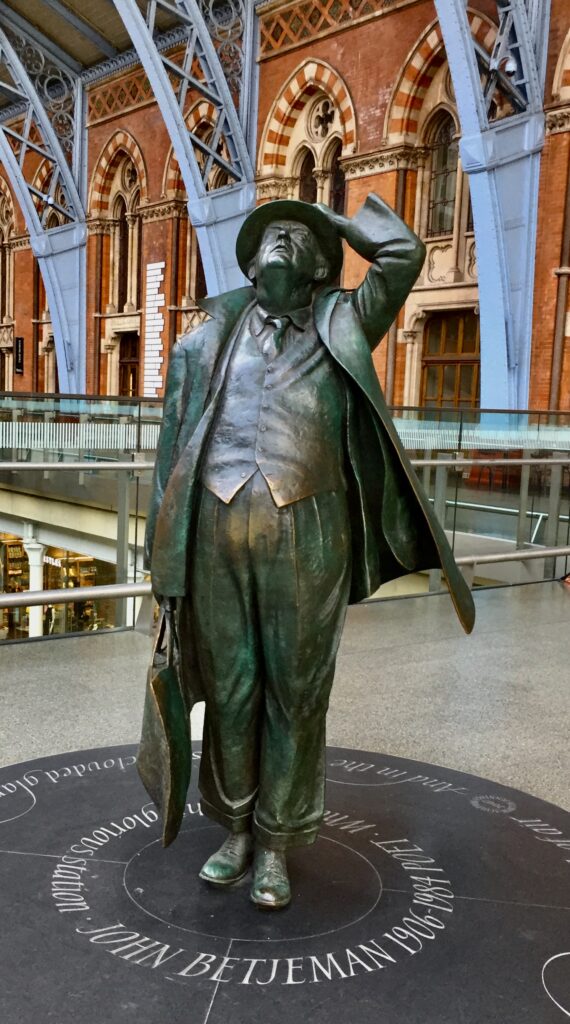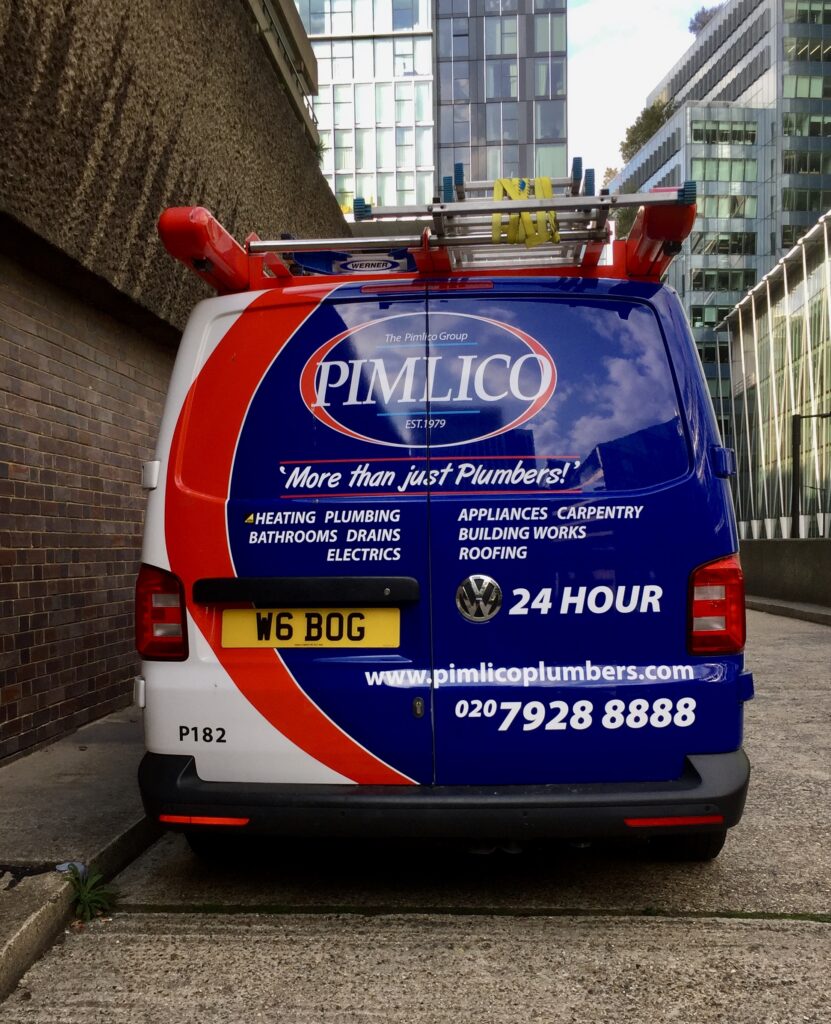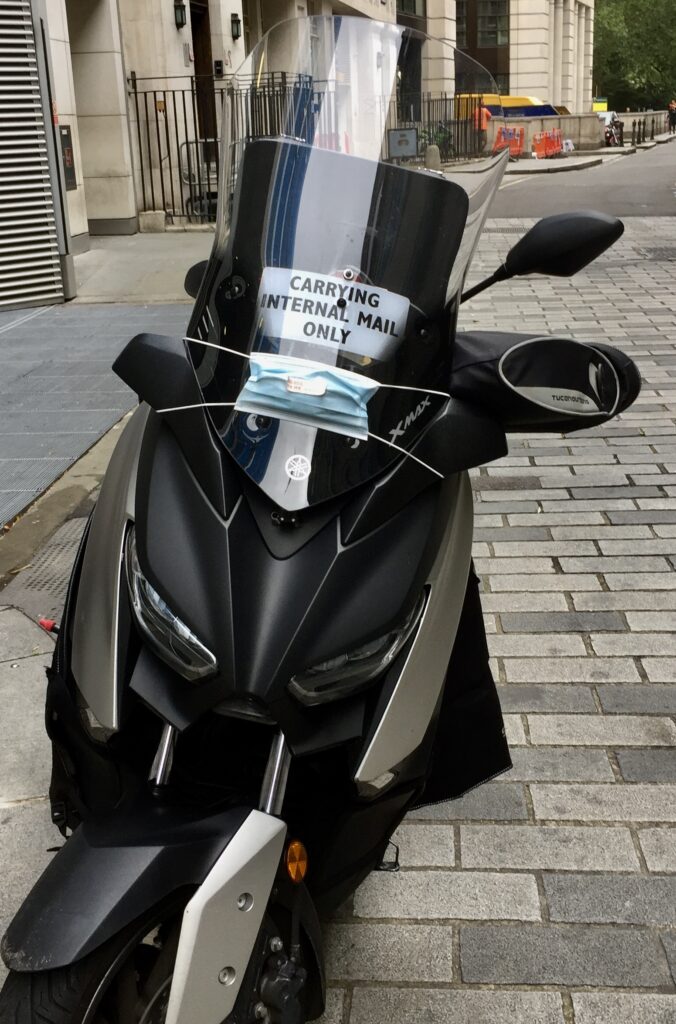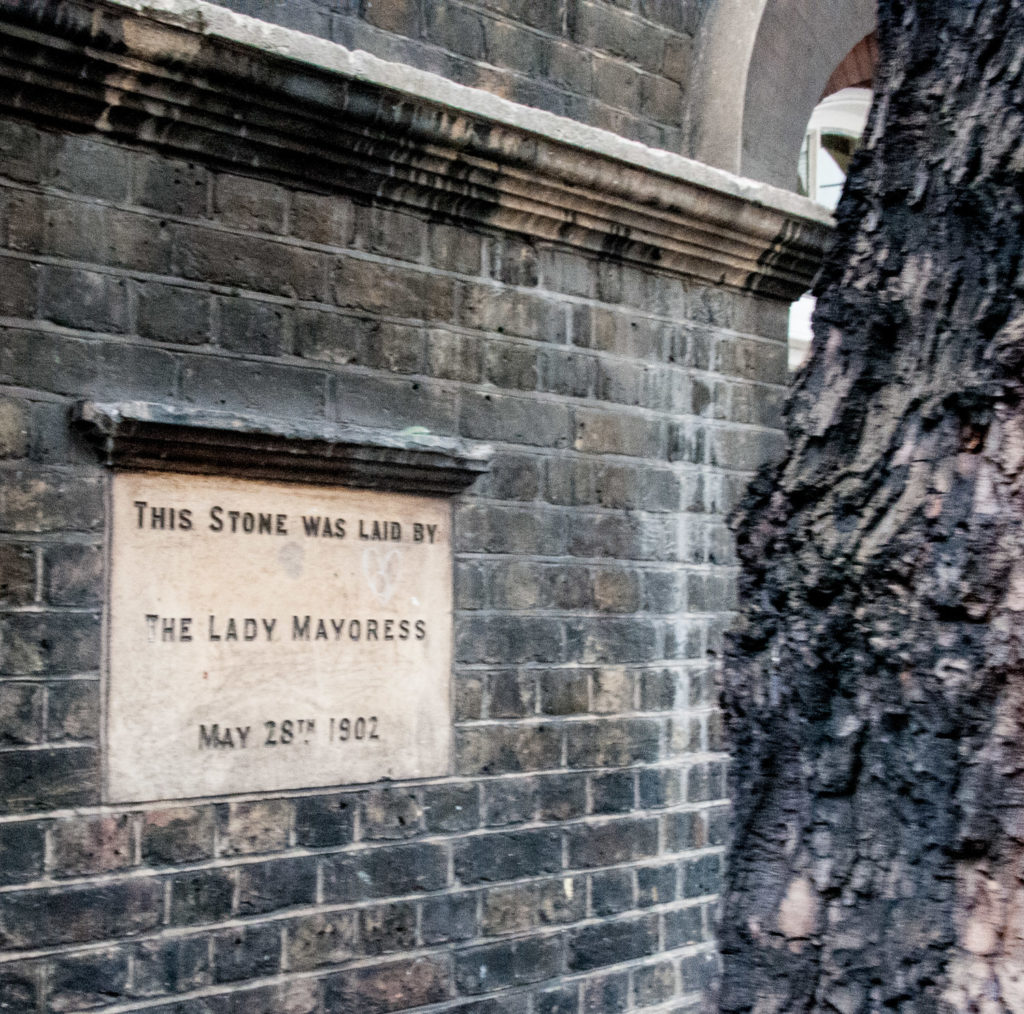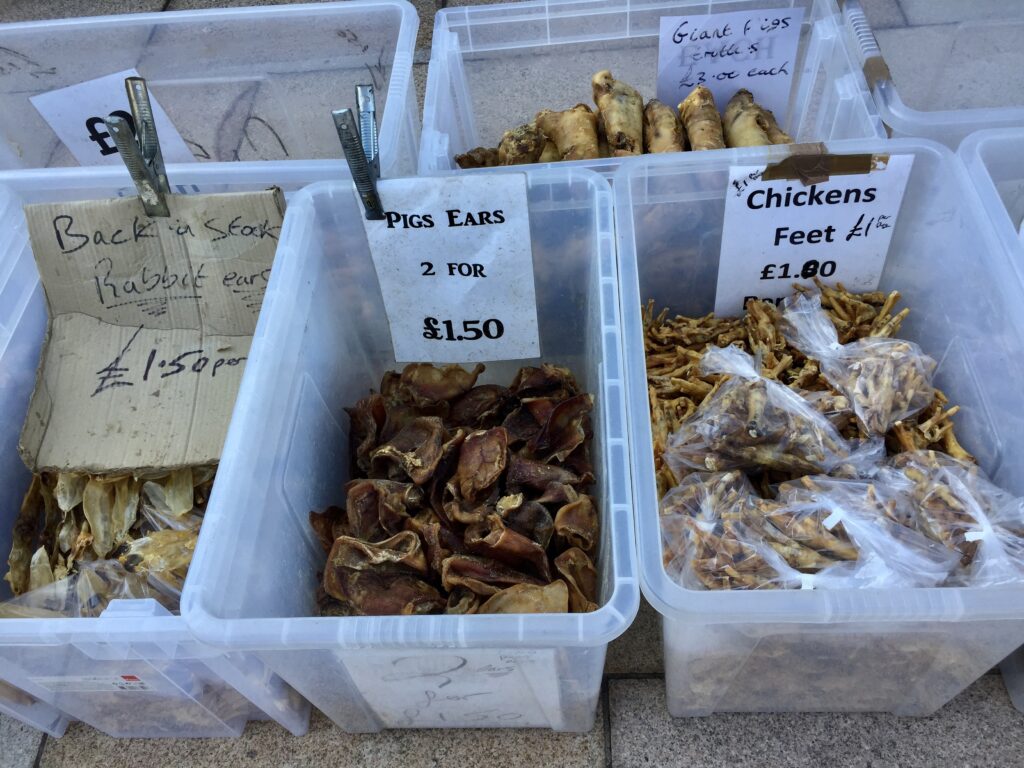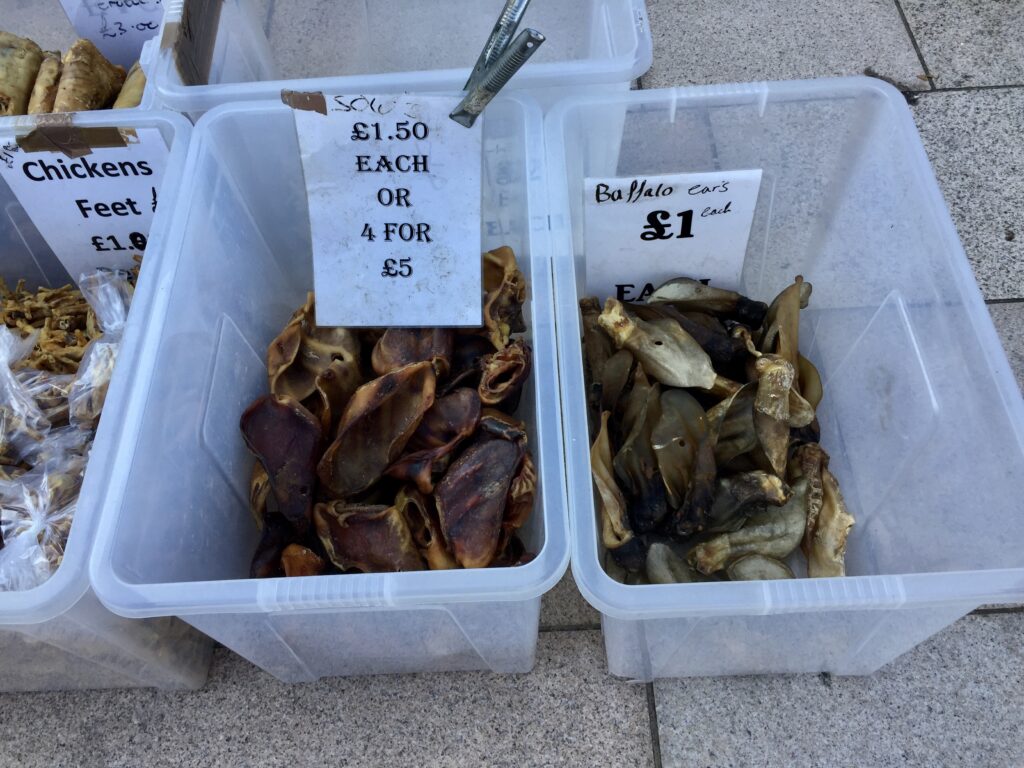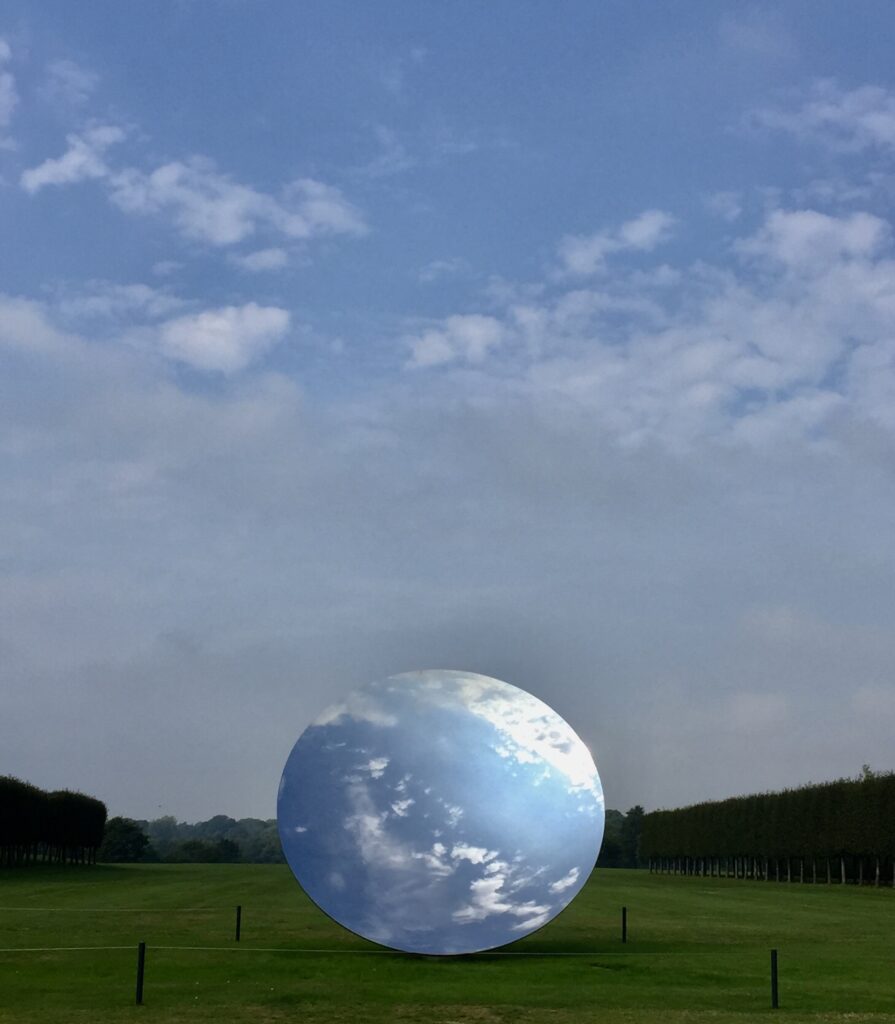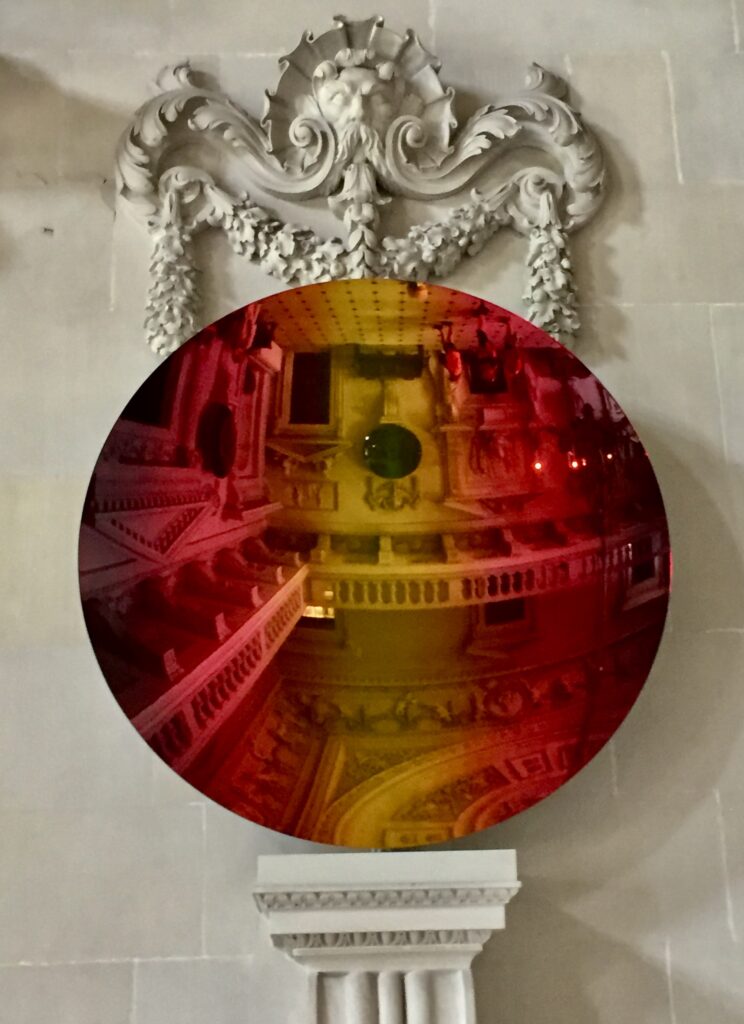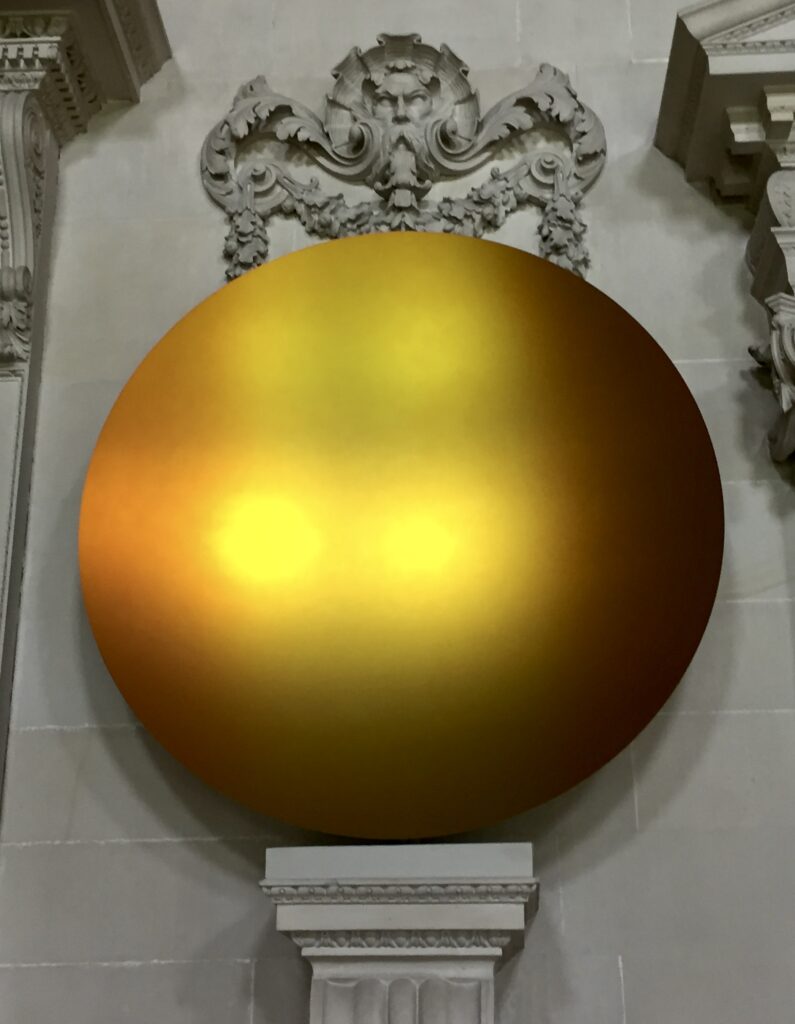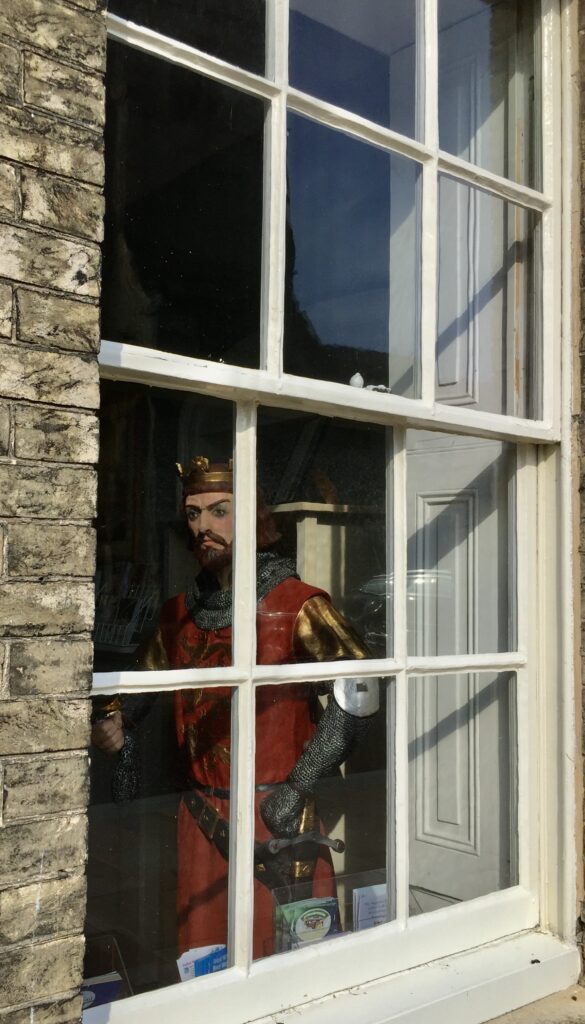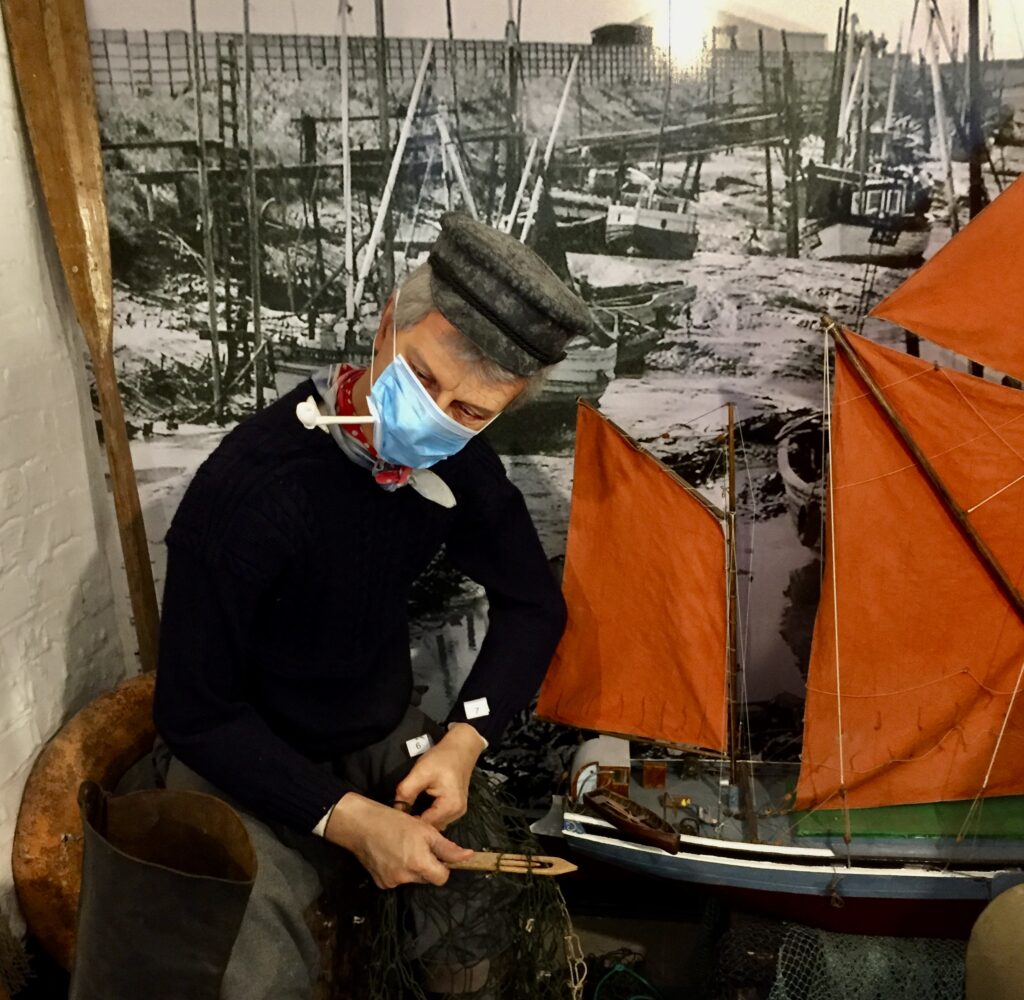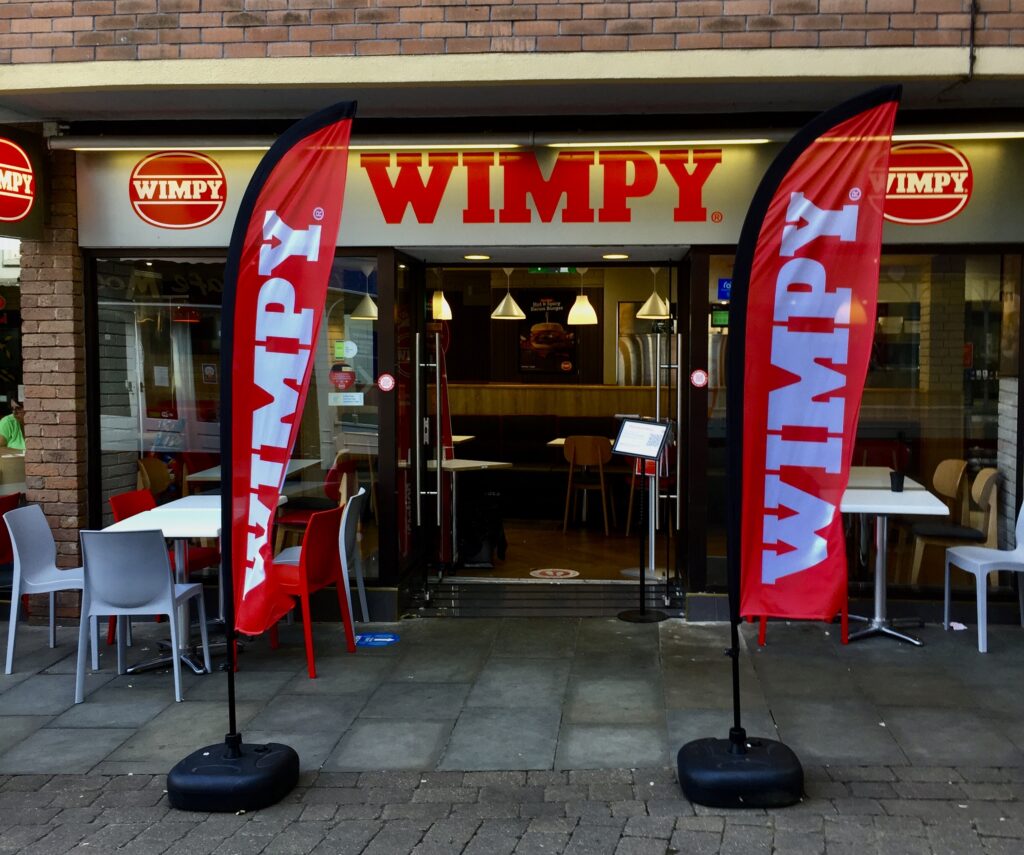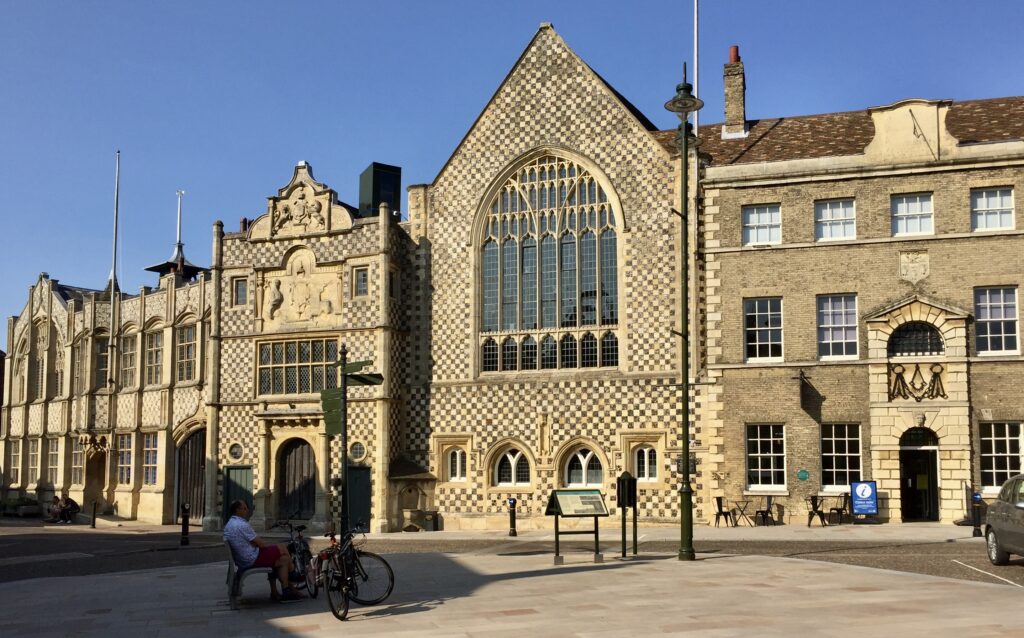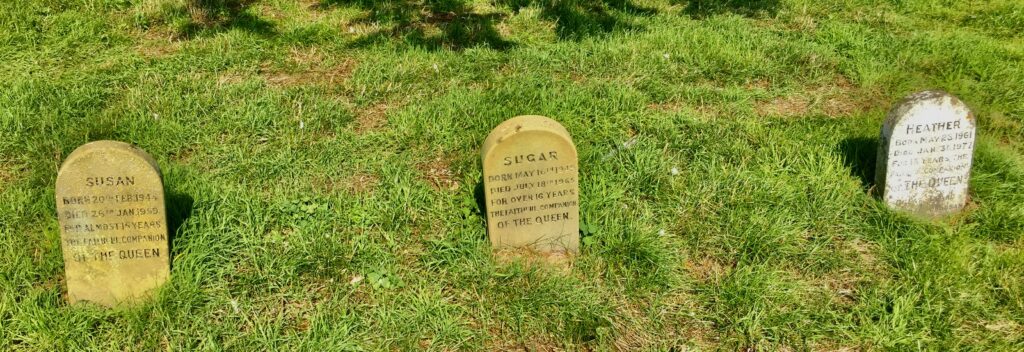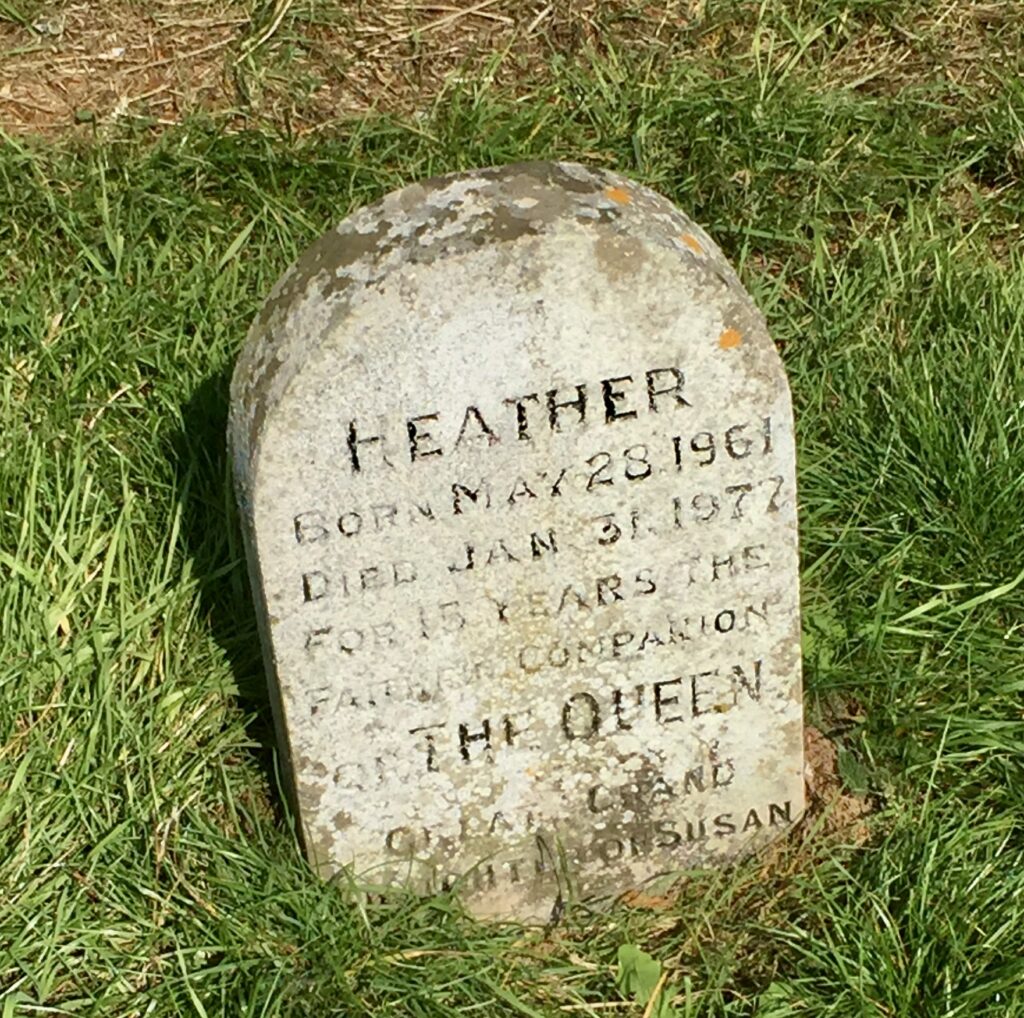Queen Victoria Street was created in 1871 as an extension to the then new Victoria Embankment and led directly to the Mansion House. The new street was incredibly expensive to build since, obviously, the properties standing in its path had to be purchased before demolition. The cost, over £2,000,000, equates to more than two billion pounds in equivalent value today.
On this extract from the 1847 Reynolds’s Splendid New Map of London a red line has been drawn to show how Queen Victoria Street sliced its way across the City …
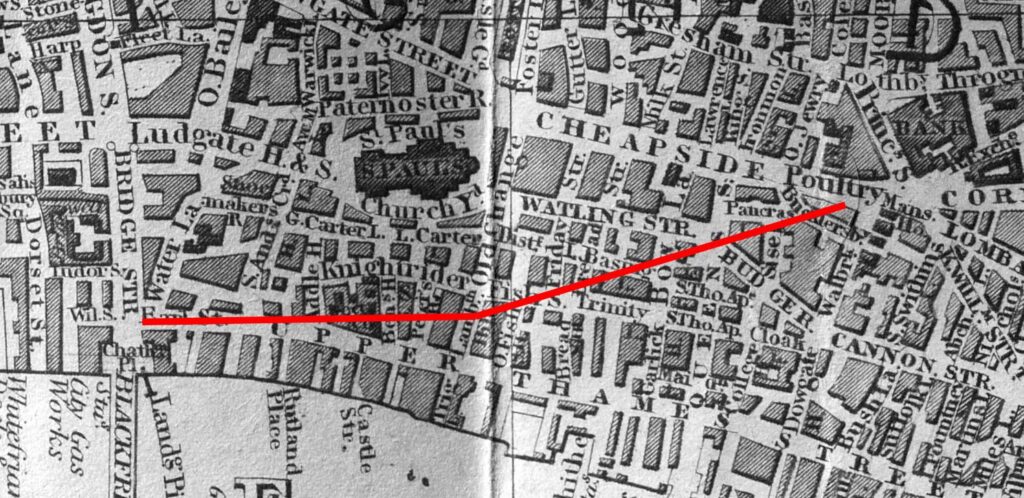
This picture gives an idea of the extent of the demolition …
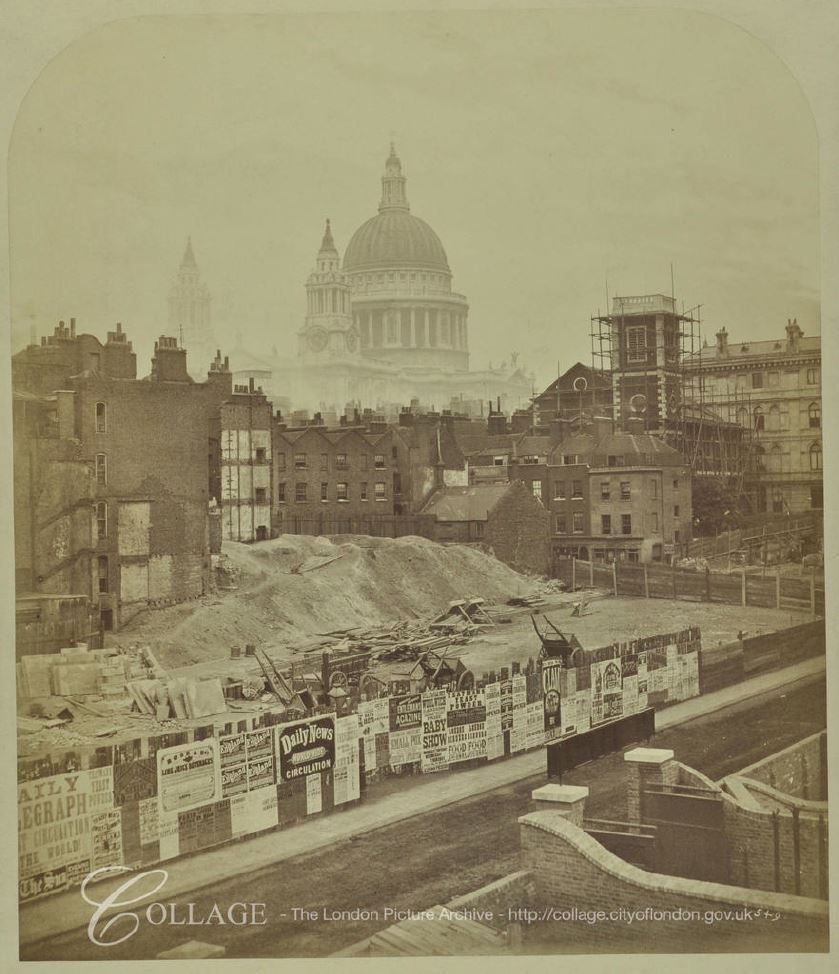
I wanted to try to stand as closely as possible where this picture was taken and, pausing in the street, I looked up and this is what I saw (EC4V 4BQ) …
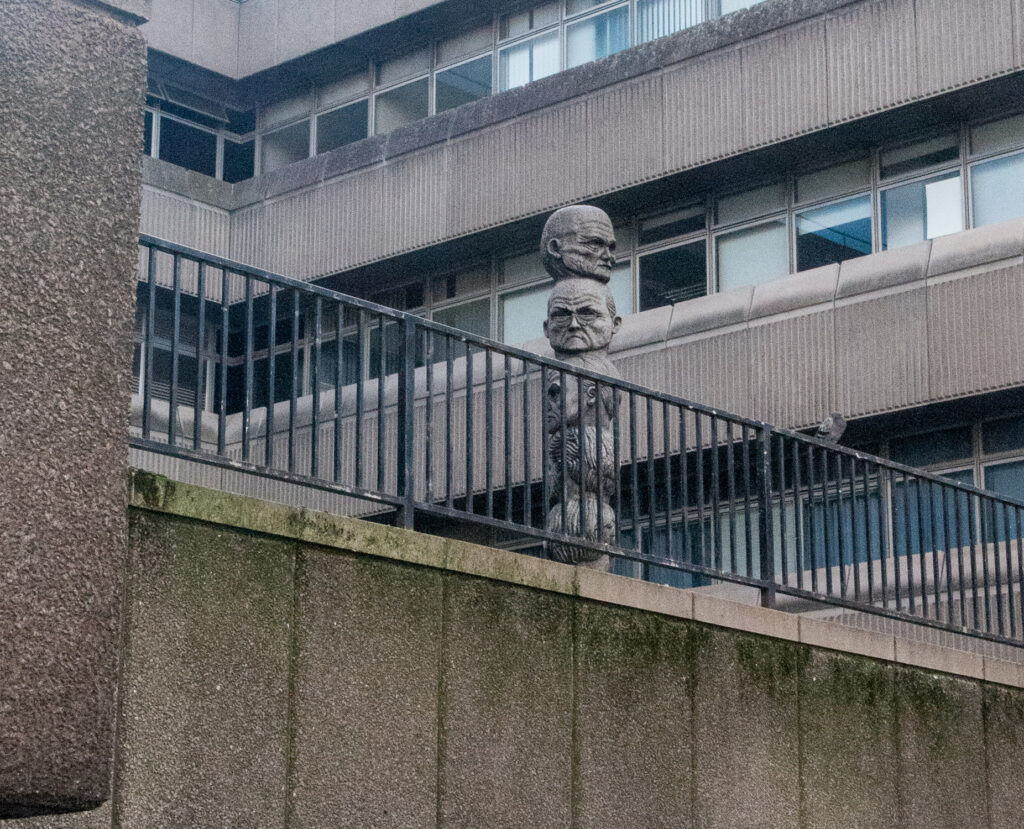
I climbed some steps and in a grim courtyard outside the gruesome Baynard House is a quite extraordinary sculpture, The Seven Ages of Man by Richard Kindersley (1980) …

At first the infant – mewing and puking in the nurse’s arms …then the whining schoolboy creeping like a snail unwillingly to school … then the lover … then a soldier full of strange oaths …
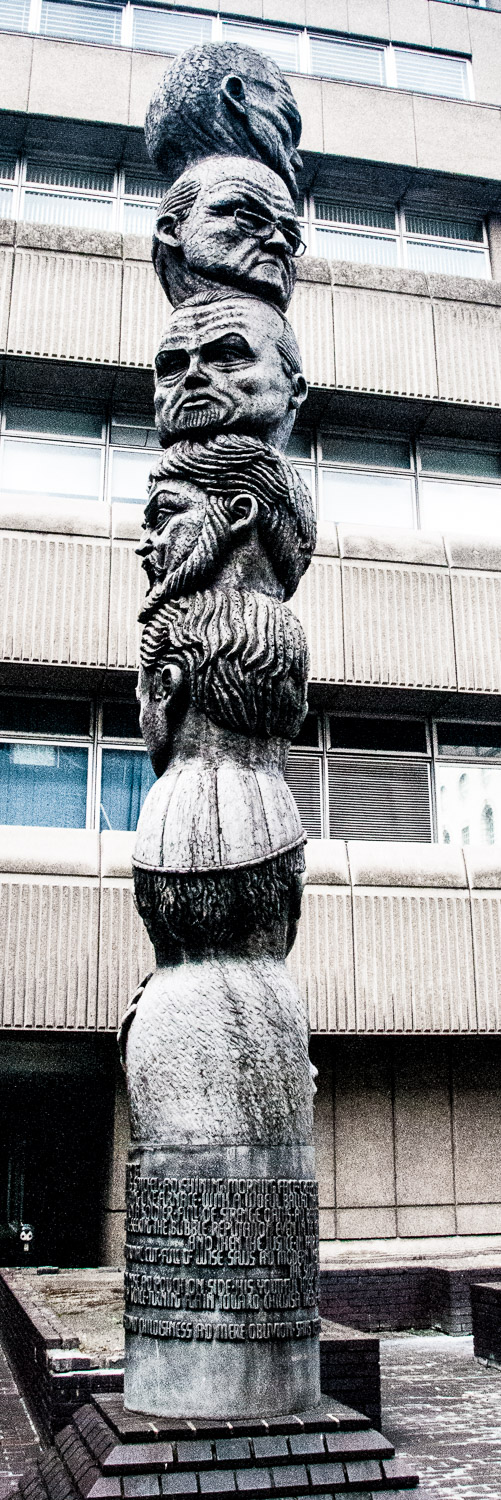
… and then the justice full of wise saws … then the sixth age …the big manly voice turning again toward childish treble, pipes and whistles in his sound … then second childishness and mere oblivion, sans eyes, sans taste, sans everything.
(Jacques in Shakespeare’s As You Like It Act II Scene vii)
Here is the view from the terrace taken from approximately the same spot as the demolition picture above …
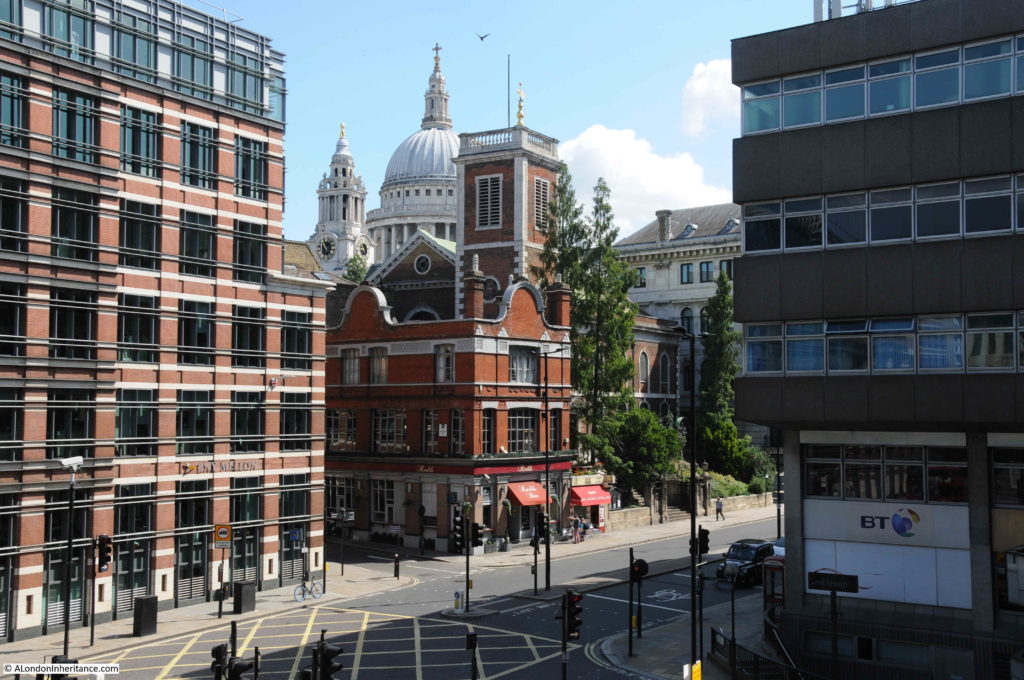
This image and several of the illustrations in today’s blog have been taken from the excellent blog A London Inheritance which I wholeheartedly recommend.
By the way, the terrace leads to Blackfriars Station and it’s worth popping in to see this example of the station’s past importance.
The station was badly damaged during the Second World War but the wall displaying a selection of the locations you could catch a train to survived and you can see it today in the ticket hall. It was part of the original façade of the 1886 station (originally known as St Paul’s) and features the names of 54 destinations – each painstakingly carved into separate sandstone blocks …
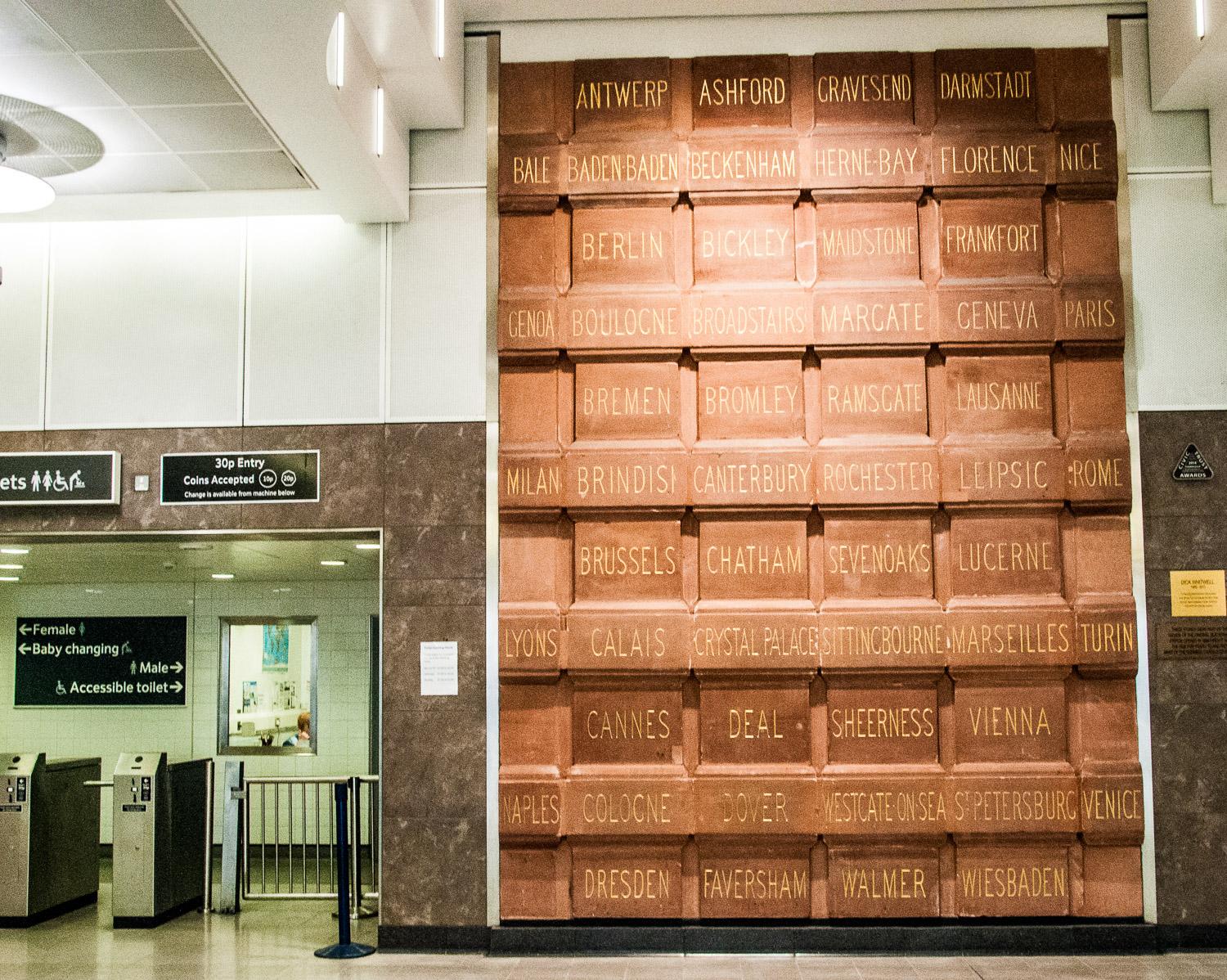
The letters are gilded in 24 carat gold leaf …
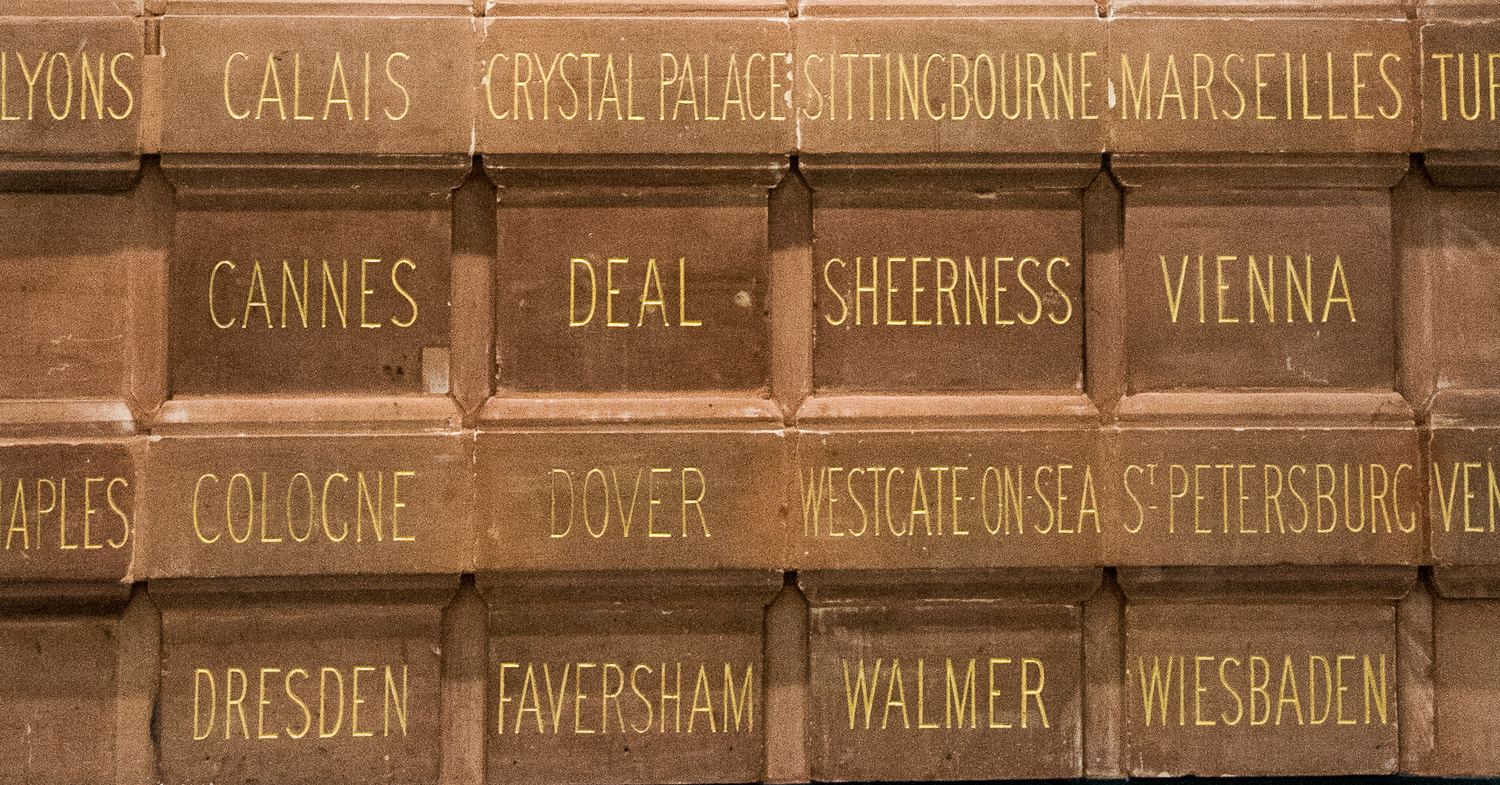
Where shall we buy a ticket to today? Crystal Palace or Marseilles? Westgate-on-Sea or St Petersburg? Tough choices!
Moving westward on the north side of Queen Victoria Street you will find the College of Arms (EC4V 4BT). Founded in 1484, this is where you go to get your family coat of arms designed and granted. As well as this function, the College maintains registers of arms, pedigrees, genealogies, Royal Licences, changes of name, and flags. The officers who run the College have some splendid titles such as Clarenceaux King of Arms, Rouge Dragon Persuivant and various Heralds and Heralds Extraordinary.
The original street plan included the complete demolition of their building but the Heralds objected strongly. As a result Queen Victoria Street merely sliced off the south east and south west wings, requiring remodelling of the two stumps. You can see how the colour of the new brickwork differs from the original in this picture …
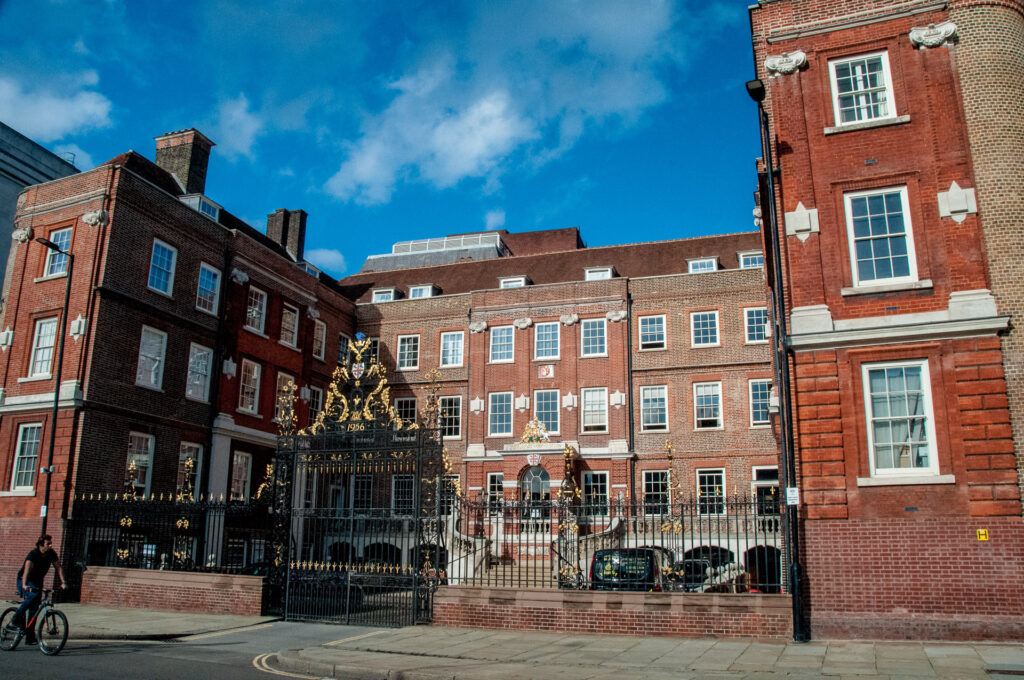
This print from 1768 shows the building before the 1871 alterations …
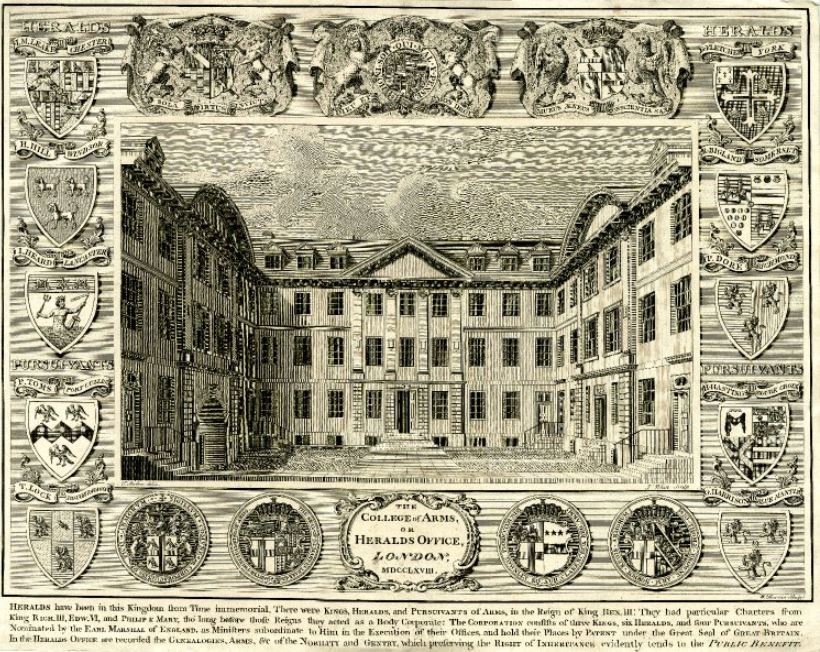
Also on the north side is the 1933 Faraday Building, once one of the major hubs for international and national telephone circuits and operator services (EC4V 4BT) …
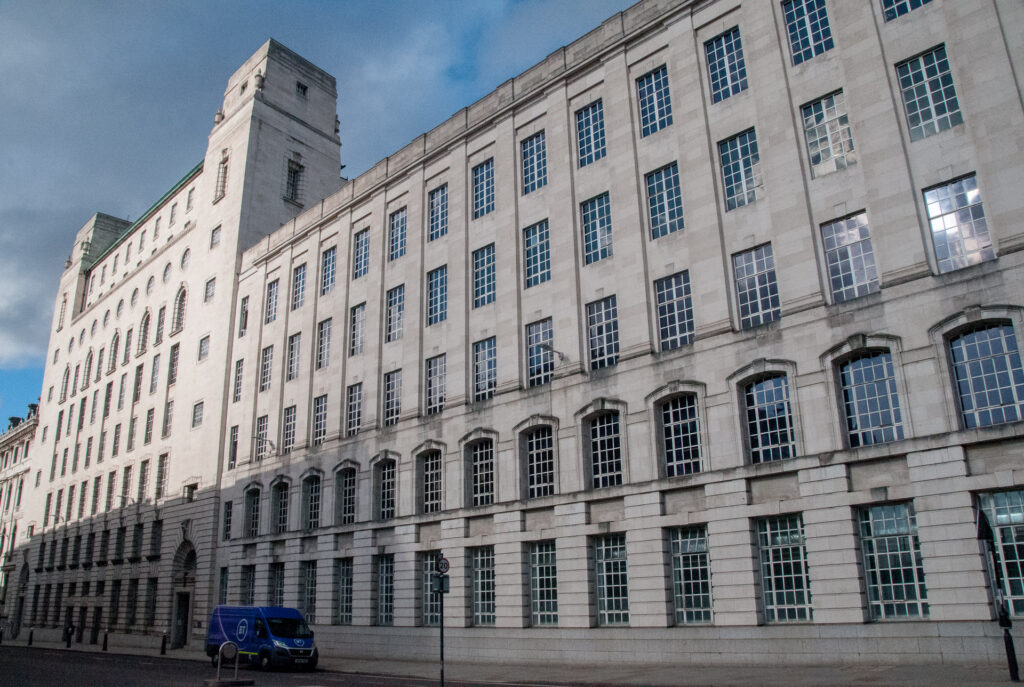
Look just above the line of the second set of windows and, in the position associated with a key stone, there are a series of carvings, one above each window, that tell the story of what was state of the art telecommunications at the time the building was constructed.
A bang up to date telephone …
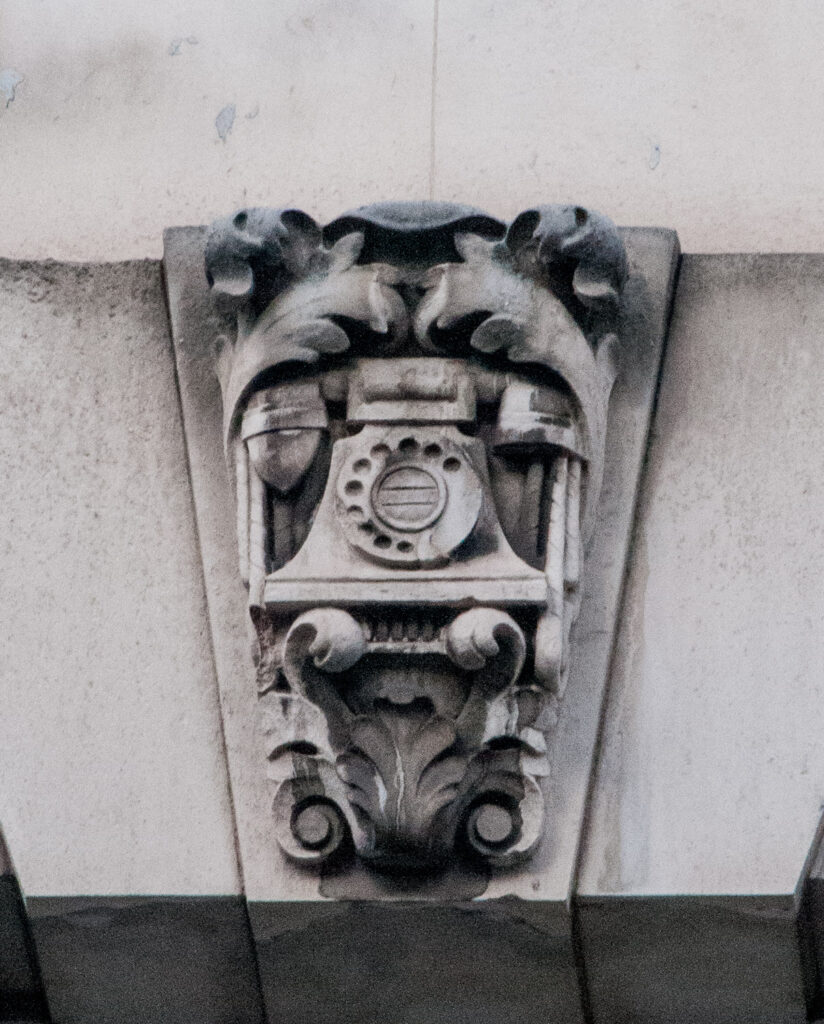
Cables that carried the telephone signal …
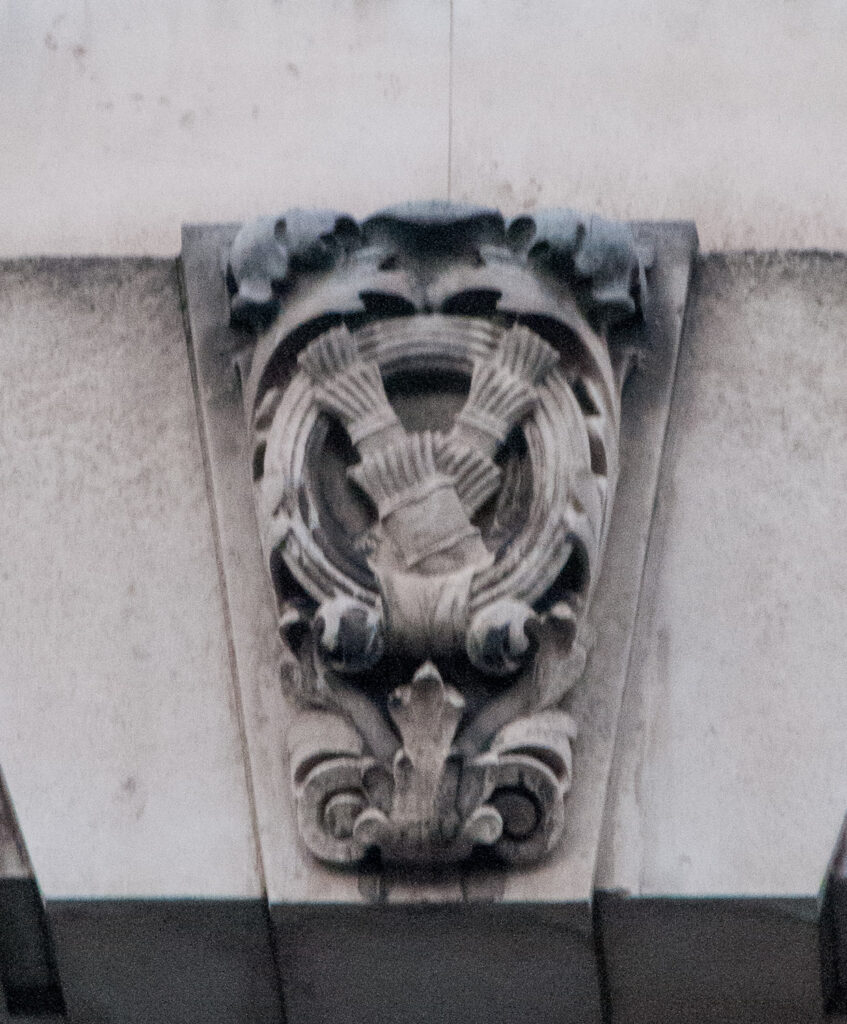
An electromagnetic relay …
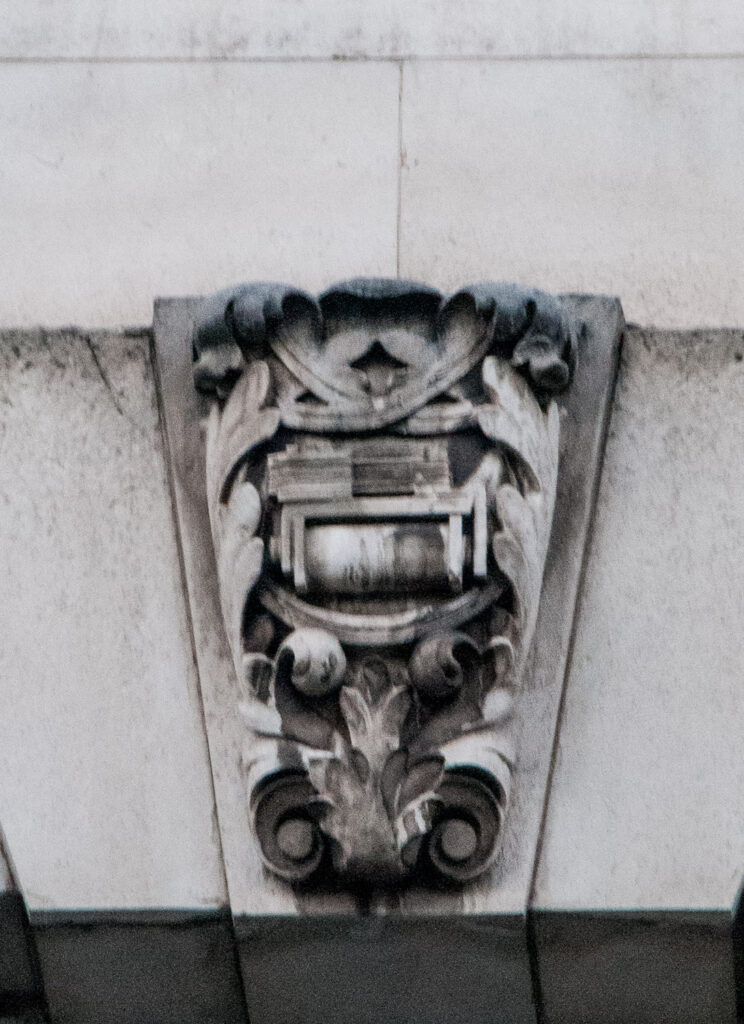
A Horse Shoe Magnet …
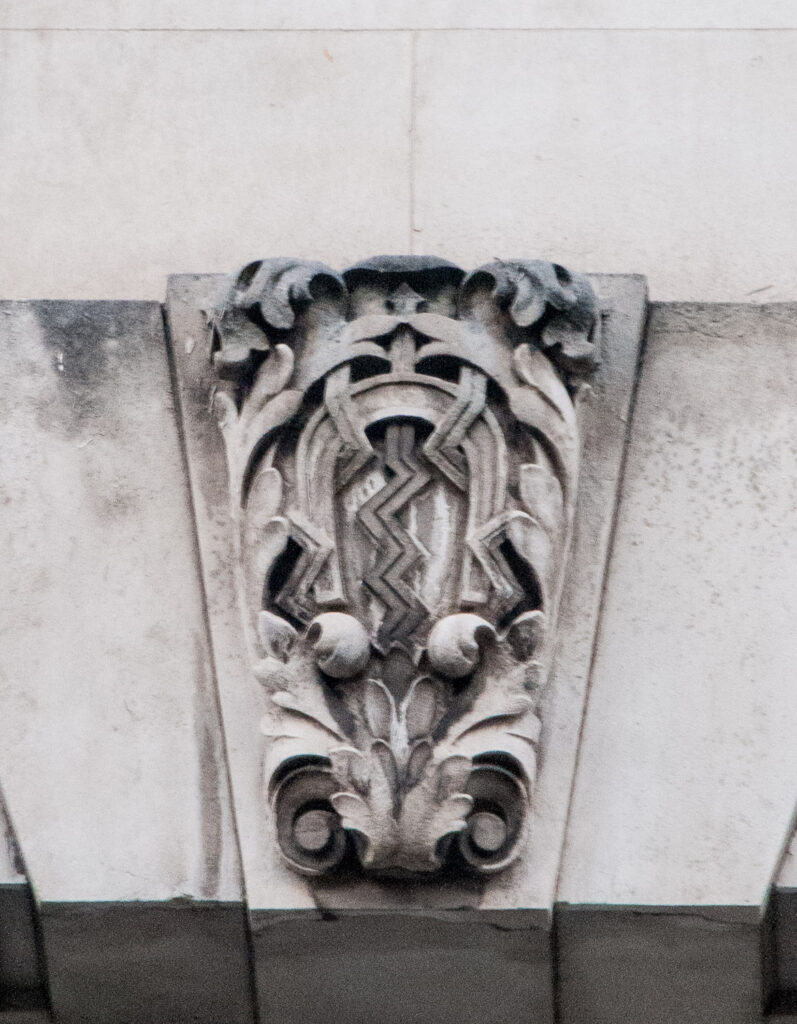
The imposing entrance doors are sadly defaced with signage …
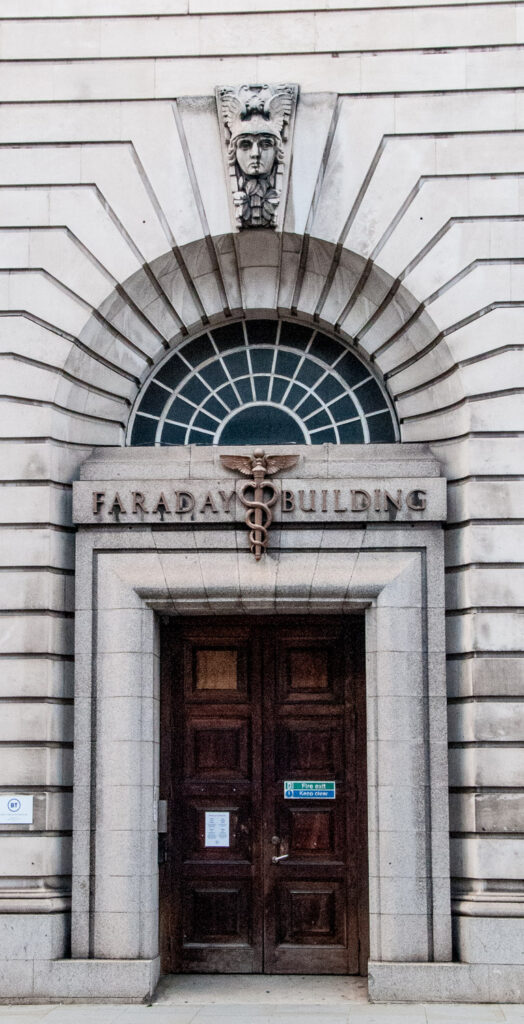
There are two nice places to sit down and rest.
The first I would recommend is the Cleary Garden (EC4V 2AR) …
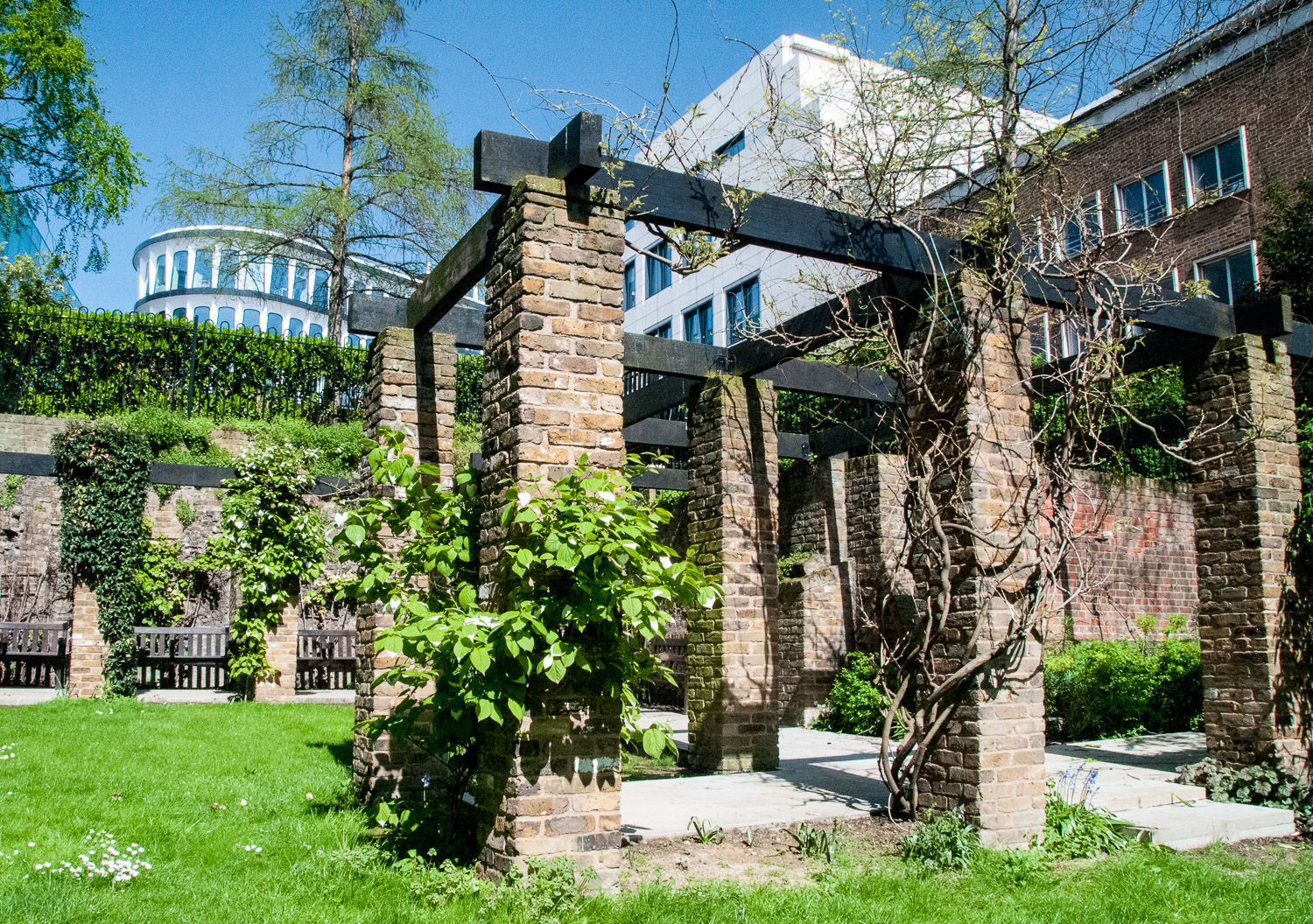
It is named after Fred Cleary who, during the 1970s, was instrumental in encouraging the planting of trees and the creation of new gardens throughout the square mile. During the blitz, the house which once stood here was destroyed exposing the cellars. A shoemaker called Joe Brandis decided that he would create a garden from the rubble, collecting mud from the river banks and transporting soil from his own garden in Walthamstow to the site. His success was such that on 29th July 1949 Queen Elizabeth the Queen Mother visited his handiwork.
My second recommendation, if you seek some refreshment in extraordinary surroundings, is the Black Friar pub (EC4V 4EG) …
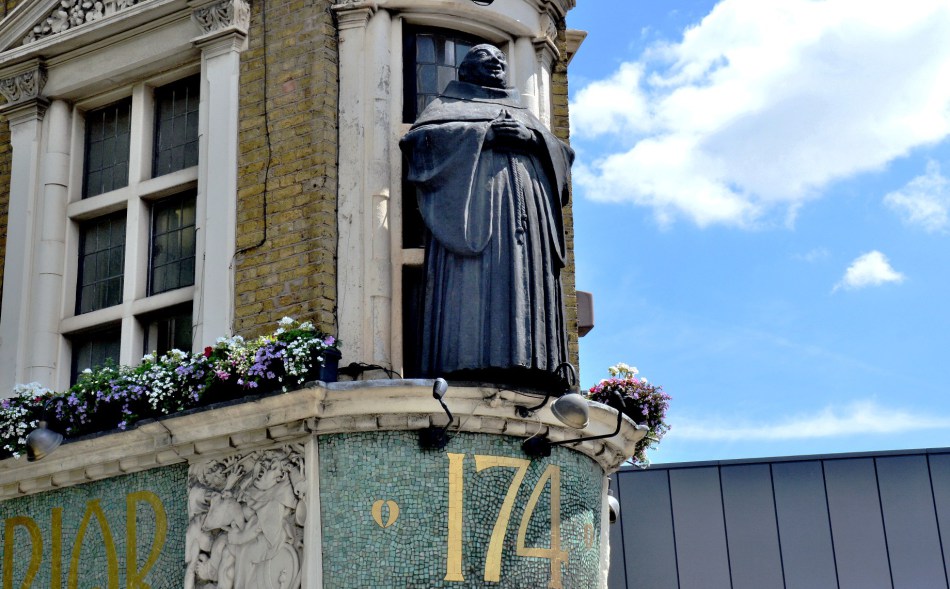
The interior is so amazing that I am going to write about it in more detail in a later blog dedicated to pubs. In the meantime, here are a few pictures to give you some idea of what to expect …
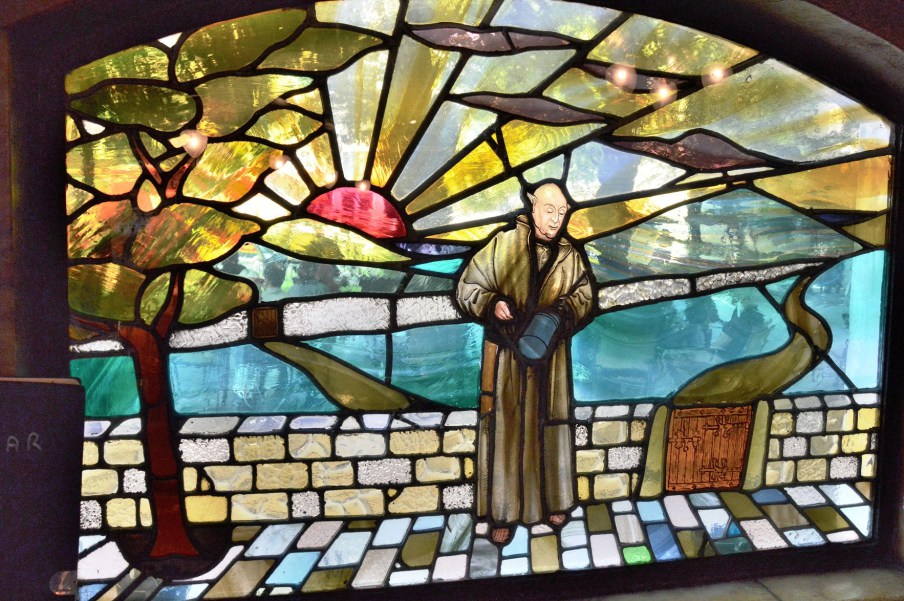
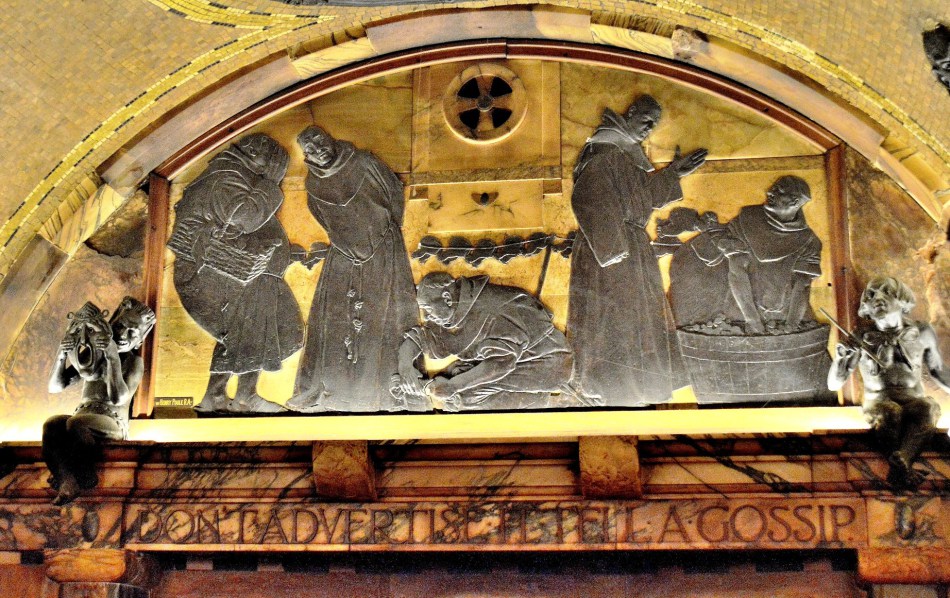
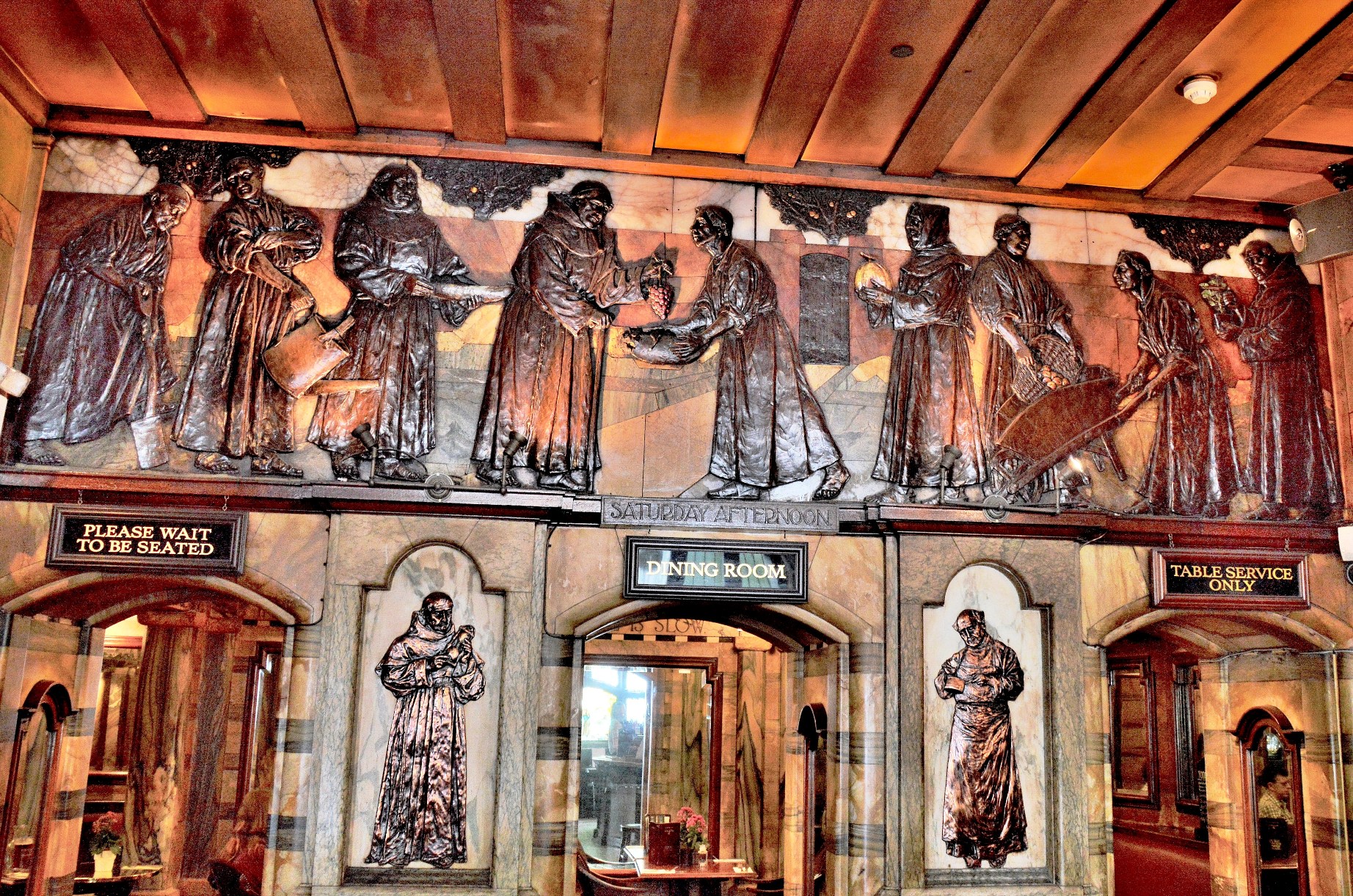
You can watch an interesting video about the pub and its history here.
And finally, it’s cute pigeon time. I saw this one dozing off whilst using a spotlight to dry his feathers and warm his bottom. He’s also managing to do this whilst balanced on one leg …
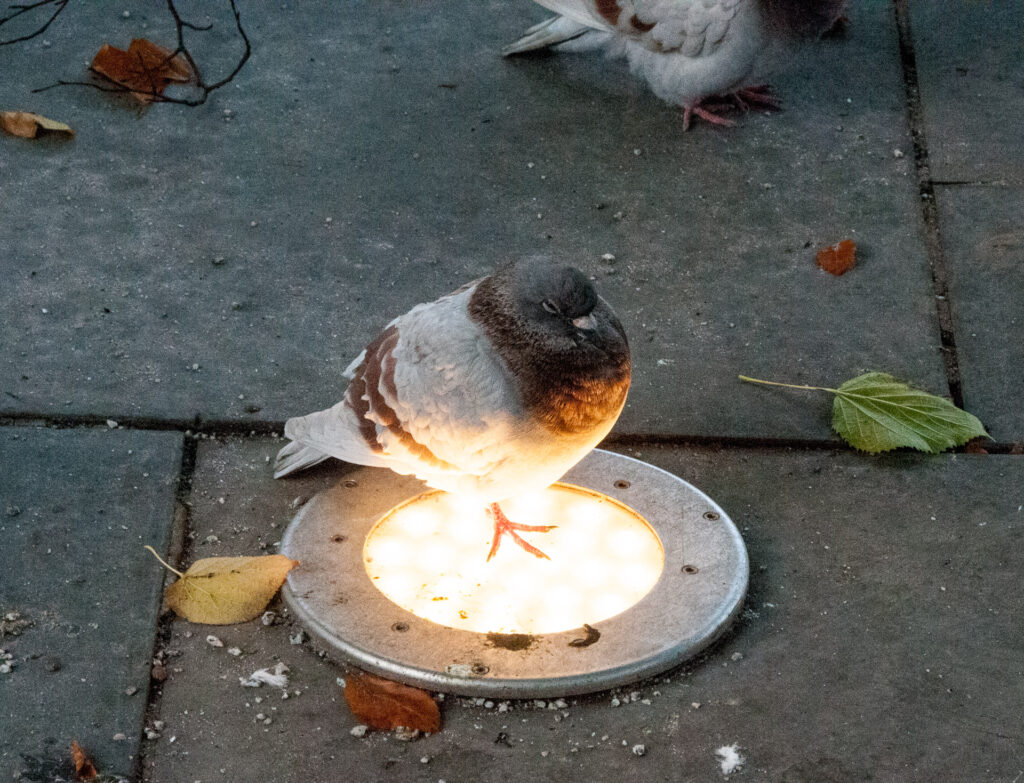
If you would like to follow me on Instagram here is the link …
